Quick filters:
Allah muhammad Stock Photos and Images
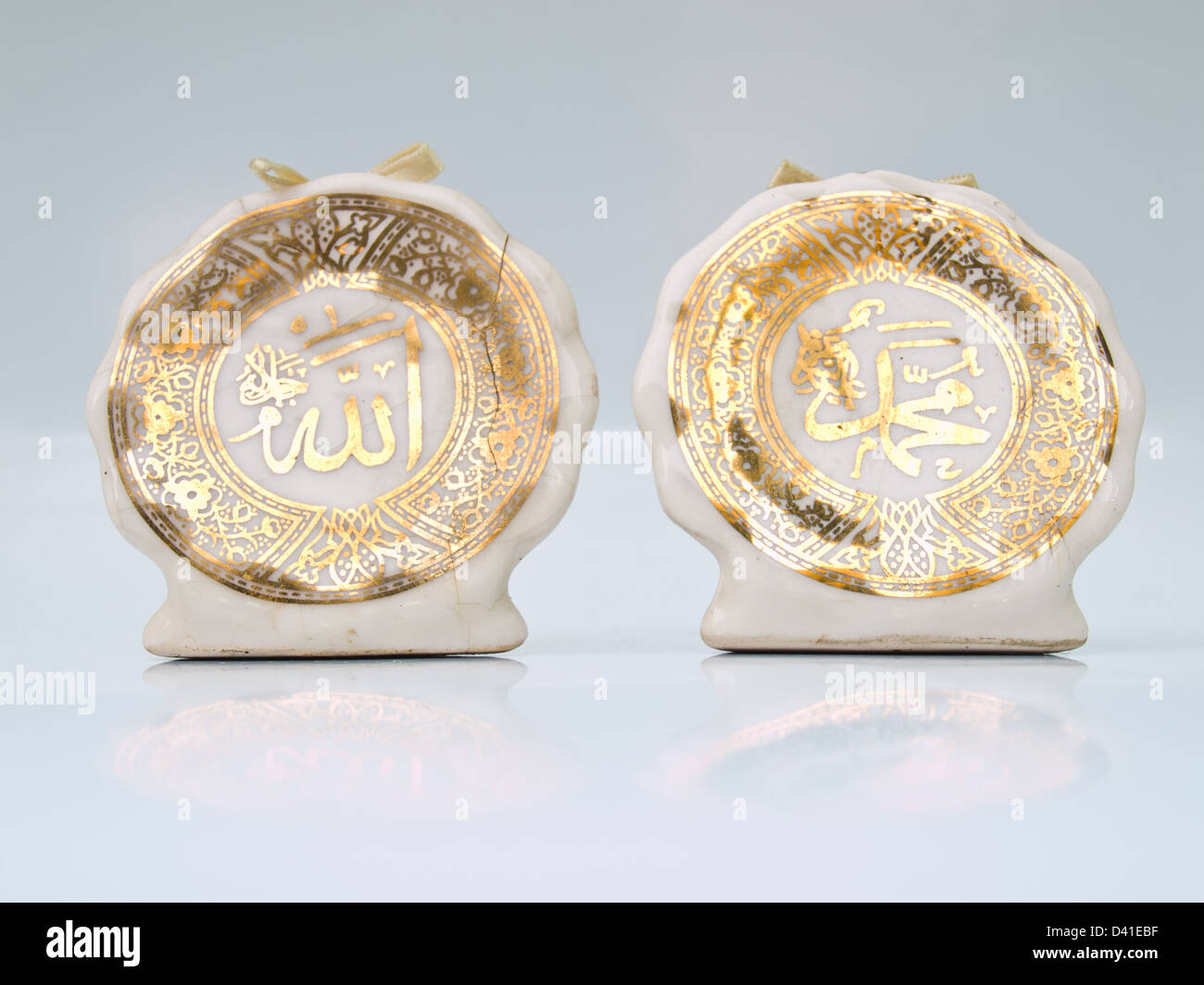 Arabic calligraphy of Allah (Islamic God) on the right and Prophet Muhammad transliterated as 'Muhammad Rasulullah Stock Photohttps://www.alamy.com/image-license-details/?v=1https://www.alamy.com/stock-photo-arabic-calligraphy-of-allah-islamic-god-on-the-right-and-prophet-muhammad-54122979.html
Arabic calligraphy of Allah (Islamic God) on the right and Prophet Muhammad transliterated as 'Muhammad Rasulullah Stock Photohttps://www.alamy.com/image-license-details/?v=1https://www.alamy.com/stock-photo-arabic-calligraphy-of-allah-islamic-god-on-the-right-and-prophet-muhammad-54122979.htmlRFD41EBF–Arabic calligraphy of Allah (Islamic God) on the right and Prophet Muhammad transliterated as 'Muhammad Rasulullah
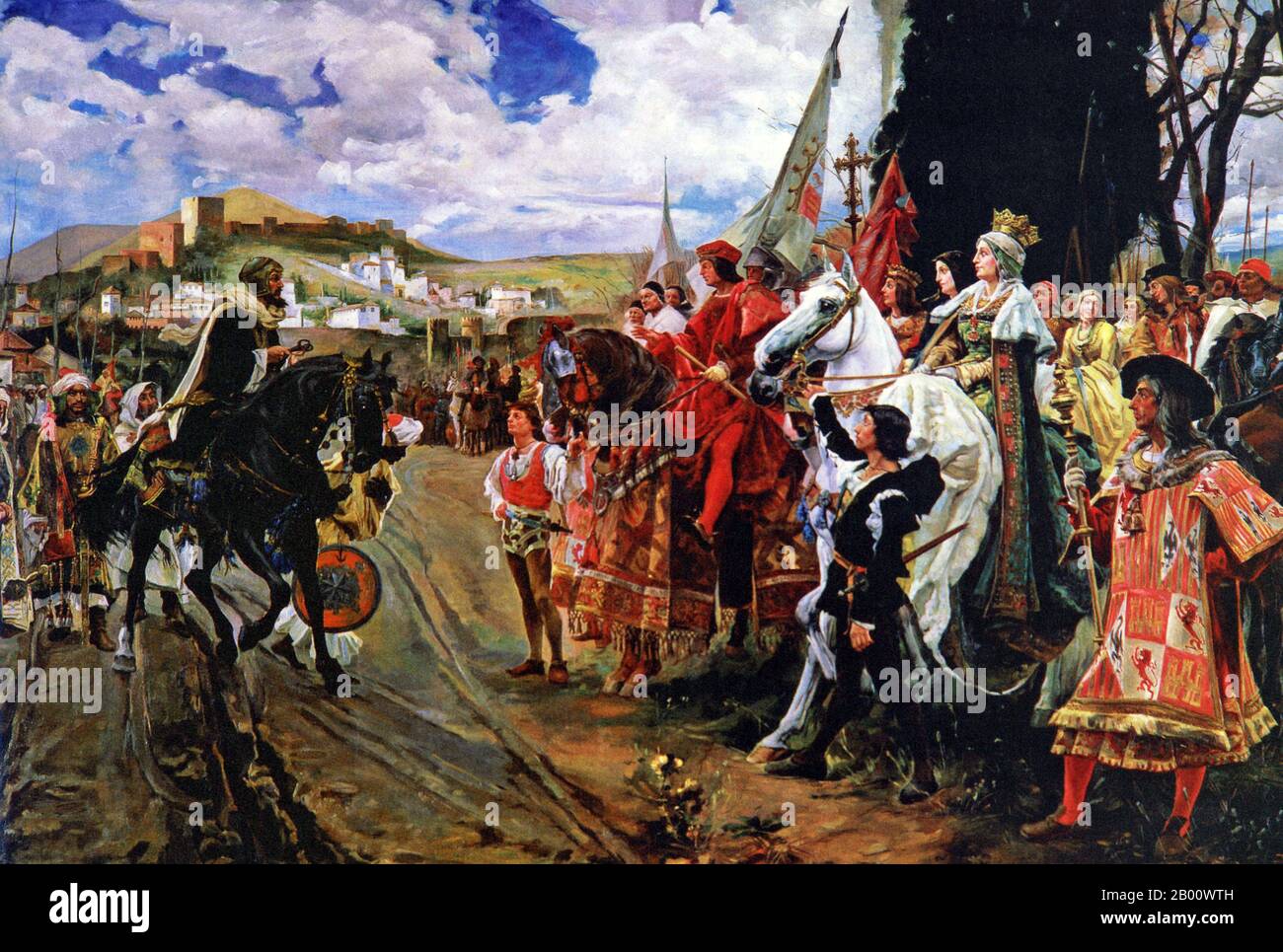 Spain/Maghreb: 'The Capitulation of Granada'. Oil on canvas painting by Francisco Pradilla Ortiz (1848-1921), 1882 Abu 'abd-Allah Muhammad XII (c. 1460- c. 1533), known as Boabdil, was the 22nd and last Nasrid ruler of Granada. In 1491, Muhammad XII was summoned by Ferdinand and Isabella to surrender the city of Granada, and on his refusal it was besieged by the Castilians. Eventually, on 2 January, 1492, Granada was surrendered. Boabdil handed the keys of Granada to Ferdinand along the banks of the Genil, marking the end of Arab rule in Spain. Stock Photohttps://www.alamy.com/image-license-details/?v=1https://www.alamy.com/spainmaghreb-the-capitulation-of-granada-oil-on-canvas-painting-by-francisco-pradilla-ortiz-1848-1921-1882-abu-abd-allah-muhammad-xii-c-1460-c-1533-known-as-boabdil-was-the-22nd-and-last-nasrid-ruler-of-granada-in-1491-muhammad-xii-was-summoned-by-ferdinand-and-isabella-to-surrender-the-city-of-granada-and-on-his-refusal-it-was-besieged-by-the-castilians-eventually-on-2-january-1492-granada-was-surrendered-boabdil-handed-the-keys-of-granada-to-ferdinand-along-the-banks-of-the-genil-marking-the-end-of-arab-rule-in-spain-image344227649.html
Spain/Maghreb: 'The Capitulation of Granada'. Oil on canvas painting by Francisco Pradilla Ortiz (1848-1921), 1882 Abu 'abd-Allah Muhammad XII (c. 1460- c. 1533), known as Boabdil, was the 22nd and last Nasrid ruler of Granada. In 1491, Muhammad XII was summoned by Ferdinand and Isabella to surrender the city of Granada, and on his refusal it was besieged by the Castilians. Eventually, on 2 January, 1492, Granada was surrendered. Boabdil handed the keys of Granada to Ferdinand along the banks of the Genil, marking the end of Arab rule in Spain. Stock Photohttps://www.alamy.com/image-license-details/?v=1https://www.alamy.com/spainmaghreb-the-capitulation-of-granada-oil-on-canvas-painting-by-francisco-pradilla-ortiz-1848-1921-1882-abu-abd-allah-muhammad-xii-c-1460-c-1533-known-as-boabdil-was-the-22nd-and-last-nasrid-ruler-of-granada-in-1491-muhammad-xii-was-summoned-by-ferdinand-and-isabella-to-surrender-the-city-of-granada-and-on-his-refusal-it-was-besieged-by-the-castilians-eventually-on-2-january-1492-granada-was-surrendered-boabdil-handed-the-keys-of-granada-to-ferdinand-along-the-banks-of-the-genil-marking-the-end-of-arab-rule-in-spain-image344227649.htmlRM2B00WTH–Spain/Maghreb: 'The Capitulation of Granada'. Oil on canvas painting by Francisco Pradilla Ortiz (1848-1921), 1882 Abu 'abd-Allah Muhammad XII (c. 1460- c. 1533), known as Boabdil, was the 22nd and last Nasrid ruler of Granada. In 1491, Muhammad XII was summoned by Ferdinand and Isabella to surrender the city of Granada, and on his refusal it was besieged by the Castilians. Eventually, on 2 January, 1492, Granada was surrendered. Boabdil handed the keys of Granada to Ferdinand along the banks of the Genil, marking the end of Arab rule in Spain.
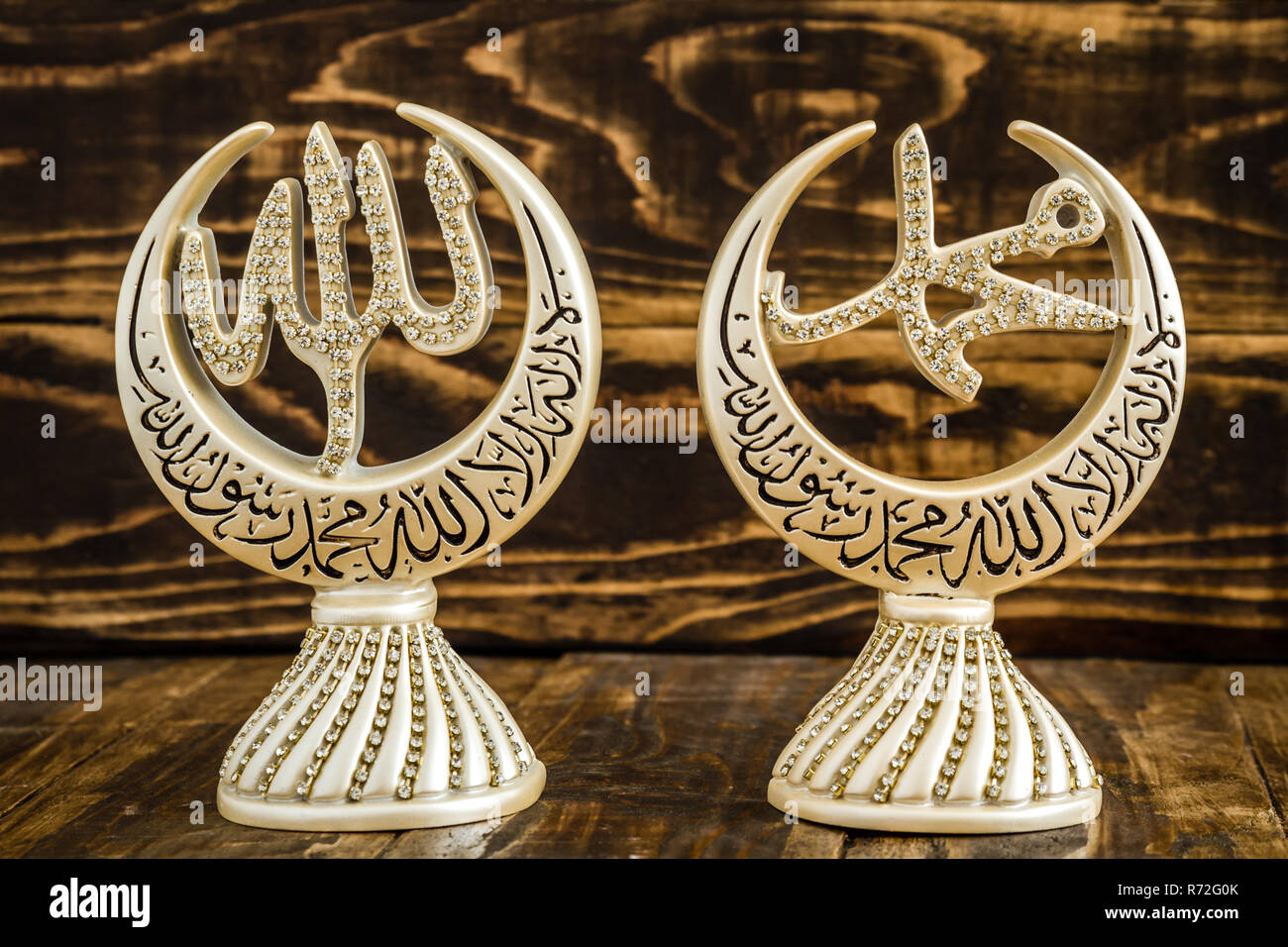 Islamic Sculpture Table Decor with Texts: Allah And Muhammad Stock Photohttps://www.alamy.com/image-license-details/?v=1https://www.alamy.com/islamic-sculpture-table-decor-with-texts-allah-and-muhammad-image228093843.html
Islamic Sculpture Table Decor with Texts: Allah And Muhammad Stock Photohttps://www.alamy.com/image-license-details/?v=1https://www.alamy.com/islamic-sculpture-table-decor-with-texts-allah-and-muhammad-image228093843.htmlRFR72G0K–Islamic Sculpture Table Decor with Texts: Allah And Muhammad
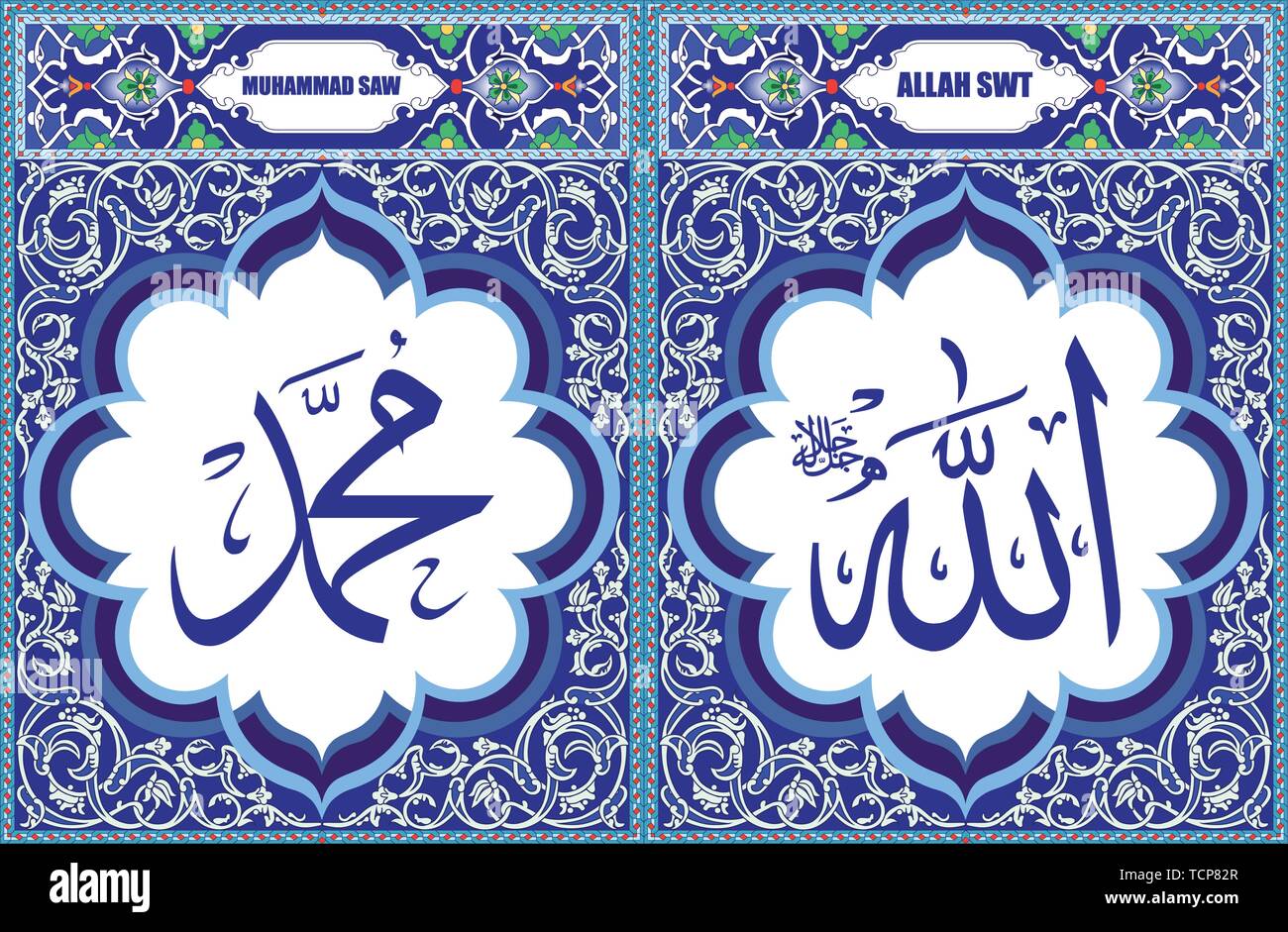 Allah & Muhammad Islamic Art decorating wall art Stock Vectorhttps://www.alamy.com/image-license-details/?v=1https://www.alamy.com/allah-muhammad-islamic-art-decorating-wall-art-image248810319.html
Allah & Muhammad Islamic Art decorating wall art Stock Vectorhttps://www.alamy.com/image-license-details/?v=1https://www.alamy.com/allah-muhammad-islamic-art-decorating-wall-art-image248810319.htmlRFTCP82R–Allah & Muhammad Islamic Art decorating wall art
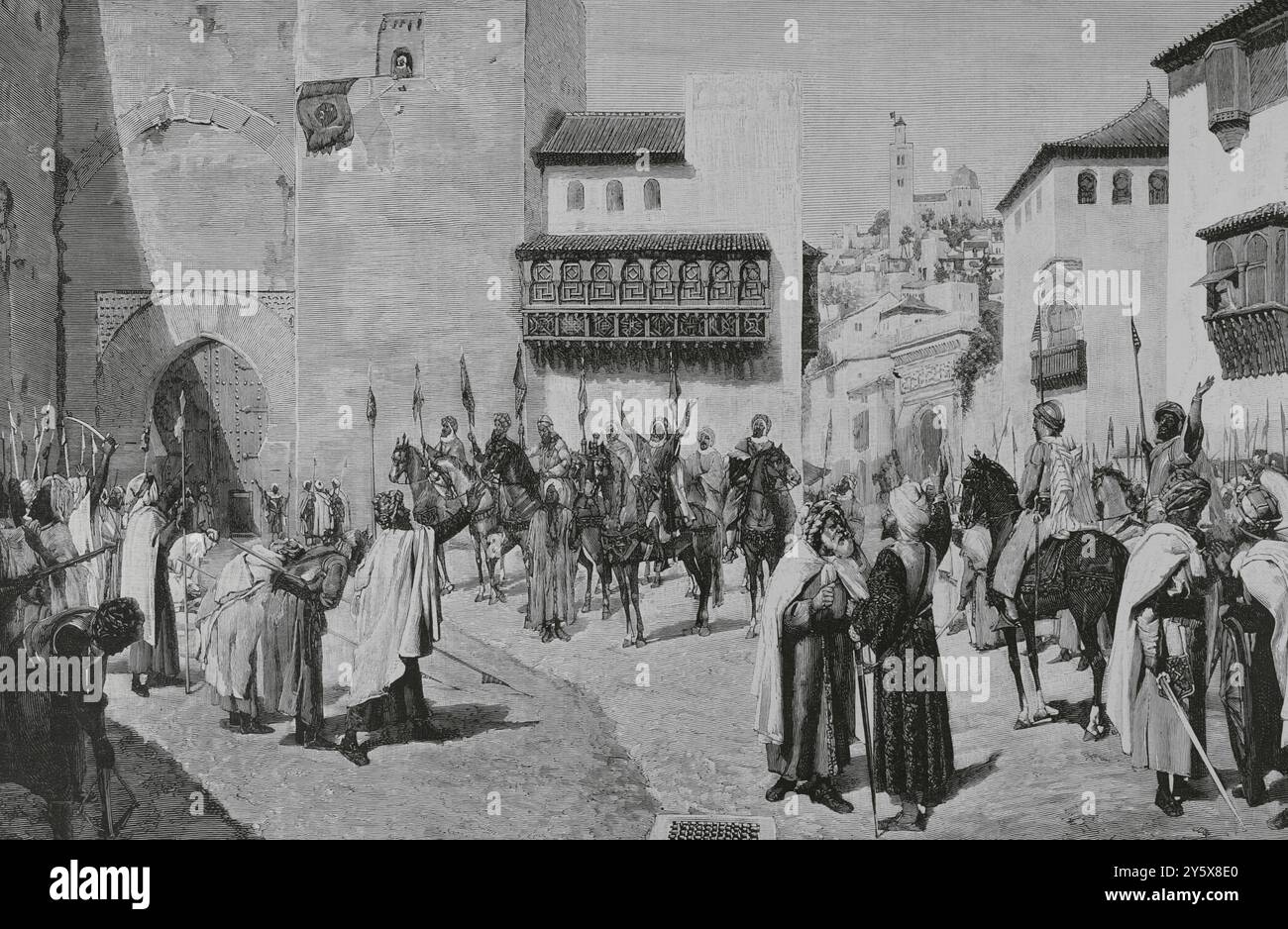 Abu Addallah Muhammad XII (1459-1533), known in Europe as Boabdil. Last Nasrid ruler of the Emirate of Granada in Iberia. His first reign was between 1482 and 1483; his second between 1487 and 1492. Proclamation of Boabdil in the Albaicín. Engraving by Tomás Carlos Capuz (1834-1899) after a painting by Plácido Francés (1834-1902). La Ilustración Española y Americana (The Spanish and American Illustration), June 15, 1884. Stock Photohttps://www.alamy.com/image-license-details/?v=1https://www.alamy.com/abu-addallah-muhammad-xii-1459-1533-known-in-europe-as-boabdil-last-nasrid-ruler-of-the-emirate-of-granada-in-iberia-his-first-reign-was-between-1482-and-1483-his-second-between-1487-and-1492-proclamation-of-boabdil-in-the-albaicn-engraving-by-toms-carlos-capuz-1834-1899-after-a-painting-by-plcido-francs-1834-1902-la-ilustracin-espaola-y-americana-the-spanish-and-american-illustration-june-15-1884-image623223944.html
Abu Addallah Muhammad XII (1459-1533), known in Europe as Boabdil. Last Nasrid ruler of the Emirate of Granada in Iberia. His first reign was between 1482 and 1483; his second between 1487 and 1492. Proclamation of Boabdil in the Albaicín. Engraving by Tomás Carlos Capuz (1834-1899) after a painting by Plácido Francés (1834-1902). La Ilustración Española y Americana (The Spanish and American Illustration), June 15, 1884. Stock Photohttps://www.alamy.com/image-license-details/?v=1https://www.alamy.com/abu-addallah-muhammad-xii-1459-1533-known-in-europe-as-boabdil-last-nasrid-ruler-of-the-emirate-of-granada-in-iberia-his-first-reign-was-between-1482-and-1483-his-second-between-1487-and-1492-proclamation-of-boabdil-in-the-albaicn-engraving-by-toms-carlos-capuz-1834-1899-after-a-painting-by-plcido-francs-1834-1902-la-ilustracin-espaola-y-americana-the-spanish-and-american-illustration-june-15-1884-image623223944.htmlRM2Y5X8E0–Abu Addallah Muhammad XII (1459-1533), known in Europe as Boabdil. Last Nasrid ruler of the Emirate of Granada in Iberia. His first reign was between 1482 and 1483; his second between 1487 and 1492. Proclamation of Boabdil in the Albaicín. Engraving by Tomás Carlos Capuz (1834-1899) after a painting by Plácido Francés (1834-1902). La Ilustración Española y Americana (The Spanish and American Illustration), June 15, 1884.
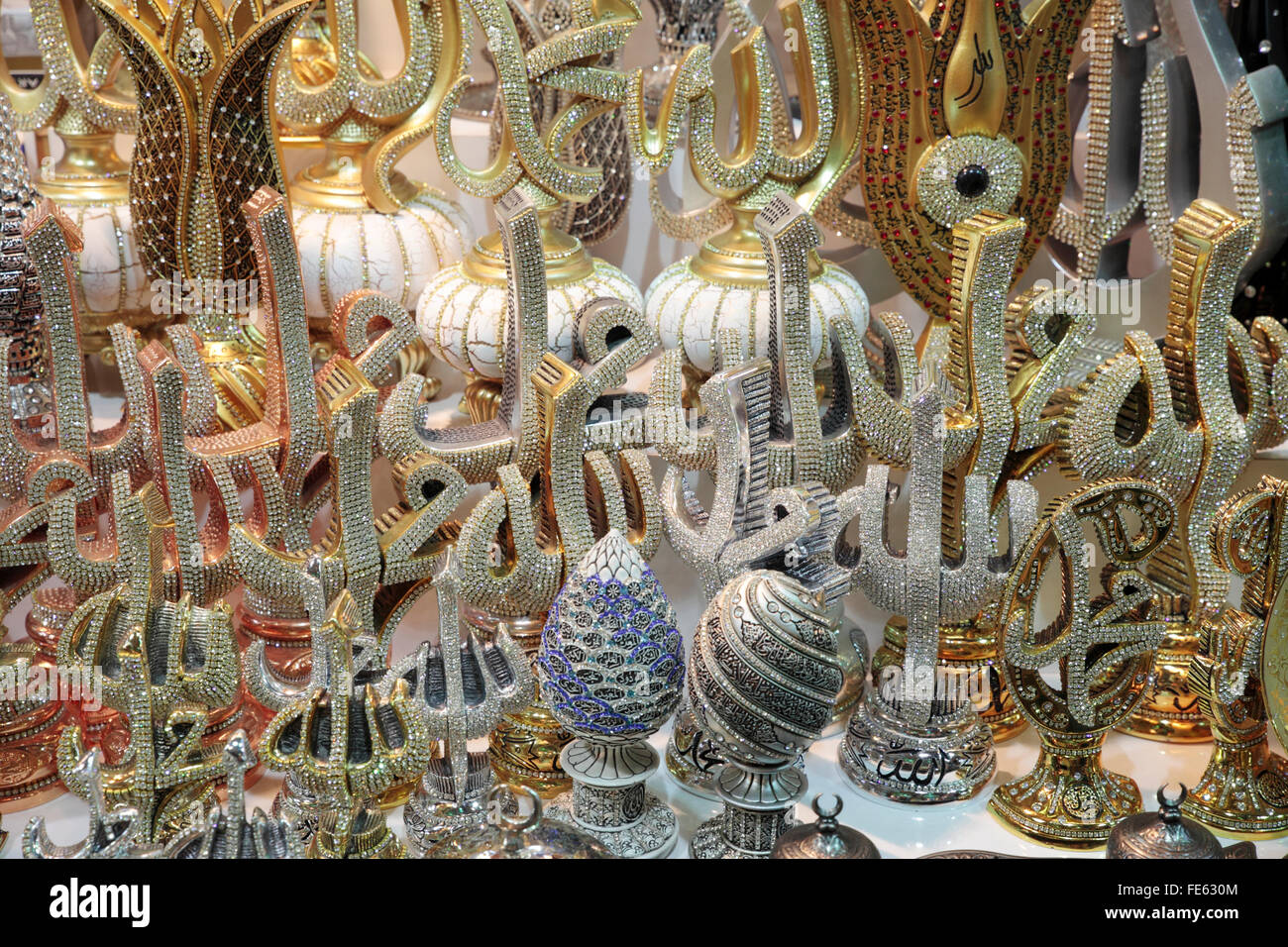 Allah & Muhammad Islamic Ornaments, Istanbul, Turkey Stock Photohttps://www.alamy.com/image-license-details/?v=1https://www.alamy.com/stock-photo-allah-muhammad-islamic-ornaments-istanbul-turkey-94791108.html
Allah & Muhammad Islamic Ornaments, Istanbul, Turkey Stock Photohttps://www.alamy.com/image-license-details/?v=1https://www.alamy.com/stock-photo-allah-muhammad-islamic-ornaments-istanbul-turkey-94791108.htmlRMFE630M–Allah & Muhammad Islamic Ornaments, Istanbul, Turkey
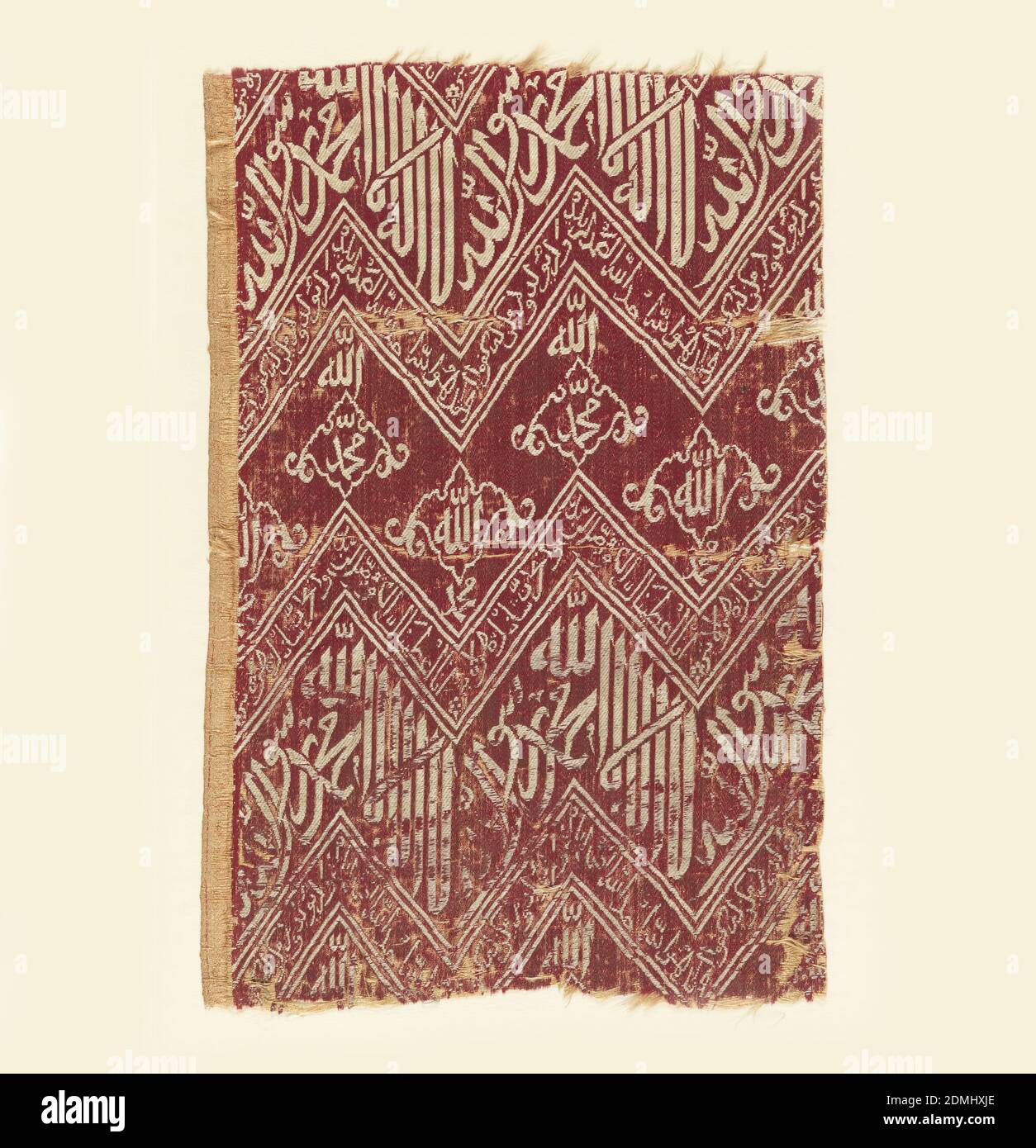 Textile, Medium: silk Technique: compound satin Label: silk compound satin, Fragment of woven silk with zigzag bands of Kufic script in white on a red ground. The inscriptions are translated as (top to bottom):, There is no god but Allah, Muhammad is the prophet of God (repeated), Say: He is God alone: God the Eternal! He begetteth not and is not begotten; and there is none like unto him, Allah (repeated) Muhammad (repeated), Truly we have given thee an abundance; Pray therefore to the Lord, and slay the victims. Verily whoso hateth thee shall be childless, Turkey, 16th–17th century, woven Stock Photohttps://www.alamy.com/image-license-details/?v=1https://www.alamy.com/textile-medium-silk-technique-compound-satin-label-silk-compound-satin-fragment-of-woven-silk-with-zigzag-bands-of-kufic-script-in-white-on-a-red-ground-the-inscriptions-are-translated-as-top-to-bottom-there-is-no-god-but-allah-muhammad-is-the-prophet-of-god-repeated-say-he-is-god-alone-god-the-eternal!-he-begetteth-not-and-is-not-begotten-and-there-is-none-like-unto-him-allah-repeated-muhammad-repeated-truly-we-have-given-thee-an-abundance-pray-therefore-to-the-lord-and-slay-the-victims-verily-whoso-hateth-thee-shall-be-childless-turkey-16th17th-century-woven-image391315302.html
Textile, Medium: silk Technique: compound satin Label: silk compound satin, Fragment of woven silk with zigzag bands of Kufic script in white on a red ground. The inscriptions are translated as (top to bottom):, There is no god but Allah, Muhammad is the prophet of God (repeated), Say: He is God alone: God the Eternal! He begetteth not and is not begotten; and there is none like unto him, Allah (repeated) Muhammad (repeated), Truly we have given thee an abundance; Pray therefore to the Lord, and slay the victims. Verily whoso hateth thee shall be childless, Turkey, 16th–17th century, woven Stock Photohttps://www.alamy.com/image-license-details/?v=1https://www.alamy.com/textile-medium-silk-technique-compound-satin-label-silk-compound-satin-fragment-of-woven-silk-with-zigzag-bands-of-kufic-script-in-white-on-a-red-ground-the-inscriptions-are-translated-as-top-to-bottom-there-is-no-god-but-allah-muhammad-is-the-prophet-of-god-repeated-say-he-is-god-alone-god-the-eternal!-he-begetteth-not-and-is-not-begotten-and-there-is-none-like-unto-him-allah-repeated-muhammad-repeated-truly-we-have-given-thee-an-abundance-pray-therefore-to-the-lord-and-slay-the-victims-verily-whoso-hateth-thee-shall-be-childless-turkey-16th17th-century-woven-image391315302.htmlRM2DMHXJE–Textile, Medium: silk Technique: compound satin Label: silk compound satin, Fragment of woven silk with zigzag bands of Kufic script in white on a red ground. The inscriptions are translated as (top to bottom):, There is no god but Allah, Muhammad is the prophet of God (repeated), Say: He is God alone: God the Eternal! He begetteth not and is not begotten; and there is none like unto him, Allah (repeated) Muhammad (repeated), Truly we have given thee an abundance; Pray therefore to the Lord, and slay the victims. Verily whoso hateth thee shall be childless, Turkey, 16th–17th century, woven
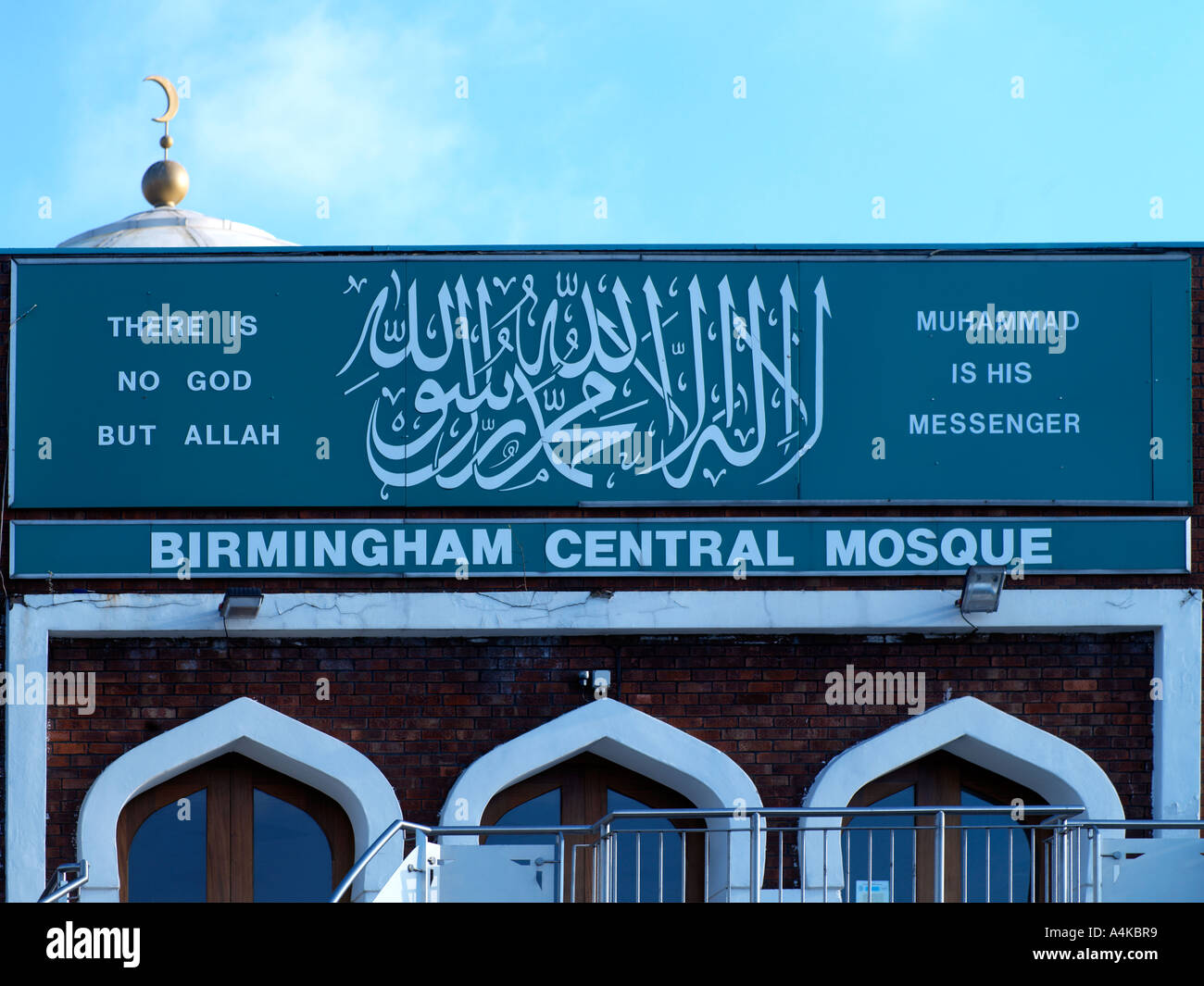 Birmingham West Midlands England Birmingham Central Mosque There is no God but Allah Muhammad is his Messenger Stock Photohttps://www.alamy.com/image-license-details/?v=1https://www.alamy.com/birmingham-west-midlands-england-birmingham-central-mosque-there-is-image6326200.html
Birmingham West Midlands England Birmingham Central Mosque There is no God but Allah Muhammad is his Messenger Stock Photohttps://www.alamy.com/image-license-details/?v=1https://www.alamy.com/birmingham-west-midlands-england-birmingham-central-mosque-there-is-image6326200.htmlRMA4KBR9–Birmingham West Midlands England Birmingham Central Mosque There is no God but Allah Muhammad is his Messenger
 Textile. Research in ProgressFragment of woven silk with zigzag bands of Kufic script in white on a red ground. The inscriptions are translated as (top to bottom):There is no god but Allah, Muhammad is the prophjet of God (repeated)Say: He is God alone: God the Eternal! Textile Stock Photohttps://www.alamy.com/image-license-details/?v=1https://www.alamy.com/textile-research-in-progressfragment-of-woven-silk-with-zigzag-bands-of-kufic-script-in-white-on-a-red-ground-the-inscriptions-are-translated-as-top-to-bottomthere-is-no-god-but-allah-muhammad-is-the-prophjet-of-god-repeatedsay-he-is-god-alone-god-the-eternal!-textile-image352222257.html
Textile. Research in ProgressFragment of woven silk with zigzag bands of Kufic script in white on a red ground. The inscriptions are translated as (top to bottom):There is no god but Allah, Muhammad is the prophjet of God (repeated)Say: He is God alone: God the Eternal! Textile Stock Photohttps://www.alamy.com/image-license-details/?v=1https://www.alamy.com/textile-research-in-progressfragment-of-woven-silk-with-zigzag-bands-of-kufic-script-in-white-on-a-red-ground-the-inscriptions-are-translated-as-top-to-bottomthere-is-no-god-but-allah-muhammad-is-the-prophjet-of-god-repeatedsay-he-is-god-alone-god-the-eternal!-textile-image352222257.htmlRM2BD1329–Textile. Research in ProgressFragment of woven silk with zigzag bands of Kufic script in white on a red ground. The inscriptions are translated as (top to bottom):There is no god but Allah, Muhammad is the prophjet of God (repeated)Say: He is God alone: God the Eternal! Textile
 Hagia Sophia, Istanbul, Turkey Stock Photohttps://www.alamy.com/image-license-details/?v=1https://www.alamy.com/stock-photo-hagia-sophia-istanbul-turkey-56234968.html
Hagia Sophia, Istanbul, Turkey Stock Photohttps://www.alamy.com/image-license-details/?v=1https://www.alamy.com/stock-photo-hagia-sophia-istanbul-turkey-56234968.htmlRFD7DM7M–Hagia Sophia, Istanbul, Turkey
 Young Man Staring at the Arabic Calligraphy meaning 'Prophet Muhammad' on the Wall of old Edirne Mosque Stock Photohttps://www.alamy.com/image-license-details/?v=1https://www.alamy.com/young-man-staring-at-the-arabic-calligraphy-meaning-prophet-muhammad-on-the-wall-of-old-edirne-mosque-image383902446.html
Young Man Staring at the Arabic Calligraphy meaning 'Prophet Muhammad' on the Wall of old Edirne Mosque Stock Photohttps://www.alamy.com/image-license-details/?v=1https://www.alamy.com/young-man-staring-at-the-arabic-calligraphy-meaning-prophet-muhammad-on-the-wall-of-old-edirne-mosque-image383902446.htmlRF2D8G7DJ–Young Man Staring at the Arabic Calligraphy meaning 'Prophet Muhammad' on the Wall of old Edirne Mosque
 Annual Muslim Day Parade, New York City, 2012. Stock Photohttps://www.alamy.com/image-license-details/?v=1https://www.alamy.com/annual-muslim-day-parade-new-york-city-2012-image336731293.html
Annual Muslim Day Parade, New York City, 2012. Stock Photohttps://www.alamy.com/image-license-details/?v=1https://www.alamy.com/annual-muslim-day-parade-new-york-city-2012-image336731293.htmlRM2AFRC5H–Annual Muslim Day Parade, New York City, 2012.
 Two Holy Quran Stacked Close Up Stock Photohttps://www.alamy.com/image-license-details/?v=1https://www.alamy.com/two-holy-quran-stacked-close-up-image457573981.html
Two Holy Quran Stacked Close Up Stock Photohttps://www.alamy.com/image-license-details/?v=1https://www.alamy.com/two-holy-quran-stacked-close-up-image457573981.htmlRF2HGC87W–Two Holy Quran Stacked Close Up
 The national flag of Saudi Arabia. The text is the Shahada or Muslim creed written in the Thuluth script. It says ‘There is no god but Allah. Muhammad Stock Photohttps://www.alamy.com/image-license-details/?v=1https://www.alamy.com/the-national-flag-of-saudi-arabia-the-text-is-the-shahada-or-muslim-creed-written-in-the-thuluth-script-it-says-there-is-no-god-but-allah-muhammad-image441322881.html
The national flag of Saudi Arabia. The text is the Shahada or Muslim creed written in the Thuluth script. It says ‘There is no god but Allah. Muhammad Stock Photohttps://www.alamy.com/image-license-details/?v=1https://www.alamy.com/the-national-flag-of-saudi-arabia-the-text-is-the-shahada-or-muslim-creed-written-in-the-thuluth-script-it-says-there-is-no-god-but-allah-muhammad-image441322881.htmlRF2GHYYRD–The national flag of Saudi Arabia. The text is the Shahada or Muslim creed written in the Thuluth script. It says ‘There is no god but Allah. Muhammad
 PAKISTAN-Islamabad 21st 4, 2023, Arab calligraphy 'Basmala'on the wall of the mosque in Side. Text in Arabic: 'In the name of God, the Most Gracious, Stock Photohttps://www.alamy.com/image-license-details/?v=1https://www.alamy.com/pakistan-islamabad-21st-4-2023-arab-calligraphy-basmalaon-the-wall-of-the-mosque-in-side-text-in-arabic-in-the-name-of-god-the-most-gracious-image547252831.html
PAKISTAN-Islamabad 21st 4, 2023, Arab calligraphy 'Basmala'on the wall of the mosque in Side. Text in Arabic: 'In the name of God, the Most Gracious, Stock Photohttps://www.alamy.com/image-license-details/?v=1https://www.alamy.com/pakistan-islamabad-21st-4-2023-arab-calligraphy-basmalaon-the-wall-of-the-mosque-in-side-text-in-arabic-in-the-name-of-god-the-most-gracious-image547252831.htmlRF2PP9EFY–PAKISTAN-Islamabad 21st 4, 2023, Arab calligraphy 'Basmala'on the wall of the mosque in Side. Text in Arabic: 'In the name of God, the Most Gracious,
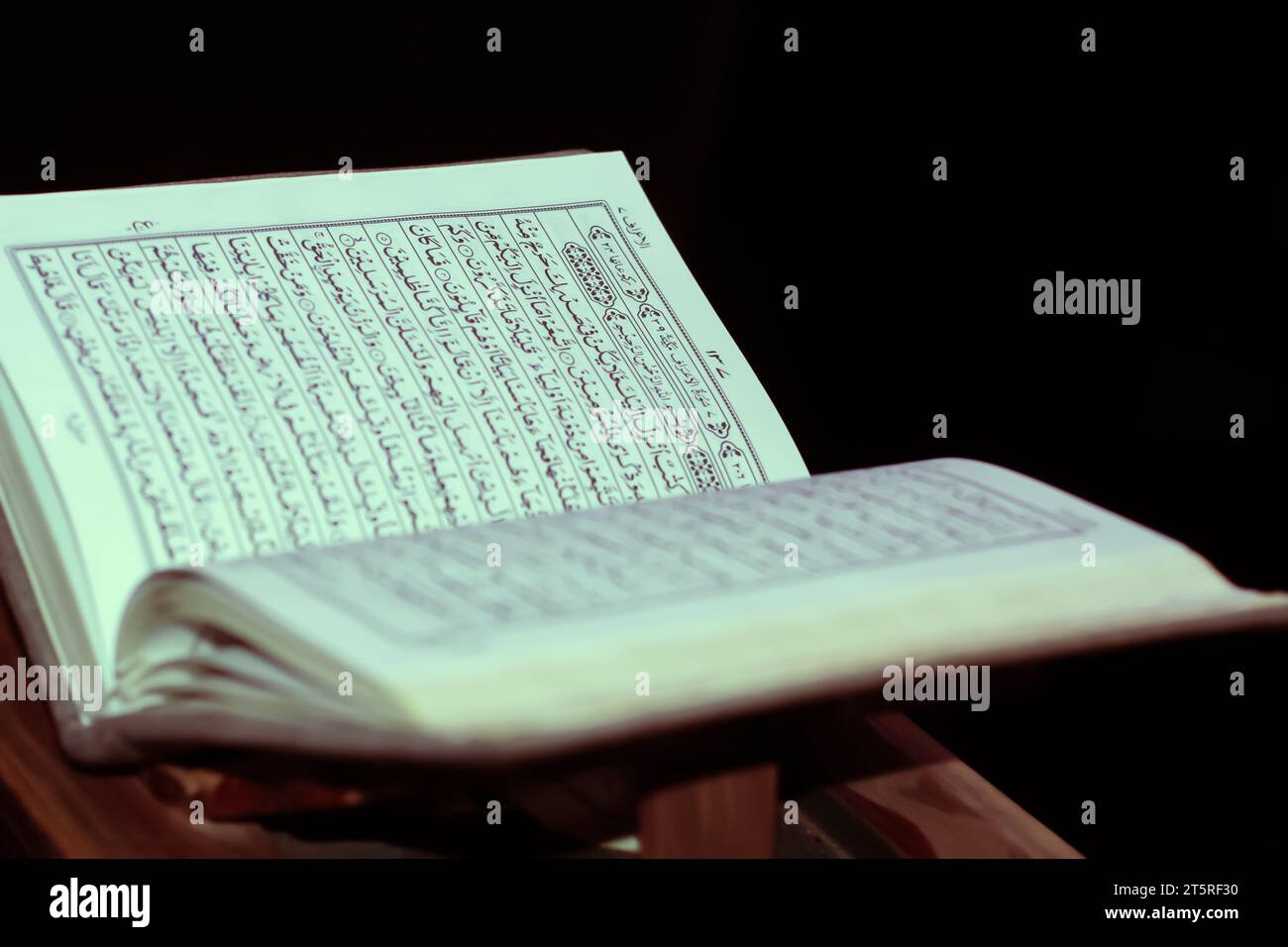 Quran open with black background verse al aaraaf Stock Photohttps://www.alamy.com/image-license-details/?v=1https://www.alamy.com/quran-open-with-black-background-verse-al-aaraaf-image571532164.html
Quran open with black background verse al aaraaf Stock Photohttps://www.alamy.com/image-license-details/?v=1https://www.alamy.com/quran-open-with-black-background-verse-al-aaraaf-image571532164.htmlRF2T5RF30–Quran open with black background verse al aaraaf
 Beautiful mosques in the mountains Stock Photohttps://www.alamy.com/image-license-details/?v=1https://www.alamy.com/beautiful-mosques-in-the-mountains-image551947990.html
Beautiful mosques in the mountains Stock Photohttps://www.alamy.com/image-license-details/?v=1https://www.alamy.com/beautiful-mosques-in-the-mountains-image551947990.htmlRF2R1YB86–Beautiful mosques in the mountains
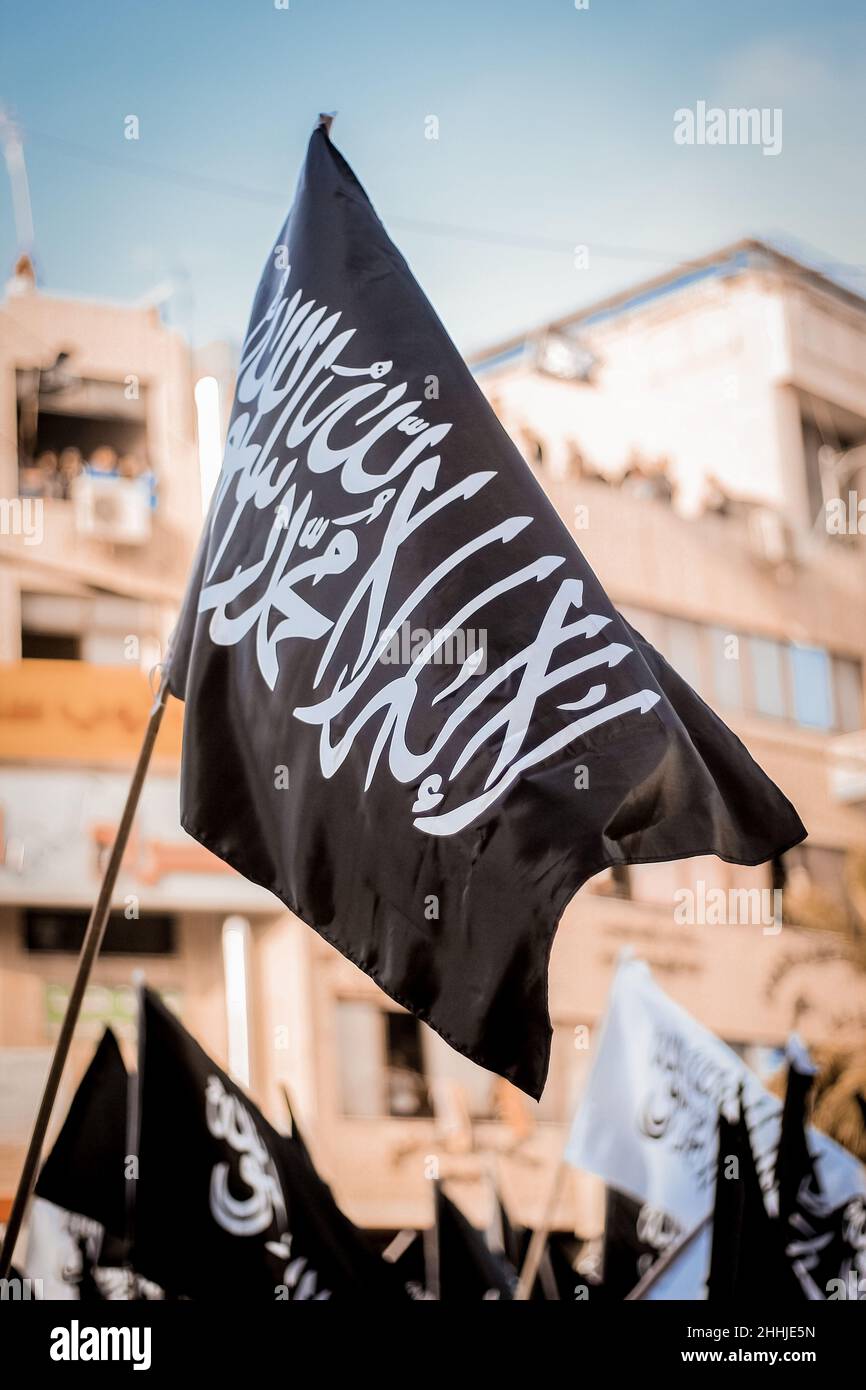 The Raya or 'black flag' of Jihad This Islamic flag also called 'Black Banner' also the Khilafah state hizb al tahrir Stock Photohttps://www.alamy.com/image-license-details/?v=1https://www.alamy.com/the-raya-or-black-flag-of-jihad-this-islamic-flag-also-called-black-banner-also-the-khilafah-state-hizb-al-tahrir-image458324993.html
The Raya or 'black flag' of Jihad This Islamic flag also called 'Black Banner' also the Khilafah state hizb al tahrir Stock Photohttps://www.alamy.com/image-license-details/?v=1https://www.alamy.com/the-raya-or-black-flag-of-jihad-this-islamic-flag-also-called-black-banner-also-the-khilafah-state-hizb-al-tahrir-image458324993.htmlRF2HHJE5N–The Raya or 'black flag' of Jihad This Islamic flag also called 'Black Banner' also the Khilafah state hizb al tahrir
 Muslim lady wearing a red abayas passes the Hassan 2 mosque in Morocco,its the worlds second largest islamic place of worship Stock Photohttps://www.alamy.com/image-license-details/?v=1https://www.alamy.com/stock-photo-muslim-lady-wearing-a-red-abayas-passes-the-hassan-2-mosque-in-moroccoits-15769747.html
Muslim lady wearing a red abayas passes the Hassan 2 mosque in Morocco,its the worlds second largest islamic place of worship Stock Photohttps://www.alamy.com/image-license-details/?v=1https://www.alamy.com/stock-photo-muslim-lady-wearing-a-red-abayas-passes-the-hassan-2-mosque-in-moroccoits-15769747.htmlRMAPETCM–Muslim lady wearing a red abayas passes the Hassan 2 mosque in Morocco,its the worlds second largest islamic place of worship
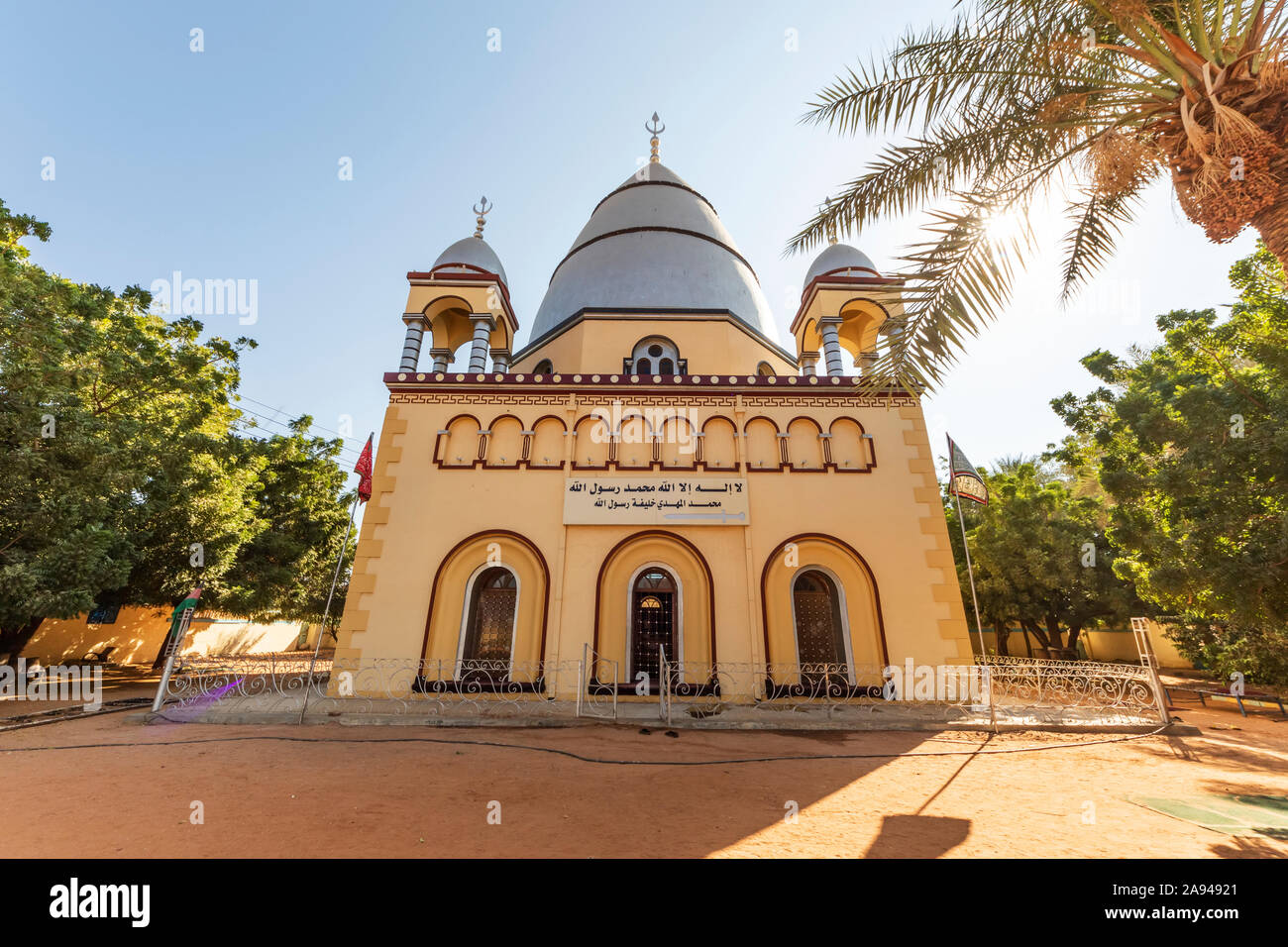 Tomb of Muhammad Ahmad bin Abd Allah, the Mahdi; Omdurman, Khartoum, Sudan Stock Photohttps://www.alamy.com/image-license-details/?v=1https://www.alamy.com/tomb-of-muhammad-ahmad-bin-abd-allah-the-mahdi-omdurman-khartoum-sudan-image332623817.html
Tomb of Muhammad Ahmad bin Abd Allah, the Mahdi; Omdurman, Khartoum, Sudan Stock Photohttps://www.alamy.com/image-license-details/?v=1https://www.alamy.com/tomb-of-muhammad-ahmad-bin-abd-allah-the-mahdi-omdurman-khartoum-sudan-image332623817.htmlRF2A94921–Tomb of Muhammad Ahmad bin Abd Allah, the Mahdi; Omdurman, Khartoum, Sudan
 Spain/Maghreb: 'The Capitulation of Granada'. Oil on canvas painting by Francisco Pradilla Ortiz (1848-1921), 1882. Abu 'abd-Allah Muhammad XII (c. 1460- c. 1533), known as Boabdil, was the 22nd and last Nasrid ruler of Granada. In 1491, Muhammad XII was summoned by Ferdinand and Isabella to surrender the city of Granada, and on his refusal it was besieged by the Castilians. Eventually, on 2 January, 1492, Granada was surrendered. Boabdil handed the keys of Granada to Ferdinand along the banks of the Genil, marking the end of Arab rule in Spain. Stock Photohttps://www.alamy.com/image-license-details/?v=1https://www.alamy.com/spainmaghreb-the-capitulation-of-granada-oil-on-canvas-painting-by-francisco-pradilla-ortiz-1848-1921-1882-abu-abd-allah-muhammad-xii-c-1460-c-1533-known-as-boabdil-was-the-22nd-and-last-nasrid-ruler-of-granada-in-1491-muhammad-xii-was-summoned-by-ferdinand-and-isabella-to-surrender-the-city-of-granada-and-on-his-refusal-it-was-besieged-by-the-castilians-eventually-on-2-january-1492-granada-was-surrendered-boabdil-handed-the-keys-of-granada-to-ferdinand-along-the-banks-of-the-genil-marking-the-end-of-arab-rule-in-spain-image436518402.html
Spain/Maghreb: 'The Capitulation of Granada'. Oil on canvas painting by Francisco Pradilla Ortiz (1848-1921), 1882. Abu 'abd-Allah Muhammad XII (c. 1460- c. 1533), known as Boabdil, was the 22nd and last Nasrid ruler of Granada. In 1491, Muhammad XII was summoned by Ferdinand and Isabella to surrender the city of Granada, and on his refusal it was besieged by the Castilians. Eventually, on 2 January, 1492, Granada was surrendered. Boabdil handed the keys of Granada to Ferdinand along the banks of the Genil, marking the end of Arab rule in Spain. Stock Photohttps://www.alamy.com/image-license-details/?v=1https://www.alamy.com/spainmaghreb-the-capitulation-of-granada-oil-on-canvas-painting-by-francisco-pradilla-ortiz-1848-1921-1882-abu-abd-allah-muhammad-xii-c-1460-c-1533-known-as-boabdil-was-the-22nd-and-last-nasrid-ruler-of-granada-in-1491-muhammad-xii-was-summoned-by-ferdinand-and-isabella-to-surrender-the-city-of-granada-and-on-his-refusal-it-was-besieged-by-the-castilians-eventually-on-2-january-1492-granada-was-surrendered-boabdil-handed-the-keys-of-granada-to-ferdinand-along-the-banks-of-the-genil-marking-the-end-of-arab-rule-in-spain-image436518402.htmlRM2GA53JX–Spain/Maghreb: 'The Capitulation of Granada'. Oil on canvas painting by Francisco Pradilla Ortiz (1848-1921), 1882. Abu 'abd-Allah Muhammad XII (c. 1460- c. 1533), known as Boabdil, was the 22nd and last Nasrid ruler of Granada. In 1491, Muhammad XII was summoned by Ferdinand and Isabella to surrender the city of Granada, and on his refusal it was besieged by the Castilians. Eventually, on 2 January, 1492, Granada was surrendered. Boabdil handed the keys of Granada to Ferdinand along the banks of the Genil, marking the end of Arab rule in Spain.
 Arabic calligraphy of Allah on the right and Prophet Muhammad transliterated as 'Muhammad Rasulullah on left Stock Photohttps://www.alamy.com/image-license-details/?v=1https://www.alamy.com/stock-photo-arabic-calligraphy-of-allah-on-the-right-and-prophet-muhammad-transliterated-54123071.html
Arabic calligraphy of Allah on the right and Prophet Muhammad transliterated as 'Muhammad Rasulullah on left Stock Photohttps://www.alamy.com/image-license-details/?v=1https://www.alamy.com/stock-photo-arabic-calligraphy-of-allah-on-the-right-and-prophet-muhammad-transliterated-54123071.htmlRFD41EER–Arabic calligraphy of Allah on the right and Prophet Muhammad transliterated as 'Muhammad Rasulullah on left
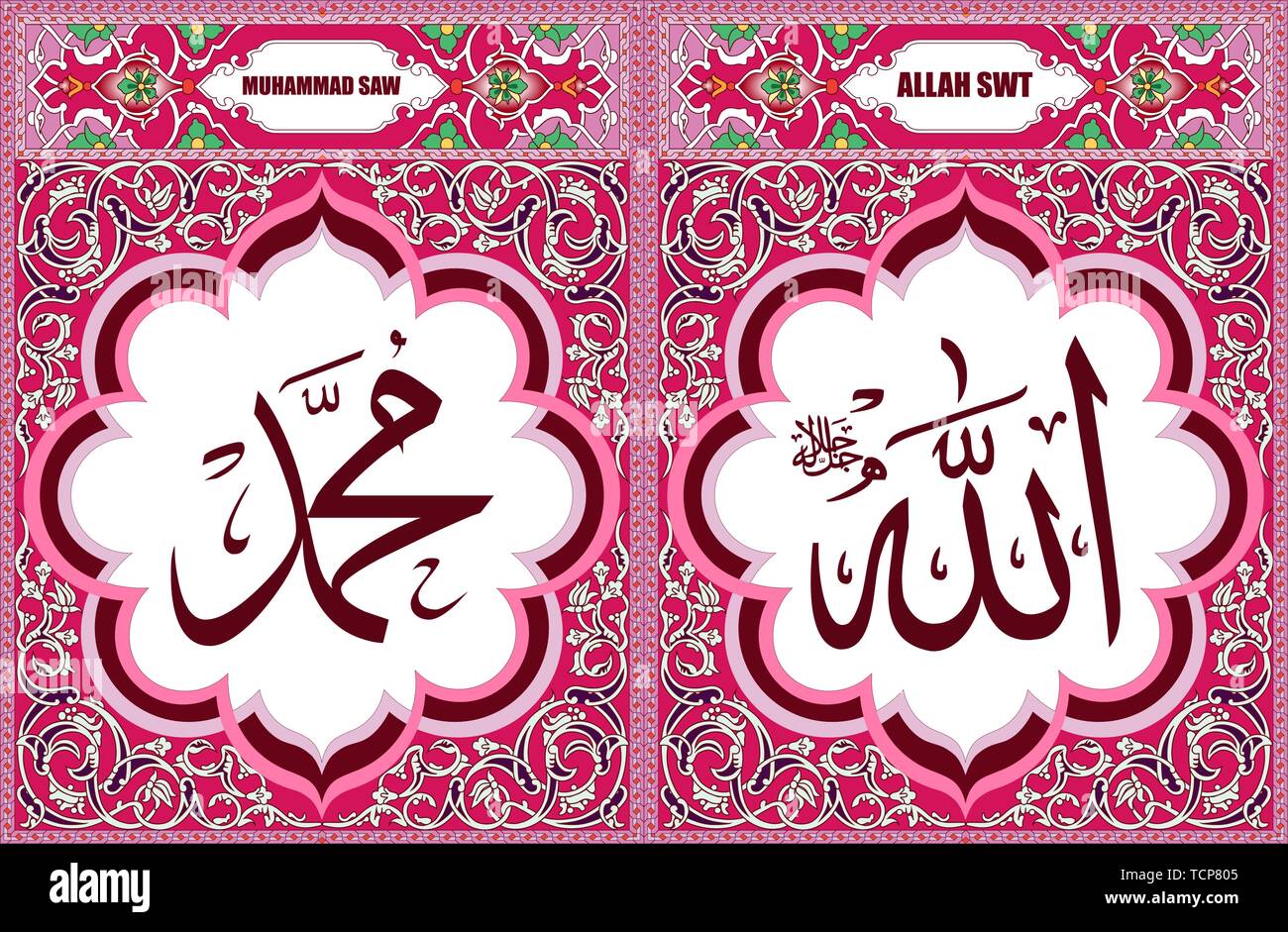 Allah & Muhammad Islamic Art decorating wall art Stock Vectorhttps://www.alamy.com/image-license-details/?v=1https://www.alamy.com/allah-muhammad-islamic-art-decorating-wall-art-image248810245.html
Allah & Muhammad Islamic Art decorating wall art Stock Vectorhttps://www.alamy.com/image-license-details/?v=1https://www.alamy.com/allah-muhammad-islamic-art-decorating-wall-art-image248810245.htmlRFTCP805–Allah & Muhammad Islamic Art decorating wall art
 Cover page of the Qu'ran 'A miracle from Allah to Prophet Muhammad' Stock Photohttps://www.alamy.com/image-license-details/?v=1https://www.alamy.com/stock-photo-cover-page-of-the-quran-a-miracle-from-allah-to-prophet-muhammad-38125975.html
Cover page of the Qu'ran 'A miracle from Allah to Prophet Muhammad' Stock Photohttps://www.alamy.com/image-license-details/?v=1https://www.alamy.com/stock-photo-cover-page-of-the-quran-a-miracle-from-allah-to-prophet-muhammad-38125975.htmlRFC60P1Y–Cover page of the Qu'ran 'A miracle from Allah to Prophet Muhammad'
 Al-Aqsa Mosque (Al-Masjid al-Aqsa), in the Old City of Jerusalem, is the third holiest site in Islam. The mosque was built on top of the Temple Mount, known as Haram esh-Sharif in Islam. Muslims believe that Muhammad was transported from the Sacred Mosque in Mecca to al-Aqsa during the Night Journey. Islamic tradition holds that Muhammad led prayers towards this site until the 17th month after his migration from Mecca to Medina, when Allah directed him to turn towards the Kaaba in Mecca. The mosque was completely destroyed by an earthquake in 746 and rebuilt by the Abbasid caliph al-Mansur in Stock Photohttps://www.alamy.com/image-license-details/?v=1https://www.alamy.com/al-aqsa-mosque-al-masjid-al-aqsa-in-the-old-city-of-jerusalem-is-the-third-holiest-site-in-islam-the-mosque-was-built-on-top-of-the-temple-mount-known-as-haram-esh-sharif-in-islam-muslims-believe-that-muhammad-was-transported-from-the-sacred-mosque-in-mecca-to-al-aqsa-during-the-night-journey-islamic-tradition-holds-that-muhammad-led-prayers-towards-this-site-until-the-17th-month-after-his-migration-from-mecca-to-medina-when-allah-directed-him-to-turn-towards-the-kaaba-in-mecca-the-mosque-was-completely-destroyed-by-an-earthquake-in-746-and-rebuilt-by-the-abbasid-caliph-al-mansur-in-image634314280.html
Al-Aqsa Mosque (Al-Masjid al-Aqsa), in the Old City of Jerusalem, is the third holiest site in Islam. The mosque was built on top of the Temple Mount, known as Haram esh-Sharif in Islam. Muslims believe that Muhammad was transported from the Sacred Mosque in Mecca to al-Aqsa during the Night Journey. Islamic tradition holds that Muhammad led prayers towards this site until the 17th month after his migration from Mecca to Medina, when Allah directed him to turn towards the Kaaba in Mecca. The mosque was completely destroyed by an earthquake in 746 and rebuilt by the Abbasid caliph al-Mansur in Stock Photohttps://www.alamy.com/image-license-details/?v=1https://www.alamy.com/al-aqsa-mosque-al-masjid-al-aqsa-in-the-old-city-of-jerusalem-is-the-third-holiest-site-in-islam-the-mosque-was-built-on-top-of-the-temple-mount-known-as-haram-esh-sharif-in-islam-muslims-believe-that-muhammad-was-transported-from-the-sacred-mosque-in-mecca-to-al-aqsa-during-the-night-journey-islamic-tradition-holds-that-muhammad-led-prayers-towards-this-site-until-the-17th-month-after-his-migration-from-mecca-to-medina-when-allah-directed-him-to-turn-towards-the-kaaba-in-mecca-the-mosque-was-completely-destroyed-by-an-earthquake-in-746-and-rebuilt-by-the-abbasid-caliph-al-mansur-in-image634314280.htmlRM2YRYE9C–Al-Aqsa Mosque (Al-Masjid al-Aqsa), in the Old City of Jerusalem, is the third holiest site in Islam. The mosque was built on top of the Temple Mount, known as Haram esh-Sharif in Islam. Muslims believe that Muhammad was transported from the Sacred Mosque in Mecca to al-Aqsa during the Night Journey. Islamic tradition holds that Muhammad led prayers towards this site until the 17th month after his migration from Mecca to Medina, when Allah directed him to turn towards the Kaaba in Mecca. The mosque was completely destroyed by an earthquake in 746 and rebuilt by the Abbasid caliph al-Mansur in
 White Sign in Arabic on a Fence by A Park Reads, 'There is No God but Allah. Muhammad is the Messenger of God. Glory to Allah, and May He Be Praised. Stock Photohttps://www.alamy.com/image-license-details/?v=1https://www.alamy.com/white-sign-in-arabic-on-a-fence-by-a-park-reads-there-is-no-god-but-allah-muhammad-is-the-messenger-of-god-glory-to-allah-and-may-he-be-praised-image534915082.html
White Sign in Arabic on a Fence by A Park Reads, 'There is No God but Allah. Muhammad is the Messenger of God. Glory to Allah, and May He Be Praised. Stock Photohttps://www.alamy.com/image-license-details/?v=1https://www.alamy.com/white-sign-in-arabic-on-a-fence-by-a-park-reads-there-is-no-god-but-allah-muhammad-is-the-messenger-of-god-glory-to-allah-and-may-he-be-praised-image534915082.htmlRF2P27DJ2–White Sign in Arabic on a Fence by A Park Reads, 'There is No God but Allah. Muhammad is the Messenger of God. Glory to Allah, and May He Be Praised.
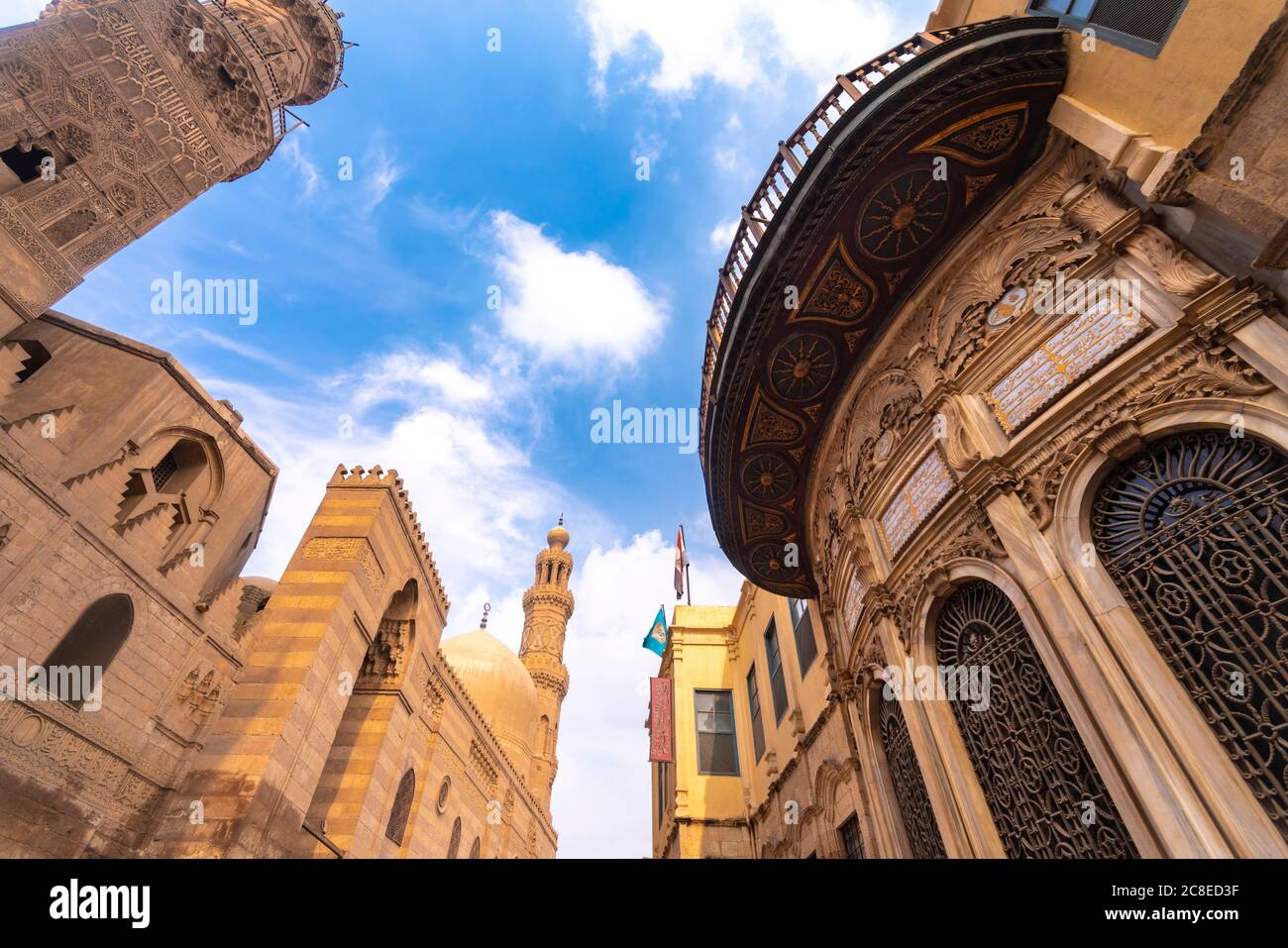 Egypt, Cairo Governorate, Cairo, Al-Nasir Muhammad Mosque and Sabil-Kuttab Ismail Pasha on Al-Muizz Li-Din Allah Al-Fatimi Street Stock Photohttps://www.alamy.com/image-license-details/?v=1https://www.alamy.com/egypt-cairo-governorate-cairo-al-nasir-muhammad-mosque-and-sabil-kuttab-ismail-pasha-on-al-muizz-li-din-allah-al-fatimi-street-image366652595.html
Egypt, Cairo Governorate, Cairo, Al-Nasir Muhammad Mosque and Sabil-Kuttab Ismail Pasha on Al-Muizz Li-Din Allah Al-Fatimi Street Stock Photohttps://www.alamy.com/image-license-details/?v=1https://www.alamy.com/egypt-cairo-governorate-cairo-al-nasir-muhammad-mosque-and-sabil-kuttab-ismail-pasha-on-al-muizz-li-din-allah-al-fatimi-street-image366652595.htmlRF2C8ED3F–Egypt, Cairo Governorate, Cairo, Al-Nasir Muhammad Mosque and Sabil-Kuttab Ismail Pasha on Al-Muizz Li-Din Allah Al-Fatimi Street
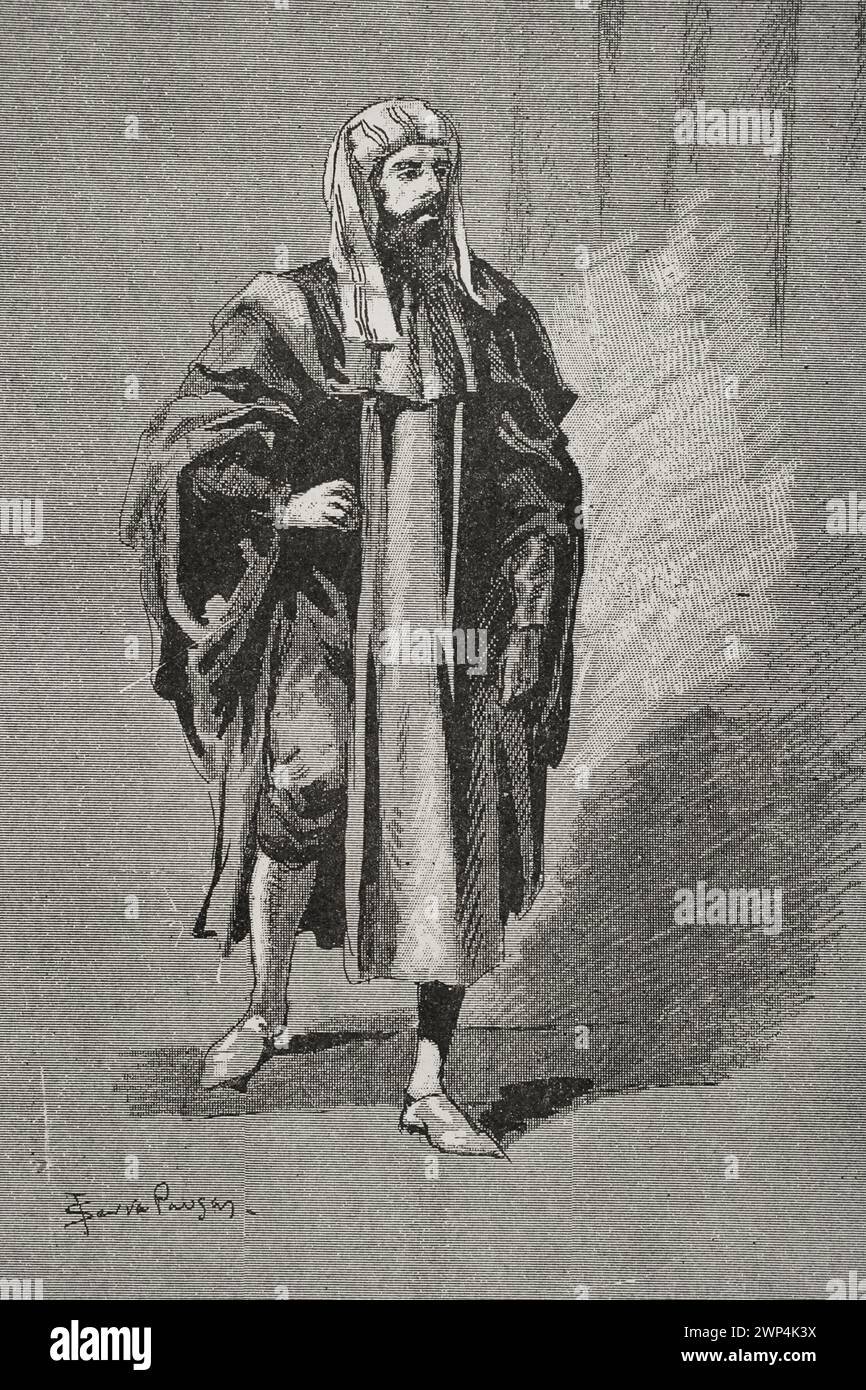 Ibn Tumart (Abu Abd Allah Amghar Ibn Tumart (ca. 1080-1130). Berber Muslim leader. Founder of the al-Muwahhidun confederation in North Africa (Almohad movement). Portrait. Engraving by Serra Pausas. 'Glorias Españolas' (Glories of Spain). Volume II. Published in Barcelona, 1890. Stock Photohttps://www.alamy.com/image-license-details/?v=1https://www.alamy.com/ibn-tumart-abu-abd-allah-amghar-ibn-tumart-ca-1080-1130-berber-muslim-leader-founder-of-the-al-muwahhidun-confederation-in-north-africa-almohad-movement-portrait-engraving-by-serra-pausas-glorias-espaolas-glories-of-spain-volume-ii-published-in-barcelona-1890-image598777758.html
Ibn Tumart (Abu Abd Allah Amghar Ibn Tumart (ca. 1080-1130). Berber Muslim leader. Founder of the al-Muwahhidun confederation in North Africa (Almohad movement). Portrait. Engraving by Serra Pausas. 'Glorias Españolas' (Glories of Spain). Volume II. Published in Barcelona, 1890. Stock Photohttps://www.alamy.com/image-license-details/?v=1https://www.alamy.com/ibn-tumart-abu-abd-allah-amghar-ibn-tumart-ca-1080-1130-berber-muslim-leader-founder-of-the-al-muwahhidun-confederation-in-north-africa-almohad-movement-portrait-engraving-by-serra-pausas-glorias-espaolas-glories-of-spain-volume-ii-published-in-barcelona-1890-image598777758.htmlRM2WP4K3X–Ibn Tumart (Abu Abd Allah Amghar Ibn Tumart (ca. 1080-1130). Berber Muslim leader. Founder of the al-Muwahhidun confederation in North Africa (Almohad movement). Portrait. Engraving by Serra Pausas. 'Glorias Españolas' (Glories of Spain). Volume II. Published in Barcelona, 1890.
 Arab helmet of Abd Allah Muhammad, known as Boabdil, last sultan of the Arabic Nasride dynasty of Grenada. Armeria de Madrid. Anonymous photography. Albumin paper draw. Paris, Carnavalet museum. 123100-11 Stock Photohttps://www.alamy.com/image-license-details/?v=1https://www.alamy.com/arab-helmet-of-abd-allah-muhammad-known-as-boabdil-last-sultan-of-the-arabic-nasride-dynasty-of-grenada-armeria-de-madrid-anonymous-photography-albumin-paper-draw-paris-carnavalet-museum-123100-11-image596826768.html
Arab helmet of Abd Allah Muhammad, known as Boabdil, last sultan of the Arabic Nasride dynasty of Grenada. Armeria de Madrid. Anonymous photography. Albumin paper draw. Paris, Carnavalet museum. 123100-11 Stock Photohttps://www.alamy.com/image-license-details/?v=1https://www.alamy.com/arab-helmet-of-abd-allah-muhammad-known-as-boabdil-last-sultan-of-the-arabic-nasride-dynasty-of-grenada-armeria-de-madrid-anonymous-photography-albumin-paper-draw-paris-carnavalet-museum-123100-11-image596826768.htmlRM2WJYPHM–Arab helmet of Abd Allah Muhammad, known as Boabdil, last sultan of the Arabic Nasride dynasty of Grenada. Armeria de Madrid. Anonymous photography. Albumin paper draw. Paris, Carnavalet museum. 123100-11
 Young Man Staring at the Arabic Calligraphy meaning 'Prophet Muhammad' on the Wall of old Edirne Mosque Stock Photohttps://www.alamy.com/image-license-details/?v=1https://www.alamy.com/young-man-staring-at-the-arabic-calligraphy-meaning-prophet-muhammad-on-the-wall-of-old-edirne-mosque-image383902323.html
Young Man Staring at the Arabic Calligraphy meaning 'Prophet Muhammad' on the Wall of old Edirne Mosque Stock Photohttps://www.alamy.com/image-license-details/?v=1https://www.alamy.com/young-man-staring-at-the-arabic-calligraphy-meaning-prophet-muhammad-on-the-wall-of-old-edirne-mosque-image383902323.htmlRF2D8G797–Young Man Staring at the Arabic Calligraphy meaning 'Prophet Muhammad' on the Wall of old Edirne Mosque
 Annual Muslim Day Parade, New York City, 2012. Stock Photohttps://www.alamy.com/image-license-details/?v=1https://www.alamy.com/annual-muslim-day-parade-new-york-city-2012-image336731290.html
Annual Muslim Day Parade, New York City, 2012. Stock Photohttps://www.alamy.com/image-license-details/?v=1https://www.alamy.com/annual-muslim-day-parade-new-york-city-2012-image336731290.htmlRM2AFRC5E–Annual Muslim Day Parade, New York City, 2012.
 ISTANBUL, Turkey — Large calligraphic medallions display sacred Islamic names in Hagia Sophia, inscribed by master calligrapher Kazasker Mustafa Izzed Effendi. These roundels feature the names of Allah, Muhammad, the first four caliphs, and Muhammad's grandchildren in Arabic script. The monumental medallions represent significant examples of Ottoman calligraphic art. Stock Photohttps://www.alamy.com/image-license-details/?v=1https://www.alamy.com/stock-photo-istanbul-turkey-large-calligraphic-medallions-display-sacred-islamic-79126994.html
ISTANBUL, Turkey — Large calligraphic medallions display sacred Islamic names in Hagia Sophia, inscribed by master calligrapher Kazasker Mustafa Izzed Effendi. These roundels feature the names of Allah, Muhammad, the first four caliphs, and Muhammad's grandchildren in Arabic script. The monumental medallions represent significant examples of Ottoman calligraphic art. Stock Photohttps://www.alamy.com/image-license-details/?v=1https://www.alamy.com/stock-photo-istanbul-turkey-large-calligraphic-medallions-display-sacred-islamic-79126994.htmlRMEGMF82–ISTANBUL, Turkey — Large calligraphic medallions display sacred Islamic names in Hagia Sophia, inscribed by master calligrapher Kazasker Mustafa Izzed Effendi. These roundels feature the names of Allah, Muhammad, the first four caliphs, and Muhammad's grandchildren in Arabic script. The monumental medallions represent significant examples of Ottoman calligraphic art.
 Vatican City. 7th April, 2014. Pope Francis meets with the King of Jordan H.M. Abd Allah II in this photo King of Gordan H.M. Abd Allah II, Pope Francis and the prince Ghazi Bin| Muhammad Head, of the Royal Institute for Inter-Faith Studies Credit: Realy Easy Star/Alamy Live News Stock Photohttps://www.alamy.com/image-license-details/?v=1https://www.alamy.com/vatican-city-7th-april-2014-pope-francis-meets-with-the-king-of-jordan-image68342570.html
Vatican City. 7th April, 2014. Pope Francis meets with the King of Jordan H.M. Abd Allah II in this photo King of Gordan H.M. Abd Allah II, Pope Francis and the prince Ghazi Bin| Muhammad Head, of the Royal Institute for Inter-Faith Studies Credit: Realy Easy Star/Alamy Live News Stock Photohttps://www.alamy.com/image-license-details/?v=1https://www.alamy.com/vatican-city-7th-april-2014-pope-francis-meets-with-the-king-of-jordan-image68342570.htmlRMDY57J2–Vatican City. 7th April, 2014. Pope Francis meets with the King of Jordan H.M. Abd Allah II in this photo King of Gordan H.M. Abd Allah II, Pope Francis and the prince Ghazi Bin| Muhammad Head, of the Royal Institute for Inter-Faith Studies Credit: Realy Easy Star/Alamy Live News
 PAKISTAN-Islamabad 21st 4, 2023, Arab calligraphy 'Basmala'on the wall of the mosque in Side. Text in Arabic: 'In the name of God, the Most Gracious, Stock Photohttps://www.alamy.com/image-license-details/?v=1https://www.alamy.com/pakistan-islamabad-21st-4-2023-arab-calligraphy-basmalaon-the-wall-of-the-mosque-in-side-text-in-arabic-in-the-name-of-god-the-most-gracious-image547252879.html
PAKISTAN-Islamabad 21st 4, 2023, Arab calligraphy 'Basmala'on the wall of the mosque in Side. Text in Arabic: 'In the name of God, the Most Gracious, Stock Photohttps://www.alamy.com/image-license-details/?v=1https://www.alamy.com/pakistan-islamabad-21st-4-2023-arab-calligraphy-basmalaon-the-wall-of-the-mosque-in-side-text-in-arabic-in-the-name-of-god-the-most-gracious-image547252879.htmlRF2PP9EHK–PAKISTAN-Islamabad 21st 4, 2023, Arab calligraphy 'Basmala'on the wall of the mosque in Side. Text in Arabic: 'In the name of God, the Most Gracious,
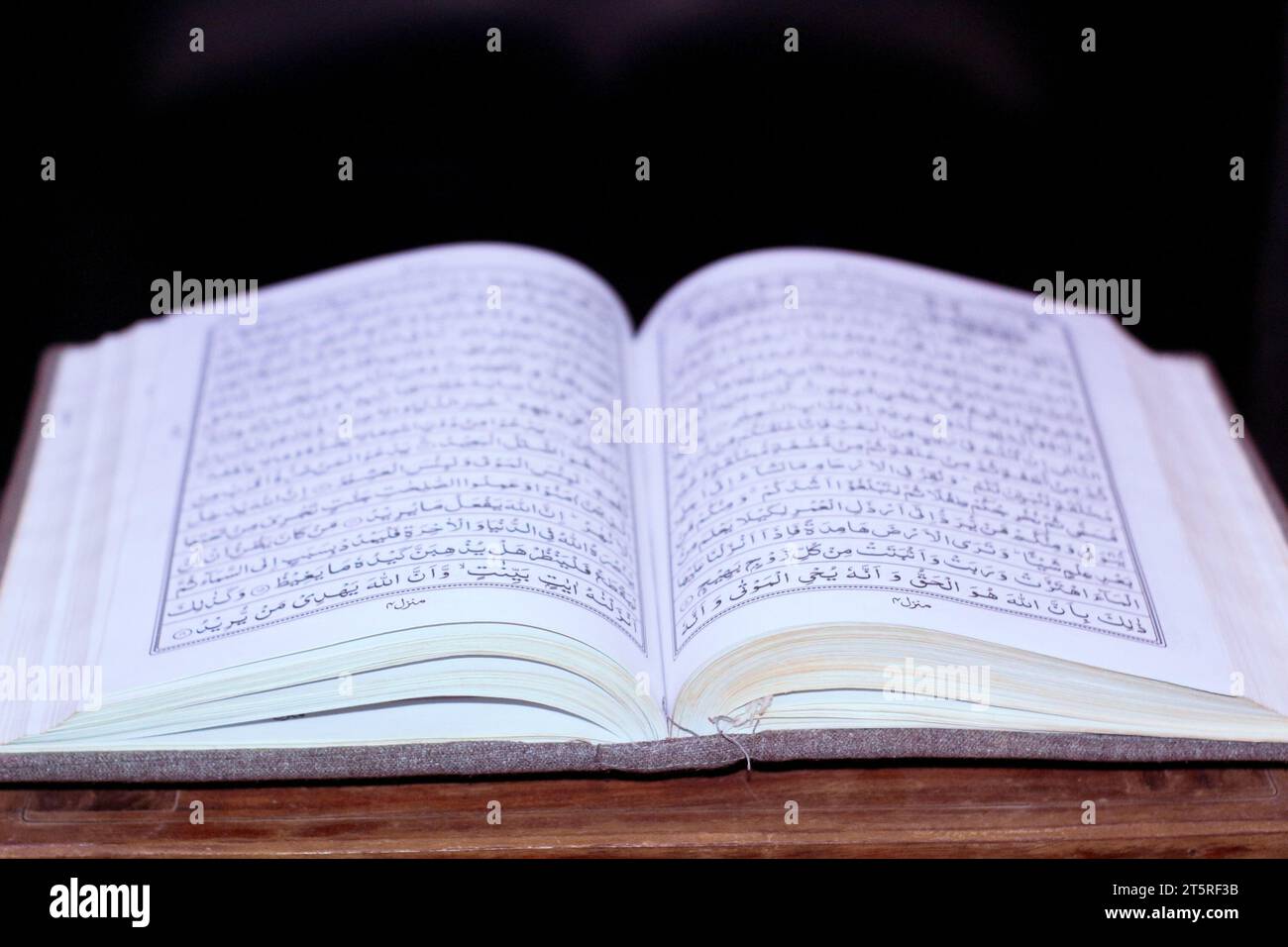 Holy book quran open on verses surah al hajj Stock Photohttps://www.alamy.com/image-license-details/?v=1https://www.alamy.com/holy-book-quran-open-on-verses-surah-al-hajj-image571532175.html
Holy book quran open on verses surah al hajj Stock Photohttps://www.alamy.com/image-license-details/?v=1https://www.alamy.com/holy-book-quran-open-on-verses-surah-al-hajj-image571532175.htmlRF2T5RF3B–Holy book quran open on verses surah al hajj
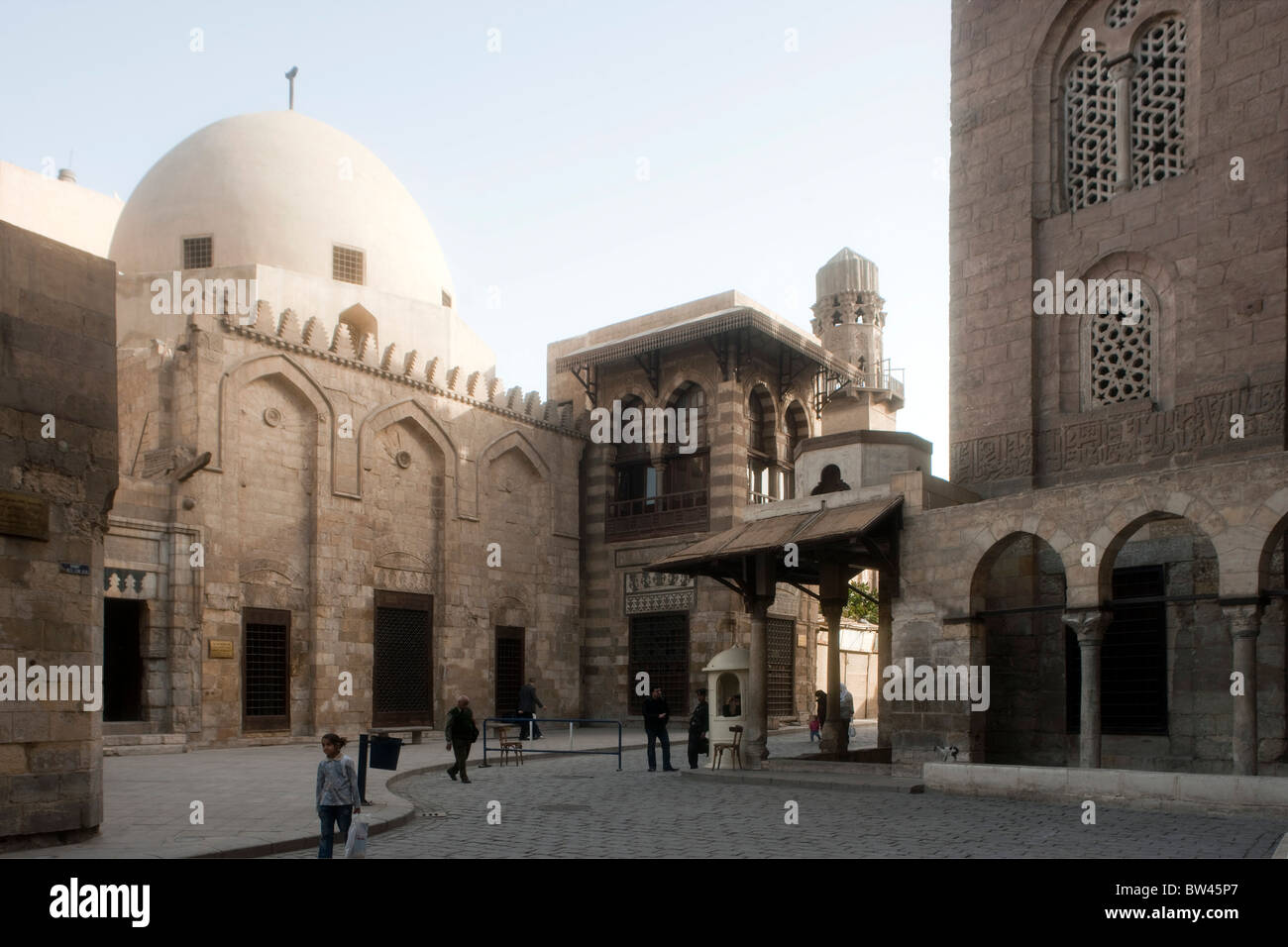 Ägypten, Kairo, Sharia Muizz il Din Allah, Moscheekomplex des Sultans al Mansur Qualaun Stock Photohttps://www.alamy.com/image-license-details/?v=1https://www.alamy.com/stock-photo-gypten-kairo-sharia-muizz-il-din-allah-moscheekomplex-des-sultans-32669119.html
Ägypten, Kairo, Sharia Muizz il Din Allah, Moscheekomplex des Sultans al Mansur Qualaun Stock Photohttps://www.alamy.com/image-license-details/?v=1https://www.alamy.com/stock-photo-gypten-kairo-sharia-muizz-il-din-allah-moscheekomplex-des-sultans-32669119.htmlRMBW45P7–Ägypten, Kairo, Sharia Muizz il Din Allah, Moscheekomplex des Sultans al Mansur Qualaun
 MECCA, SAUDI ARABIA-CIRCA 2016 : A group of Muslim pilgrims from Malaysia perform prayers in a mosque outside Mecca, Saudi Arabia. Stock Photohttps://www.alamy.com/image-license-details/?v=1https://www.alamy.com/mecca-saudi-arabia-circa-2016-a-group-of-muslim-pilgrims-from-malaysia-perform-prayers-in-a-mosque-outside-mecca-saudi-arabia-image236611221.html
MECCA, SAUDI ARABIA-CIRCA 2016 : A group of Muslim pilgrims from Malaysia perform prayers in a mosque outside Mecca, Saudi Arabia. Stock Photohttps://www.alamy.com/image-license-details/?v=1https://www.alamy.com/mecca-saudi-arabia-circa-2016-a-group-of-muslim-pilgrims-from-malaysia-perform-prayers-in-a-mosque-outside-mecca-saudi-arabia-image236611221.htmlRMRMXG0N–MECCA, SAUDI ARABIA-CIRCA 2016 : A group of Muslim pilgrims from Malaysia perform prayers in a mosque outside Mecca, Saudi Arabia.
 Prayer Beads on Top of an Open Holy Quran Cut Out Stock Photohttps://www.alamy.com/image-license-details/?v=1https://www.alamy.com/prayer-beads-on-top-of-an-open-holy-quran-cut-out-image457573785.html
Prayer Beads on Top of an Open Holy Quran Cut Out Stock Photohttps://www.alamy.com/image-license-details/?v=1https://www.alamy.com/prayer-beads-on-top-of-an-open-holy-quran-cut-out-image457573785.htmlRF2HGC80W–Prayer Beads on Top of an Open Holy Quran Cut Out
RF2C5C73T–Allah and Muhammad Arabic Letter Icon Vector Logo Template Illustration Design. Vector EPS 10.
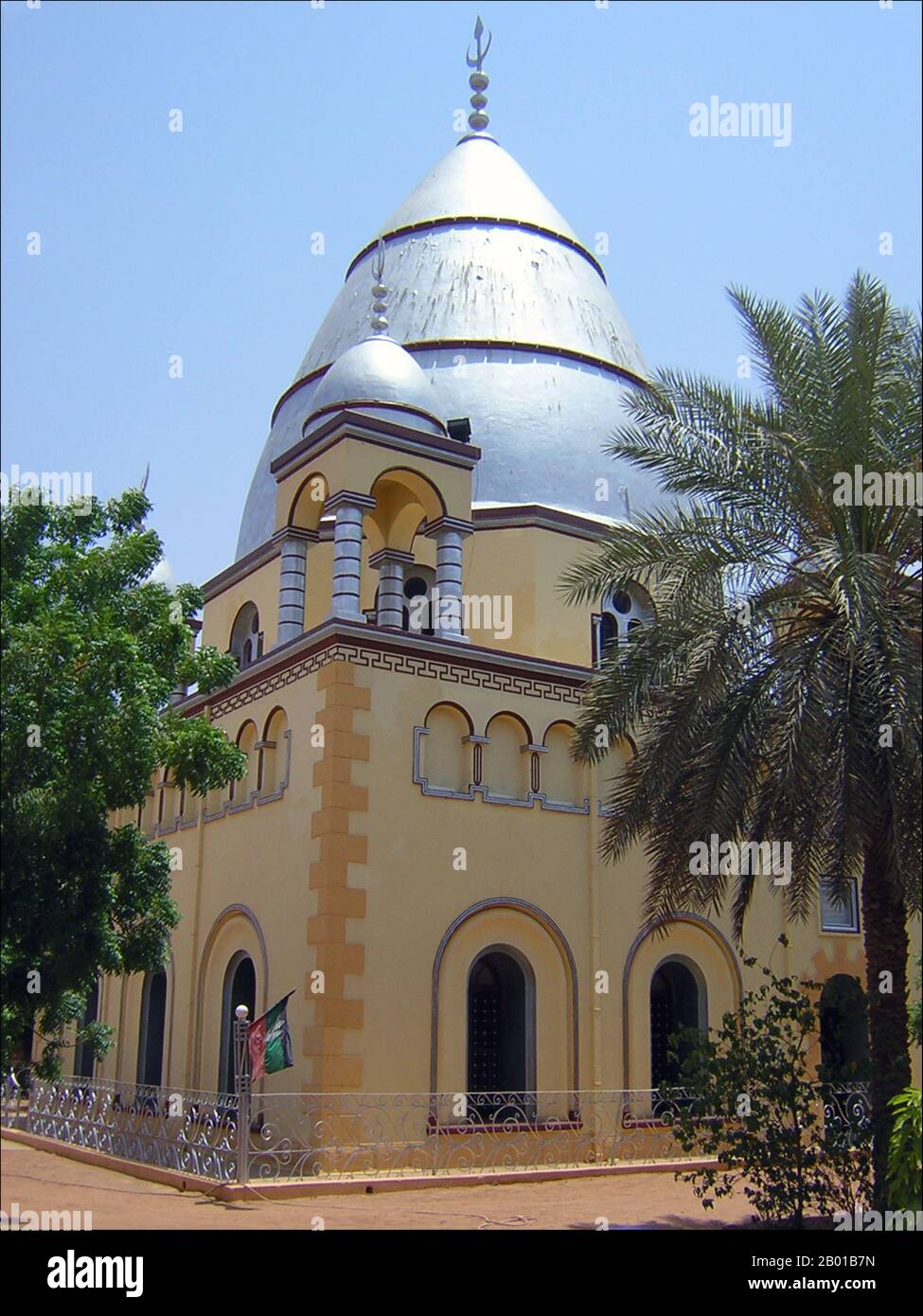 Sudan: The Tomb of the Mahdi, Omdurman, Khartoum. Photo by Petr Adam Dohnalek (CC BY-SA 3.0 License). Muhammad Ahmad bin Abd Allah (12 August 1844 - 22 June 1885) was a religious leader of the Samaniyya order in Sudan who, on June 29, 1881, proclaimed himself as the Mahdi or messianic redeemer of the Islamic faith. His proclamation came during a period of widespread resentment among the Sudanese population of the oppressive policies of the Turco-Egyptian rulers, and capitalised on the messianic beliefs popular among the various Sudanese religious sects of the time. Stock Photohttps://www.alamy.com/image-license-details/?v=1https://www.alamy.com/sudan-the-tomb-of-the-mahdi-omdurman-khartoum-photo-by-petr-adam-dohnalek-cc-by-sa-30-license-muhammad-ahmad-bin-abd-allah-12-august-1844-22-june-1885-was-a-religious-leader-of-the-samaniyya-order-in-sudan-who-on-june-29-1881-proclaimed-himself-as-the-mahdi-or-messianic-redeemer-of-the-islamic-faith-his-proclamation-came-during-a-period-of-widespread-resentment-among-the-sudanese-population-of-the-oppressive-policies-of-the-turco-egyptian-rulers-and-capitalised-on-the-messianic-beliefs-popular-among-the-various-sudanese-religious-sects-of-the-time-image344238153.html
Sudan: The Tomb of the Mahdi, Omdurman, Khartoum. Photo by Petr Adam Dohnalek (CC BY-SA 3.0 License). Muhammad Ahmad bin Abd Allah (12 August 1844 - 22 June 1885) was a religious leader of the Samaniyya order in Sudan who, on June 29, 1881, proclaimed himself as the Mahdi or messianic redeemer of the Islamic faith. His proclamation came during a period of widespread resentment among the Sudanese population of the oppressive policies of the Turco-Egyptian rulers, and capitalised on the messianic beliefs popular among the various Sudanese religious sects of the time. Stock Photohttps://www.alamy.com/image-license-details/?v=1https://www.alamy.com/sudan-the-tomb-of-the-mahdi-omdurman-khartoum-photo-by-petr-adam-dohnalek-cc-by-sa-30-license-muhammad-ahmad-bin-abd-allah-12-august-1844-22-june-1885-was-a-religious-leader-of-the-samaniyya-order-in-sudan-who-on-june-29-1881-proclaimed-himself-as-the-mahdi-or-messianic-redeemer-of-the-islamic-faith-his-proclamation-came-during-a-period-of-widespread-resentment-among-the-sudanese-population-of-the-oppressive-policies-of-the-turco-egyptian-rulers-and-capitalised-on-the-messianic-beliefs-popular-among-the-various-sudanese-religious-sects-of-the-time-image344238153.htmlRM2B01B7N–Sudan: The Tomb of the Mahdi, Omdurman, Khartoum. Photo by Petr Adam Dohnalek (CC BY-SA 3.0 License). Muhammad Ahmad bin Abd Allah (12 August 1844 - 22 June 1885) was a religious leader of the Samaniyya order in Sudan who, on June 29, 1881, proclaimed himself as the Mahdi or messianic redeemer of the Islamic faith. His proclamation came during a period of widespread resentment among the Sudanese population of the oppressive policies of the Turco-Egyptian rulers, and capitalised on the messianic beliefs popular among the various Sudanese religious sects of the time.
 Arabic calligraphy of Allah (Islamic God) on the right and Prophet Muhammad transliterated as 'Muhammad Rasulullah' (which mean Stock Photohttps://www.alamy.com/image-license-details/?v=1https://www.alamy.com/stock-photo-arabic-calligraphy-of-allah-islamic-god-on-the-right-and-prophet-muhammad-53820112.html
Arabic calligraphy of Allah (Islamic God) on the right and Prophet Muhammad transliterated as 'Muhammad Rasulullah' (which mean Stock Photohttps://www.alamy.com/image-license-details/?v=1https://www.alamy.com/stock-photo-arabic-calligraphy-of-allah-islamic-god-on-the-right-and-prophet-muhammad-53820112.htmlRFD3FM2T–Arabic calligraphy of Allah (Islamic God) on the right and Prophet Muhammad transliterated as 'Muhammad Rasulullah' (which mean
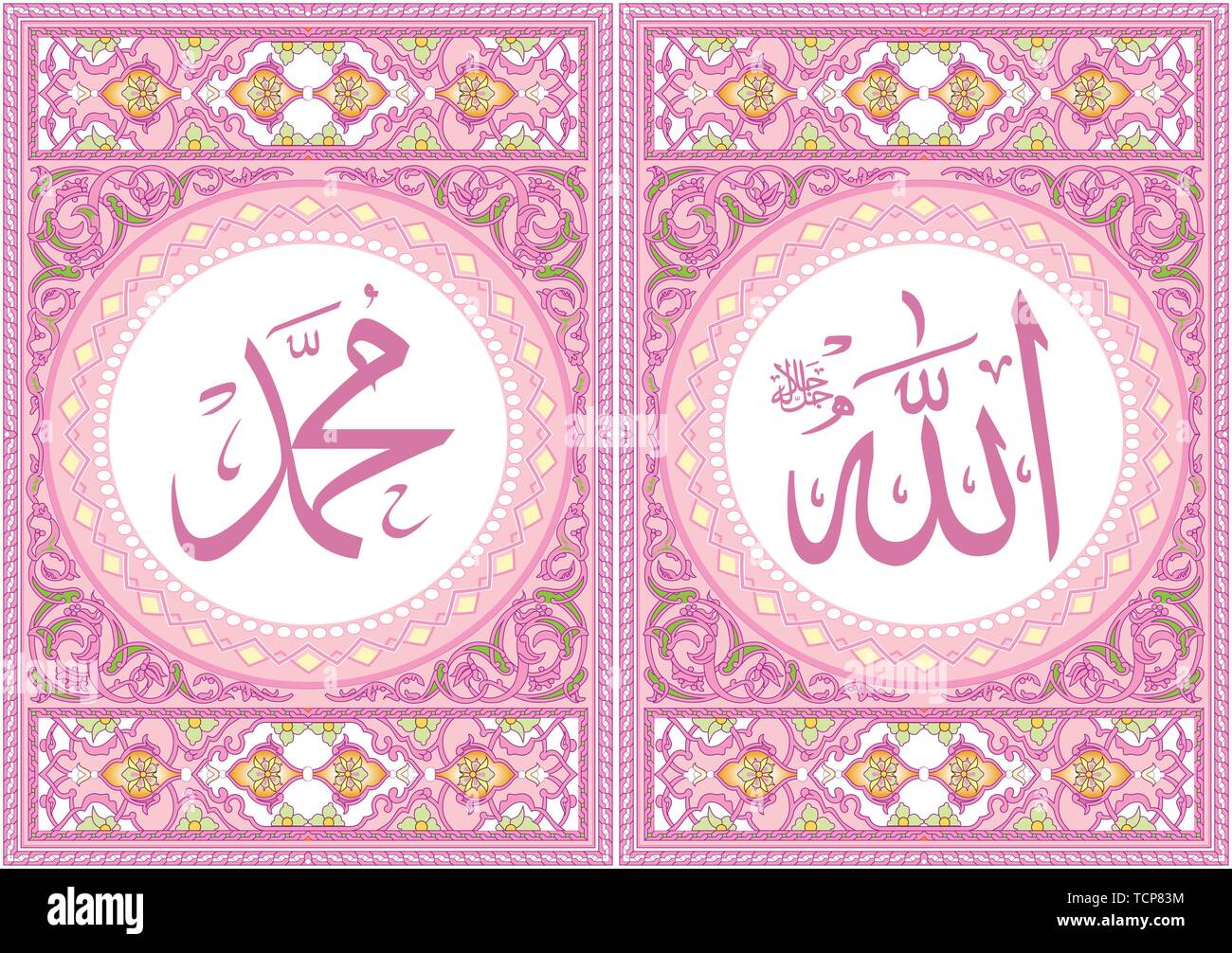 Allah & Muhammad Islamic Art decorating wall art Stock Vectorhttps://www.alamy.com/image-license-details/?v=1https://www.alamy.com/allah-muhammad-islamic-art-decorating-wall-art-image248810344.html
Allah & Muhammad Islamic Art decorating wall art Stock Vectorhttps://www.alamy.com/image-license-details/?v=1https://www.alamy.com/allah-muhammad-islamic-art-decorating-wall-art-image248810344.htmlRFTCP83M–Allah & Muhammad Islamic Art decorating wall art
 Kashmiri Women offering prayers outside Hazratbal Shrine in Srinagar, Summer Capital Of Indian Administered Kashmir on the occasion of Mehraj-ul-Nabi. Every year thousands of Muslim devotees from across Kashmir gathers at Hazratbal shrine in central Srinagar summer capital of Indian Kashmir for prayers and to watch the Holy Relic (moe-e-moqadas) believed to be a hair from the beard of Prophet Mohammed PBUH, displayed for public on Meraj-ul Alam and other festivals. Mehraj-ul-Alam, A festival which marks the ascension Of Prophet Muhammad PBUH To Heaven. Stock Photohttps://www.alamy.com/image-license-details/?v=1https://www.alamy.com/kashmiri-women-offering-prayers-outside-hazratbal-shrine-in-srinagar-summer-capital-of-indian-administered-kashmir-on-the-occasion-of-mehraj-ul-nabi-every-year-thousands-of-muslim-devotees-from-across-kashmir-gathers-at-hazratbal-shrine-in-central-srinagar-summer-capital-of-indian-kashmir-for-prayers-and-to-watch-the-holy-relic-moe-e-moqadas-believed-to-be-a-hair-from-the-beard-of-prophet-mohammed-pbuh-displayed-for-public-on-meraj-ul-alam-and-other-festivals-mehraj-ul-alam-a-festival-which-marks-the-ascension-of-prophet-muhammad-pbuh-to-heaven-image179704153.html
Kashmiri Women offering prayers outside Hazratbal Shrine in Srinagar, Summer Capital Of Indian Administered Kashmir on the occasion of Mehraj-ul-Nabi. Every year thousands of Muslim devotees from across Kashmir gathers at Hazratbal shrine in central Srinagar summer capital of Indian Kashmir for prayers and to watch the Holy Relic (moe-e-moqadas) believed to be a hair from the beard of Prophet Mohammed PBUH, displayed for public on Meraj-ul Alam and other festivals. Mehraj-ul-Alam, A festival which marks the ascension Of Prophet Muhammad PBUH To Heaven. Stock Photohttps://www.alamy.com/image-license-details/?v=1https://www.alamy.com/kashmiri-women-offering-prayers-outside-hazratbal-shrine-in-srinagar-summer-capital-of-indian-administered-kashmir-on-the-occasion-of-mehraj-ul-nabi-every-year-thousands-of-muslim-devotees-from-across-kashmir-gathers-at-hazratbal-shrine-in-central-srinagar-summer-capital-of-indian-kashmir-for-prayers-and-to-watch-the-holy-relic-moe-e-moqadas-believed-to-be-a-hair-from-the-beard-of-prophet-mohammed-pbuh-displayed-for-public-on-meraj-ul-alam-and-other-festivals-mehraj-ul-alam-a-festival-which-marks-the-ascension-of-prophet-muhammad-pbuh-to-heaven-image179704153.htmlRMMCA6DD–Kashmiri Women offering prayers outside Hazratbal Shrine in Srinagar, Summer Capital Of Indian Administered Kashmir on the occasion of Mehraj-ul-Nabi. Every year thousands of Muslim devotees from across Kashmir gathers at Hazratbal shrine in central Srinagar summer capital of Indian Kashmir for prayers and to watch the Holy Relic (moe-e-moqadas) believed to be a hair from the beard of Prophet Mohammed PBUH, displayed for public on Meraj-ul Alam and other festivals. Mehraj-ul-Alam, A festival which marks the ascension Of Prophet Muhammad PBUH To Heaven.
 Al-Aqsa Mosque (Al-Masjid al-Aqsa), in the Old City of Jerusalem, is the third holiest site in Islam. The mosque was built on top of the Temple Mount, known as Haram esh-Sharif in Islam. Muslims believe that Muhammad was transported from the Sacred Mosque in Mecca to al-Aqsa during the Night Journey. Islamic tradition holds that Muhammad led prayers towards this site until the 17th month after his migration from Mecca to Medina, when Allah directed him to turn towards the Kaaba in Mecca. The mosque was completely destroyed by an earthquake in 746 and rebuilt by the Abbasid caliph al-Mansur in Stock Photohttps://www.alamy.com/image-license-details/?v=1https://www.alamy.com/al-aqsa-mosque-al-masjid-al-aqsa-in-the-old-city-of-jerusalem-is-the-third-holiest-site-in-islam-the-mosque-was-built-on-top-of-the-temple-mount-known-as-haram-esh-sharif-in-islam-muslims-believe-that-muhammad-was-transported-from-the-sacred-mosque-in-mecca-to-al-aqsa-during-the-night-journey-islamic-tradition-holds-that-muhammad-led-prayers-towards-this-site-until-the-17th-month-after-his-migration-from-mecca-to-medina-when-allah-directed-him-to-turn-towards-the-kaaba-in-mecca-the-mosque-was-completely-destroyed-by-an-earthquake-in-746-and-rebuilt-by-the-abbasid-caliph-al-mansur-in-image634313184.html
Al-Aqsa Mosque (Al-Masjid al-Aqsa), in the Old City of Jerusalem, is the third holiest site in Islam. The mosque was built on top of the Temple Mount, known as Haram esh-Sharif in Islam. Muslims believe that Muhammad was transported from the Sacred Mosque in Mecca to al-Aqsa during the Night Journey. Islamic tradition holds that Muhammad led prayers towards this site until the 17th month after his migration from Mecca to Medina, when Allah directed him to turn towards the Kaaba in Mecca. The mosque was completely destroyed by an earthquake in 746 and rebuilt by the Abbasid caliph al-Mansur in Stock Photohttps://www.alamy.com/image-license-details/?v=1https://www.alamy.com/al-aqsa-mosque-al-masjid-al-aqsa-in-the-old-city-of-jerusalem-is-the-third-holiest-site-in-islam-the-mosque-was-built-on-top-of-the-temple-mount-known-as-haram-esh-sharif-in-islam-muslims-believe-that-muhammad-was-transported-from-the-sacred-mosque-in-mecca-to-al-aqsa-during-the-night-journey-islamic-tradition-holds-that-muhammad-led-prayers-towards-this-site-until-the-17th-month-after-his-migration-from-mecca-to-medina-when-allah-directed-him-to-turn-towards-the-kaaba-in-mecca-the-mosque-was-completely-destroyed-by-an-earthquake-in-746-and-rebuilt-by-the-abbasid-caliph-al-mansur-in-image634313184.htmlRM2YRYCX8–Al-Aqsa Mosque (Al-Masjid al-Aqsa), in the Old City of Jerusalem, is the third holiest site in Islam. The mosque was built on top of the Temple Mount, known as Haram esh-Sharif in Islam. Muslims believe that Muhammad was transported from the Sacred Mosque in Mecca to al-Aqsa during the Night Journey. Islamic tradition holds that Muhammad led prayers towards this site until the 17th month after his migration from Mecca to Medina, when Allah directed him to turn towards the Kaaba in Mecca. The mosque was completely destroyed by an earthquake in 746 and rebuilt by the Abbasid caliph al-Mansur in
 Front cover of The Noble Qur'an Stock Photohttps://www.alamy.com/image-license-details/?v=1https://www.alamy.com/stock-photo-front-cover-of-the-noble-quran-27011790.html
Front cover of The Noble Qur'an Stock Photohttps://www.alamy.com/image-license-details/?v=1https://www.alamy.com/stock-photo-front-cover-of-the-noble-quran-27011790.htmlRFBFXDPP–Front cover of The Noble Qur'an
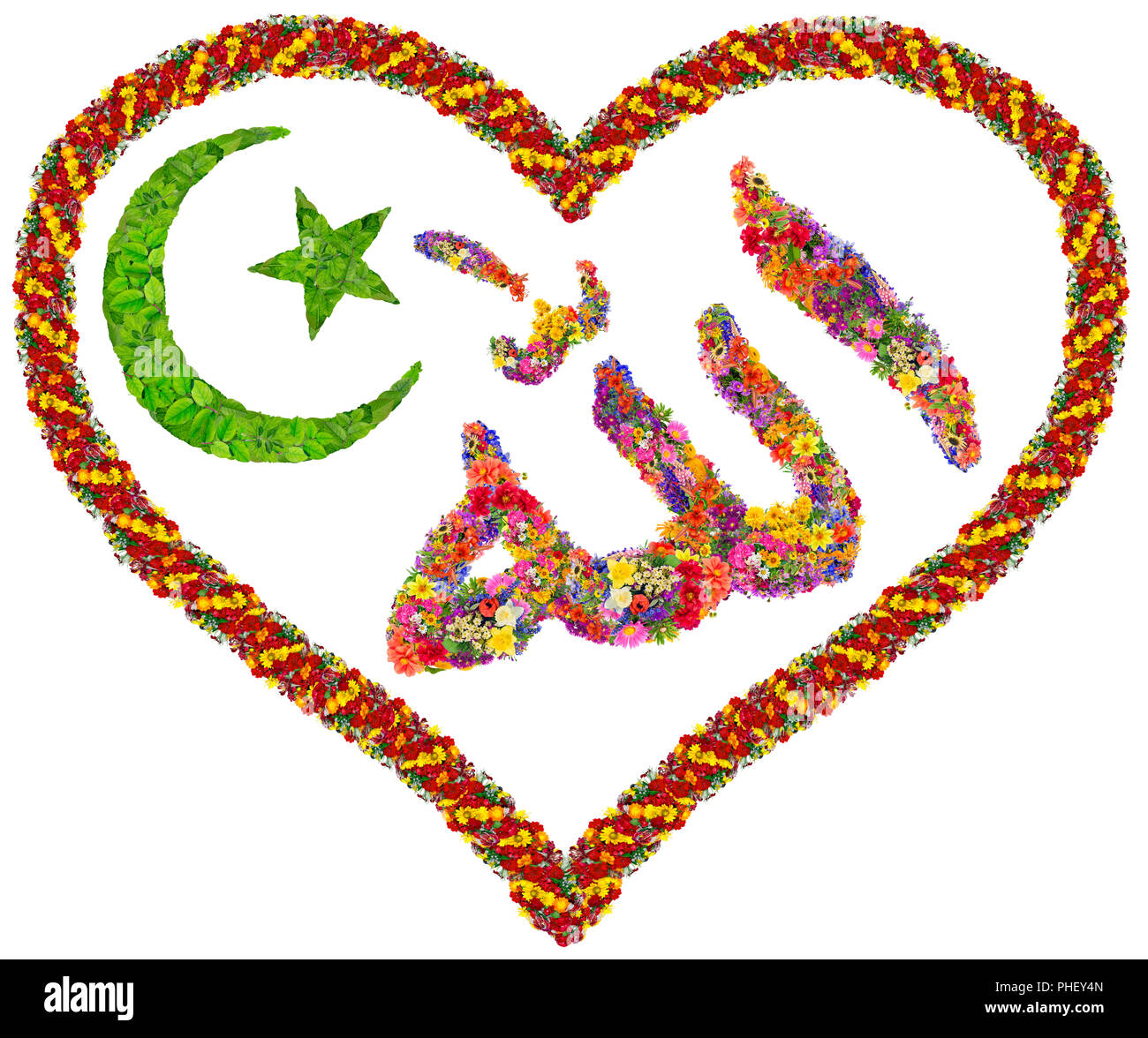 Love to Allah concept Stock Photohttps://www.alamy.com/image-license-details/?v=1https://www.alamy.com/love-to-allah-concept-image217302197.html
Love to Allah concept Stock Photohttps://www.alamy.com/image-license-details/?v=1https://www.alamy.com/love-to-allah-concept-image217302197.htmlRMPHEY4N–Love to Allah concept
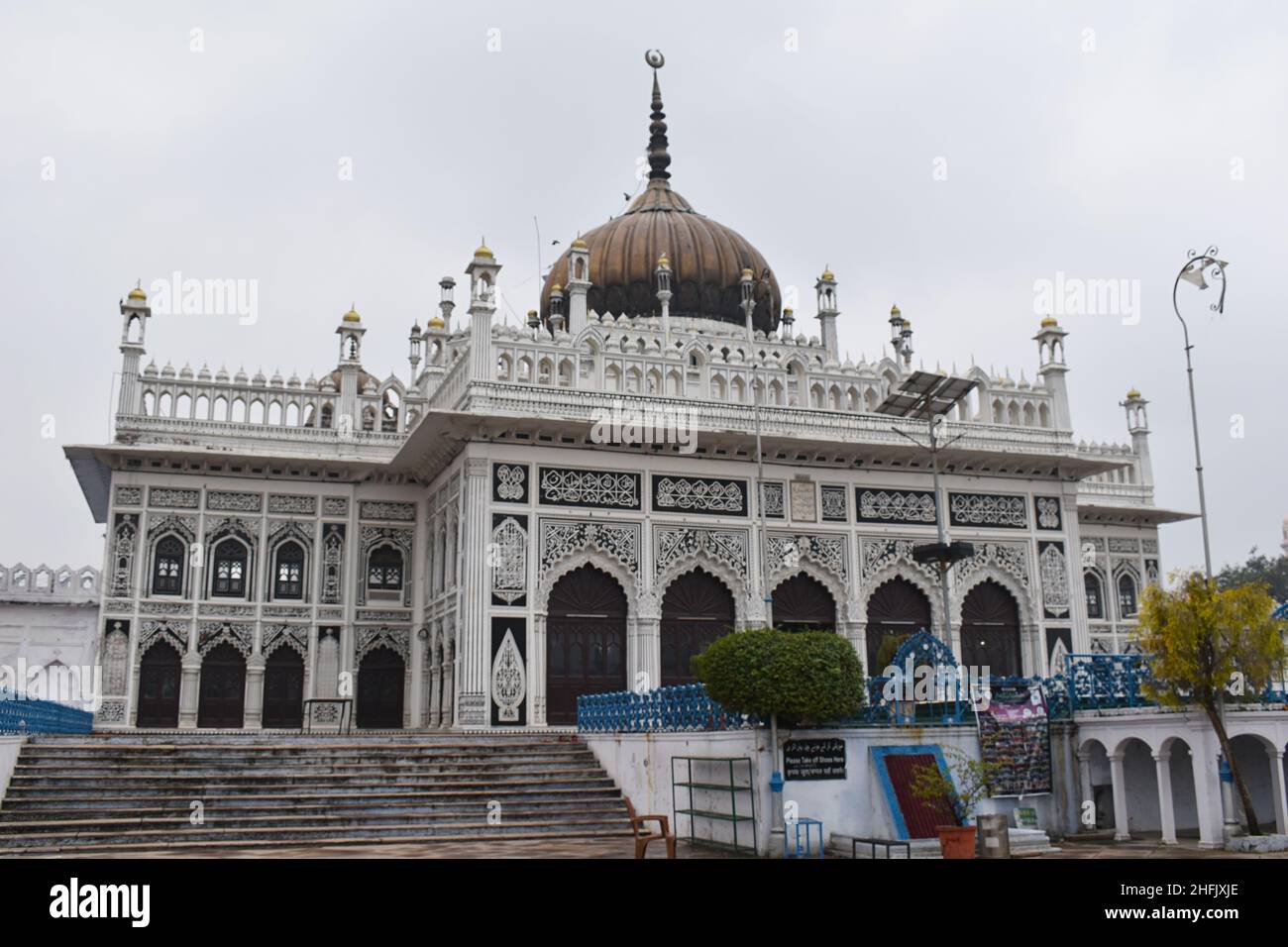 Façade of Chota Imambara initially a congregation hall for Shia Muslims. Built by Muhammad Ali Shah, Lucknow, Uttar Pradesh, India Stock Photohttps://www.alamy.com/image-license-details/?v=1https://www.alamy.com/faade-of-chota-imambara-initially-a-congregation-hall-for-shia-muslims-built-by-muhammad-ali-shah-lucknow-uttar-pradesh-india-image457105446.html
Façade of Chota Imambara initially a congregation hall for Shia Muslims. Built by Muhammad Ali Shah, Lucknow, Uttar Pradesh, India Stock Photohttps://www.alamy.com/image-license-details/?v=1https://www.alamy.com/faade-of-chota-imambara-initially-a-congregation-hall-for-shia-muslims-built-by-muhammad-ali-shah-lucknow-uttar-pradesh-india-image457105446.htmlRF2HFJXJE–Façade of Chota Imambara initially a congregation hall for Shia Muslims. Built by Muhammad Ali Shah, Lucknow, Uttar Pradesh, India
 Mail Shirt 16th century or later possibly Iranian Each ring of this mail shirt is stamped with the same Arabic inscription, “Allah, Muhammad, 'Ali, Fatima, Hasan, Husayn,” referring to God, Muhammad, and the Prophet’s immediate family, known as the “people of the cloak,” who the Shi'a consider the holy family of Islam. Worn close to the warrior’s body, their names had a talismanic value, offering spiritual as well as corporeal protection.. Mail Shirt 27635 Stock Photohttps://www.alamy.com/image-license-details/?v=1https://www.alamy.com/mail-shirt-16th-century-or-later-possibly-iranian-each-ring-of-this-mail-shirt-is-stamped-with-the-same-arabic-inscription-allah-muhammad-ali-fatima-hasan-husayn-referring-to-god-muhammad-and-the-prophets-immediate-family-known-as-the-people-of-the-cloak-who-the-shia-consider-the-holy-family-of-islam-worn-close-to-the-warriors-body-their-names-had-a-talismanic-value-offering-spiritual-as-well-as-corporeal-protection-mail-shirt-27635-image458425990.html
Mail Shirt 16th century or later possibly Iranian Each ring of this mail shirt is stamped with the same Arabic inscription, “Allah, Muhammad, 'Ali, Fatima, Hasan, Husayn,” referring to God, Muhammad, and the Prophet’s immediate family, known as the “people of the cloak,” who the Shi'a consider the holy family of Islam. Worn close to the warrior’s body, their names had a talismanic value, offering spiritual as well as corporeal protection.. Mail Shirt 27635 Stock Photohttps://www.alamy.com/image-license-details/?v=1https://www.alamy.com/mail-shirt-16th-century-or-later-possibly-iranian-each-ring-of-this-mail-shirt-is-stamped-with-the-same-arabic-inscription-allah-muhammad-ali-fatima-hasan-husayn-referring-to-god-muhammad-and-the-prophets-immediate-family-known-as-the-people-of-the-cloak-who-the-shia-consider-the-holy-family-of-islam-worn-close-to-the-warriors-body-their-names-had-a-talismanic-value-offering-spiritual-as-well-as-corporeal-protection-mail-shirt-27635-image458425990.htmlRM2HHR30P–Mail Shirt 16th century or later possibly Iranian Each ring of this mail shirt is stamped with the same Arabic inscription, “Allah, Muhammad, 'Ali, Fatima, Hasan, Husayn,” referring to God, Muhammad, and the Prophet’s immediate family, known as the “people of the cloak,” who the Shi'a consider the holy family of Islam. Worn close to the warrior’s body, their names had a talismanic value, offering spiritual as well as corporeal protection.. Mail Shirt 27635
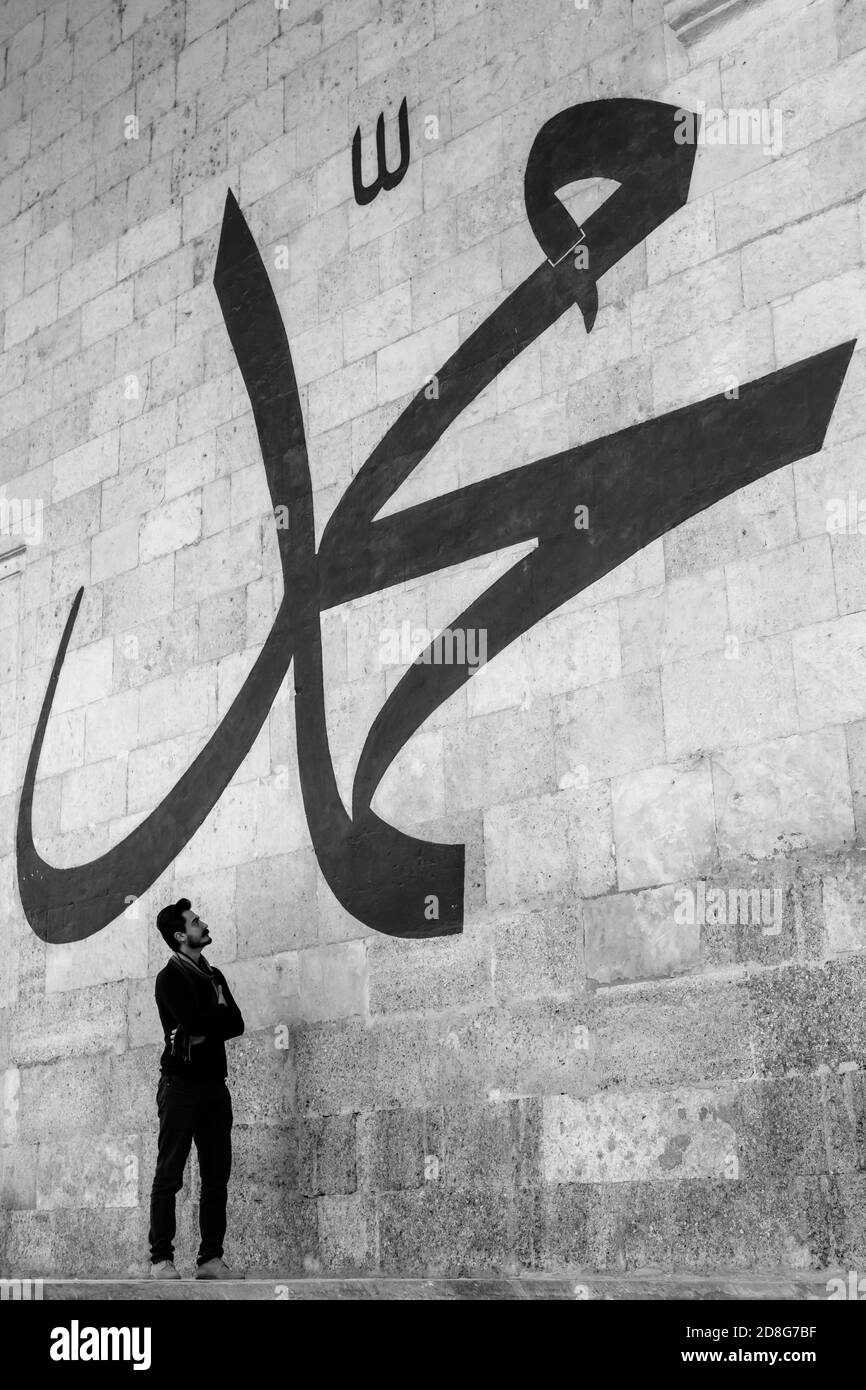 Young Man Staring at the Arabic Calligraphy meaning 'Prophet Muhammad' on the Wall of old Edirne Mosque Stock Photohttps://www.alamy.com/image-license-details/?v=1https://www.alamy.com/young-man-staring-at-the-arabic-calligraphy-meaning-prophet-muhammad-on-the-wall-of-old-edirne-mosque-image383902387.html
Young Man Staring at the Arabic Calligraphy meaning 'Prophet Muhammad' on the Wall of old Edirne Mosque Stock Photohttps://www.alamy.com/image-license-details/?v=1https://www.alamy.com/young-man-staring-at-the-arabic-calligraphy-meaning-prophet-muhammad-on-the-wall-of-old-edirne-mosque-image383902387.htmlRF2D8G7BF–Young Man Staring at the Arabic Calligraphy meaning 'Prophet Muhammad' on the Wall of old Edirne Mosque
 OLYMPUS DIGITAL CAMERA Stock Photohttps://www.alamy.com/image-license-details/?v=1https://www.alamy.com/olympus-digital-camera-image564176707.html
OLYMPUS DIGITAL CAMERA Stock Photohttps://www.alamy.com/image-license-details/?v=1https://www.alamy.com/olympus-digital-camera-image564176707.htmlRF2RNTD43–OLYMPUS DIGITAL CAMERA
 ISTANBUL, Turkey — Large calligraphic medallions display sacred Islamic names in Hagia Sophia, inscribed by master calligrapher Kazasker Mustafa Izzed Effendi. These roundels feature the names of Allah, Muhammad, the first four caliphs, and Muhammad's grandchildren in Arabic script. The monumental medallions represent significant examples of Ottoman calligraphic art. Stock Photohttps://www.alamy.com/image-license-details/?v=1https://www.alamy.com/stock-photo-istanbul-turkey-large-calligraphic-medallions-display-sacred-islamic-79126995.html
ISTANBUL, Turkey — Large calligraphic medallions display sacred Islamic names in Hagia Sophia, inscribed by master calligrapher Kazasker Mustafa Izzed Effendi. These roundels feature the names of Allah, Muhammad, the first four caliphs, and Muhammad's grandchildren in Arabic script. The monumental medallions represent significant examples of Ottoman calligraphic art. Stock Photohttps://www.alamy.com/image-license-details/?v=1https://www.alamy.com/stock-photo-istanbul-turkey-large-calligraphic-medallions-display-sacred-islamic-79126995.htmlRMEGMF83–ISTANBUL, Turkey — Large calligraphic medallions display sacred Islamic names in Hagia Sophia, inscribed by master calligrapher Kazasker Mustafa Izzed Effendi. These roundels feature the names of Allah, Muhammad, the first four caliphs, and Muhammad's grandchildren in Arabic script. The monumental medallions represent significant examples of Ottoman calligraphic art.
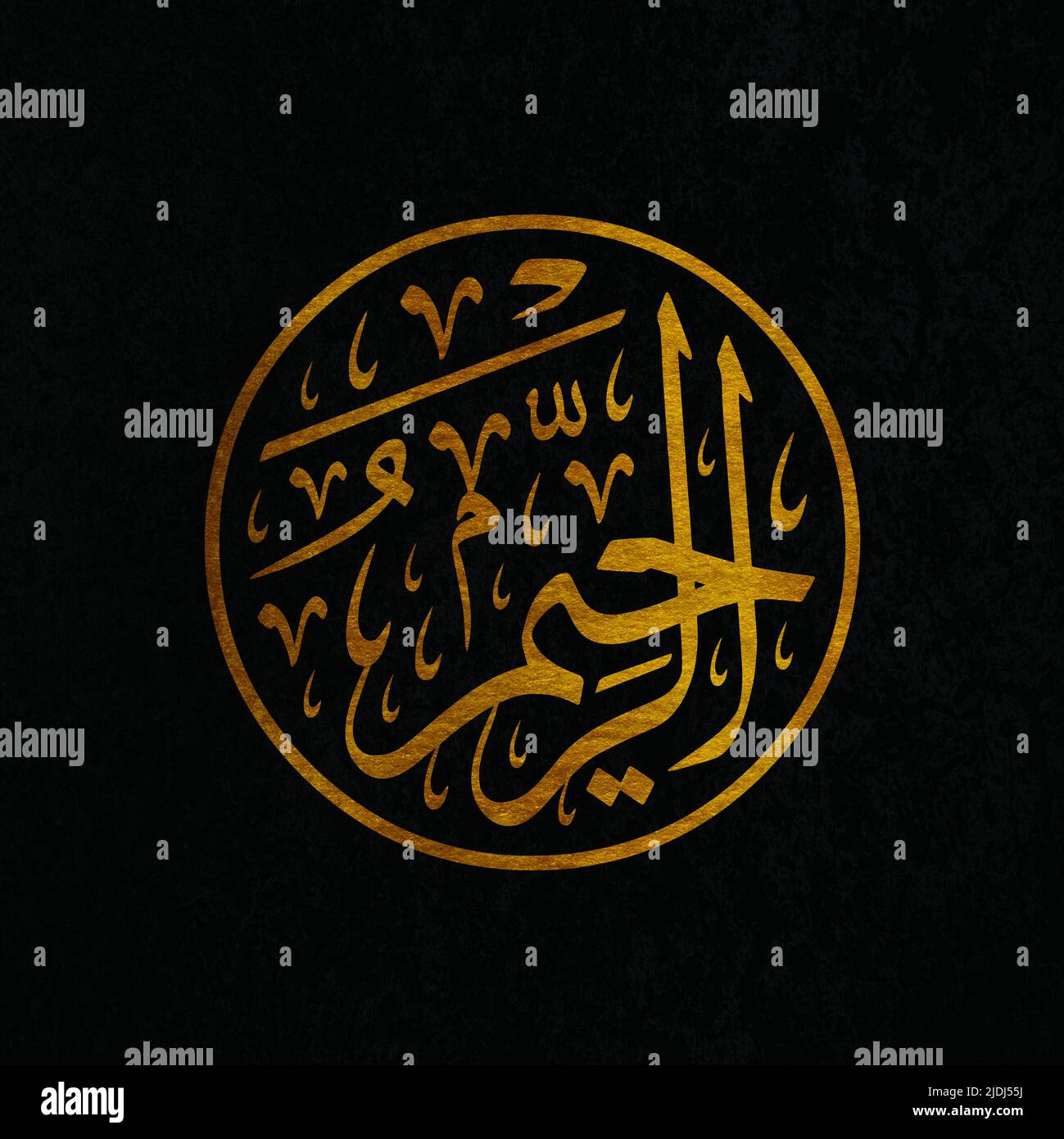 Ar Raheem Allah name Arabic Calligraphy Painting fro Home decor Stock Photohttps://www.alamy.com/image-license-details/?v=1https://www.alamy.com/ar-raheem-allah-name-arabic-calligraphy-painting-fro-home-decor-image473069678.html
Ar Raheem Allah name Arabic Calligraphy Painting fro Home decor Stock Photohttps://www.alamy.com/image-license-details/?v=1https://www.alamy.com/ar-raheem-allah-name-arabic-calligraphy-painting-fro-home-decor-image473069678.htmlRF2JDJ55J–Ar Raheem Allah name Arabic Calligraphy Painting fro Home decor
 PAKISTAN-Islamabad 21st 4, 2023, Arab calligraphy 'Basmala'on the wall of the mosque in Side. Text in Arabic: 'In the name of God, the Most Gracious, Stock Photohttps://www.alamy.com/image-license-details/?v=1https://www.alamy.com/pakistan-islamabad-21st-4-2023-arab-calligraphy-basmalaon-the-wall-of-the-mosque-in-side-text-in-arabic-in-the-name-of-god-the-most-gracious-image547252836.html
PAKISTAN-Islamabad 21st 4, 2023, Arab calligraphy 'Basmala'on the wall of the mosque in Side. Text in Arabic: 'In the name of God, the Most Gracious, Stock Photohttps://www.alamy.com/image-license-details/?v=1https://www.alamy.com/pakistan-islamabad-21st-4-2023-arab-calligraphy-basmalaon-the-wall-of-the-mosque-in-side-text-in-arabic-in-the-name-of-god-the-most-gracious-image547252836.htmlRF2PP9EG4–PAKISTAN-Islamabad 21st 4, 2023, Arab calligraphy 'Basmala'on the wall of the mosque in Side. Text in Arabic: 'In the name of God, the Most Gracious,
 Huge procession of Muharram Stock Photohttps://www.alamy.com/image-license-details/?v=1https://www.alamy.com/stock-image-huge-procession-of-muharram-162312584.html
Huge procession of Muharram Stock Photohttps://www.alamy.com/image-license-details/?v=1https://www.alamy.com/stock-image-huge-procession-of-muharram-162312584.htmlRFKC1YA0–Huge procession of Muharram
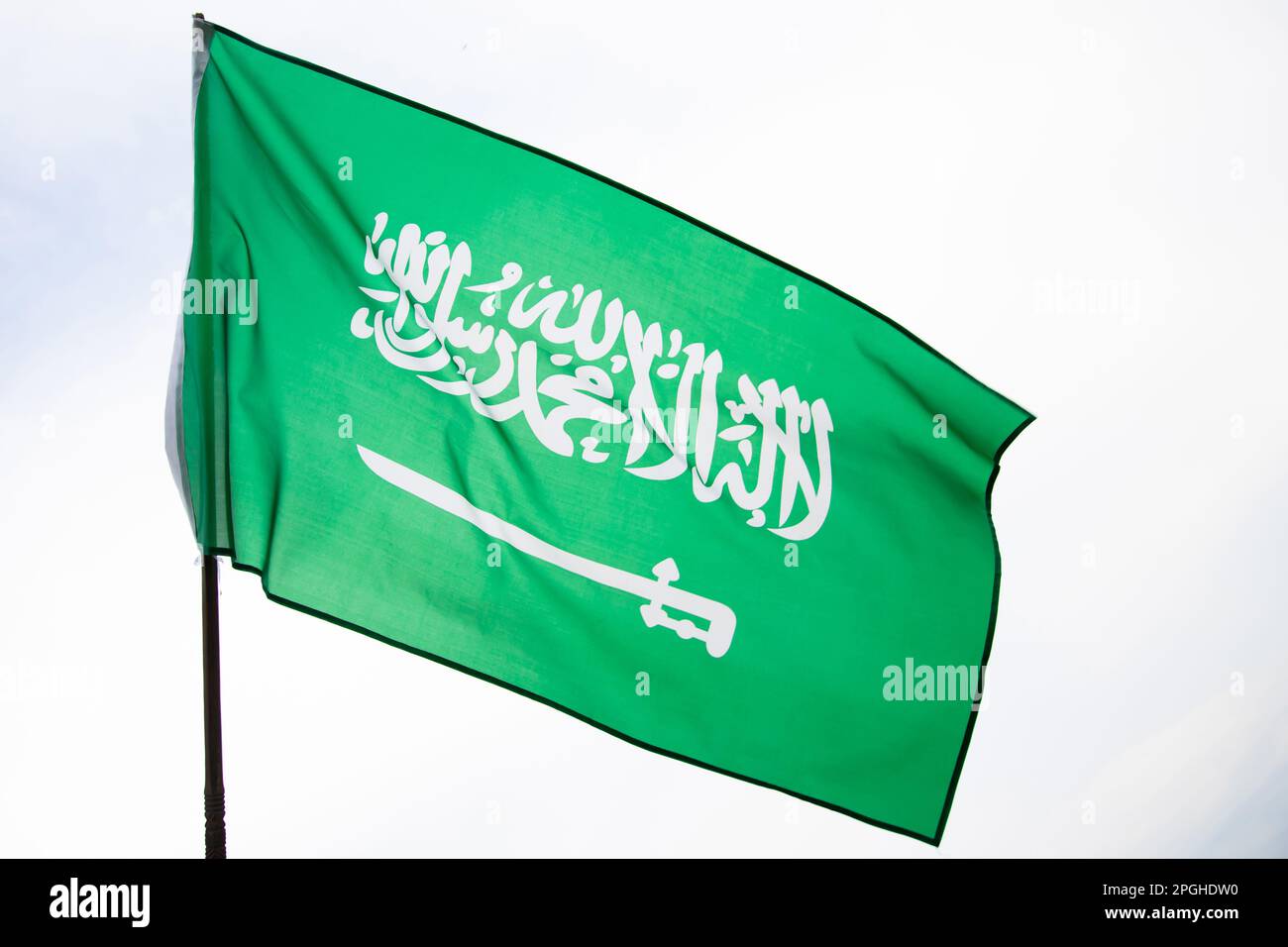 Saudi Arabia flag, Statement translation: There is no God but Allah, Muhammad is the Messenger of Allah. Use it for national day and and country natio Stock Photohttps://www.alamy.com/image-license-details/?v=1https://www.alamy.com/saudi-arabia-flag-statement-translation-there-is-no-god-but-allah-muhammad-is-the-messenger-of-allah-use-it-for-national-day-and-and-country-natio-image543739980.html
Saudi Arabia flag, Statement translation: There is no God but Allah, Muhammad is the Messenger of Allah. Use it for national day and and country natio Stock Photohttps://www.alamy.com/image-license-details/?v=1https://www.alamy.com/saudi-arabia-flag-statement-translation-there-is-no-god-but-allah-muhammad-is-the-messenger-of-allah-use-it-for-national-day-and-and-country-natio-image543739980.htmlRF2PGHDW0–Saudi Arabia flag, Statement translation: There is no God but Allah, Muhammad is the Messenger of Allah. Use it for national day and and country natio
 MECCA, SAUDI ARABIA-CIRCA 2016 : Muslim pilgrim in white 'ihram' cloth perform a prayer at Tana'em mosque in Mecca, Saudi Arabia. Stock Photohttps://www.alamy.com/image-license-details/?v=1https://www.alamy.com/mecca-saudi-arabia-circa-2016-muslim-pilgrim-in-white-ihram-cloth-perform-a-prayer-at-tanaem-mosque-in-mecca-saudi-arabia-image236610647.html
MECCA, SAUDI ARABIA-CIRCA 2016 : Muslim pilgrim in white 'ihram' cloth perform a prayer at Tana'em mosque in Mecca, Saudi Arabia. Stock Photohttps://www.alamy.com/image-license-details/?v=1https://www.alamy.com/mecca-saudi-arabia-circa-2016-muslim-pilgrim-in-white-ihram-cloth-perform-a-prayer-at-tanaem-mosque-in-mecca-saudi-arabia-image236610647.htmlRMRMXF87–MECCA, SAUDI ARABIA-CIRCA 2016 : Muslim pilgrim in white 'ihram' cloth perform a prayer at Tana'em mosque in Mecca, Saudi Arabia.
 Prayer Beads on Top of an Open Holy Quran Verses Extreme Close Up Stock Photohttps://www.alamy.com/image-license-details/?v=1https://www.alamy.com/prayer-beads-on-top-of-an-open-holy-quran-verses-extreme-close-up-image457573823.html
Prayer Beads on Top of an Open Holy Quran Verses Extreme Close Up Stock Photohttps://www.alamy.com/image-license-details/?v=1https://www.alamy.com/prayer-beads-on-top-of-an-open-holy-quran-verses-extreme-close-up-image457573823.htmlRF2HGC827–Prayer Beads on Top of an Open Holy Quran Verses Extreme Close Up
 A Quran, principal holy book of Islam, over a wooden stand, enveloped in a ray of divine light. Stock Photohttps://www.alamy.com/image-license-details/?v=1https://www.alamy.com/a-quran-principal-holy-book-of-islam-over-a-wooden-stand-enveloped-in-a-ray-of-divine-light-image221853498.html
A Quran, principal holy book of Islam, over a wooden stand, enveloped in a ray of divine light. Stock Photohttps://www.alamy.com/image-license-details/?v=1https://www.alamy.com/a-quran-principal-holy-book-of-islam-over-a-wooden-stand-enveloped-in-a-ray-of-divine-light-image221853498.htmlRFPTX8B6–A Quran, principal holy book of Islam, over a wooden stand, enveloped in a ray of divine light.
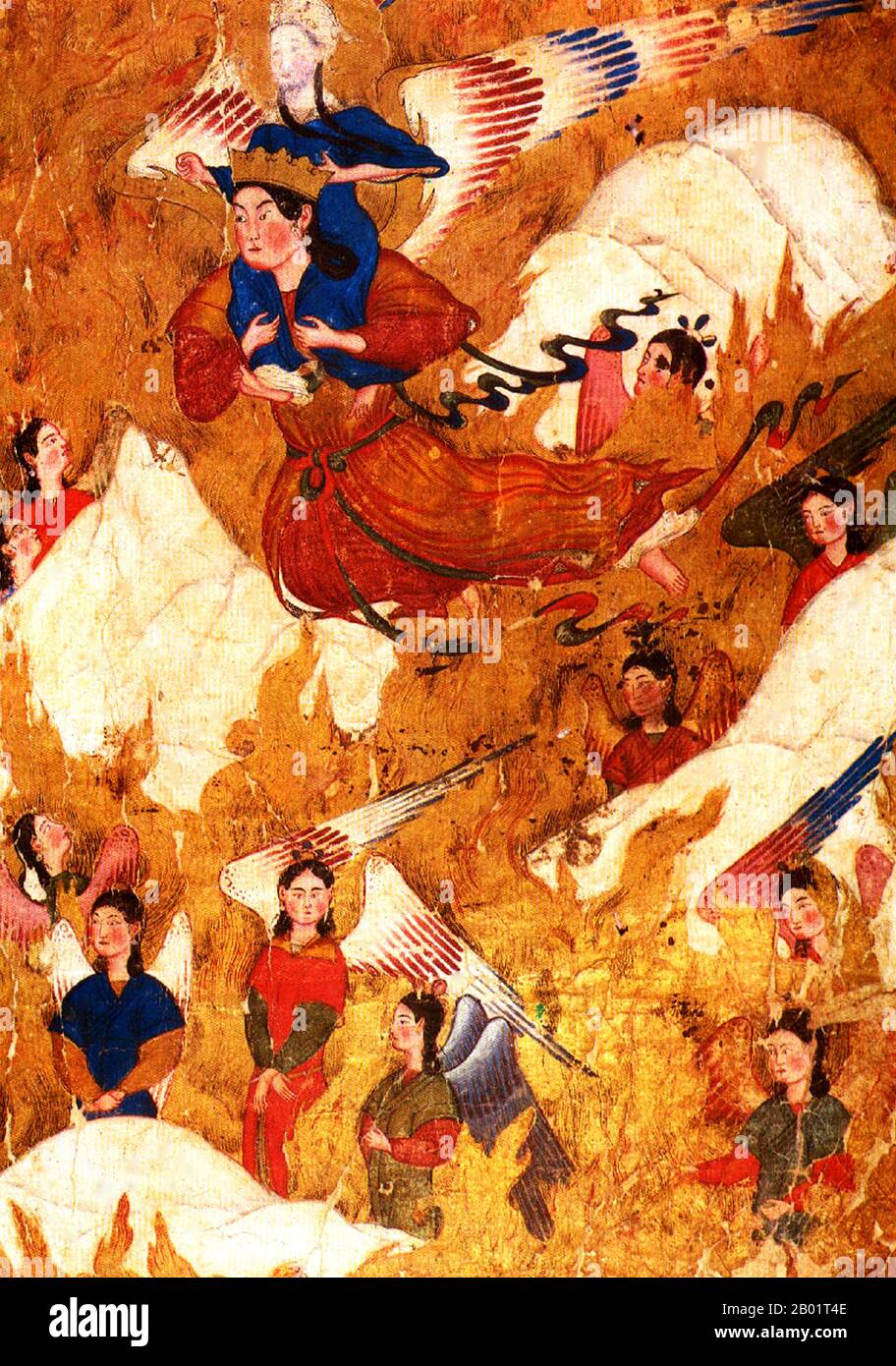 Iran/Persia: The angel Jibril (Gabriel) carries the Prophet Muhammad on his miraj or night journey. Miniature painting from the Miraj Nama or 'Ascension of Muhammad' by Ahmad Musa, c. 1330-1350. The Isra and Mi'raj are the two parts of a Night Journey that, according to Islamic tradition, the Prophet Muhammad took during a single night around the year 621. It considered as both a physical and spiritual journey. A brief outline of the story is related in surah 17 'Al-Isra' of the Qur'an, and other details come from the Hadith, supplemental accounts of the life of the Prophet Muhammad. Stock Photohttps://www.alamy.com/image-license-details/?v=1https://www.alamy.com/iranpersia-the-angel-jibril-gabriel-carries-the-prophet-muhammad-on-his-miraj-or-night-journey-miniature-painting-from-the-miraj-nama-or-ascension-of-muhammad-by-ahmad-musa-c-1330-1350-the-isra-and-miraj-are-the-two-parts-of-a-night-journey-that-according-to-islamic-tradition-the-prophet-muhammad-took-during-a-single-night-around-the-year-621-it-considered-as-both-a-physical-and-spiritual-journey-a-brief-outline-of-the-story-is-related-in-surah-17-al-isra-of-the-quran-and-other-details-come-from-the-hadith-supplemental-accounts-of-the-life-of-the-prophet-muhammad-image344248254.html
Iran/Persia: The angel Jibril (Gabriel) carries the Prophet Muhammad on his miraj or night journey. Miniature painting from the Miraj Nama or 'Ascension of Muhammad' by Ahmad Musa, c. 1330-1350. The Isra and Mi'raj are the two parts of a Night Journey that, according to Islamic tradition, the Prophet Muhammad took during a single night around the year 621. It considered as both a physical and spiritual journey. A brief outline of the story is related in surah 17 'Al-Isra' of the Qur'an, and other details come from the Hadith, supplemental accounts of the life of the Prophet Muhammad. Stock Photohttps://www.alamy.com/image-license-details/?v=1https://www.alamy.com/iranpersia-the-angel-jibril-gabriel-carries-the-prophet-muhammad-on-his-miraj-or-night-journey-miniature-painting-from-the-miraj-nama-or-ascension-of-muhammad-by-ahmad-musa-c-1330-1350-the-isra-and-miraj-are-the-two-parts-of-a-night-journey-that-according-to-islamic-tradition-the-prophet-muhammad-took-during-a-single-night-around-the-year-621-it-considered-as-both-a-physical-and-spiritual-journey-a-brief-outline-of-the-story-is-related-in-surah-17-al-isra-of-the-quran-and-other-details-come-from-the-hadith-supplemental-accounts-of-the-life-of-the-prophet-muhammad-image344248254.htmlRM2B01T4E–Iran/Persia: The angel Jibril (Gabriel) carries the Prophet Muhammad on his miraj or night journey. Miniature painting from the Miraj Nama or 'Ascension of Muhammad' by Ahmad Musa, c. 1330-1350. The Isra and Mi'raj are the two parts of a Night Journey that, according to Islamic tradition, the Prophet Muhammad took during a single night around the year 621. It considered as both a physical and spiritual journey. A brief outline of the story is related in surah 17 'Al-Isra' of the Qur'an, and other details come from the Hadith, supplemental accounts of the life of the Prophet Muhammad.
 Arabic calligraphy of Allah (Islamic God) on the right and Prophet Muhammad transliterated as 'Muhammad Rasulullah' (which mean Stock Photohttps://www.alamy.com/image-license-details/?v=1https://www.alamy.com/stock-photo-arabic-calligraphy-of-allah-islamic-god-on-the-right-and-prophet-muhammad-54123059.html
Arabic calligraphy of Allah (Islamic God) on the right and Prophet Muhammad transliterated as 'Muhammad Rasulullah' (which mean Stock Photohttps://www.alamy.com/image-license-details/?v=1https://www.alamy.com/stock-photo-arabic-calligraphy-of-allah-islamic-god-on-the-right-and-prophet-muhammad-54123059.htmlRFD41EEB–Arabic calligraphy of Allah (Islamic God) on the right and Prophet Muhammad transliterated as 'Muhammad Rasulullah' (which mean
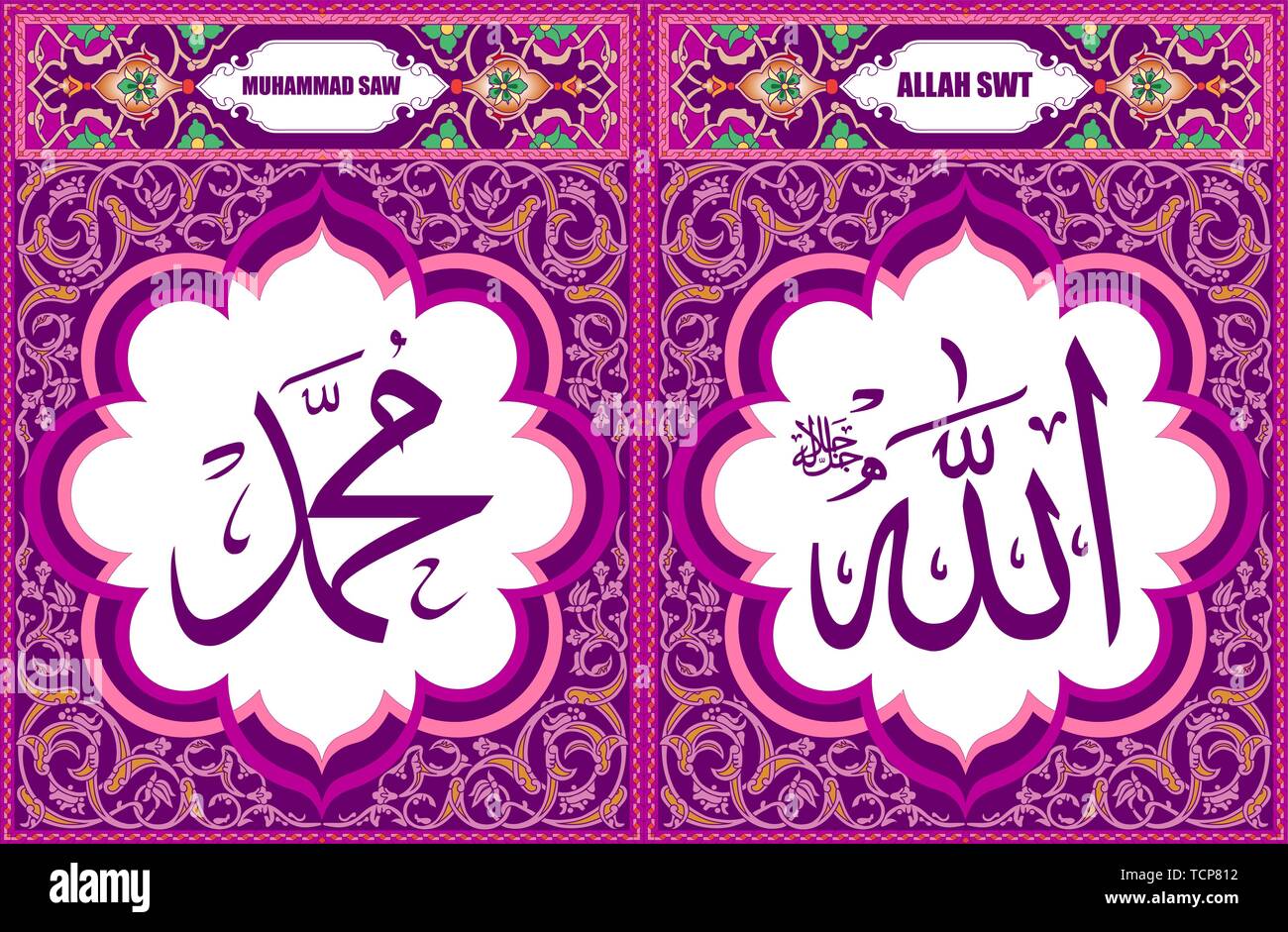 Allah & Muhammad Islamic Art decorating wall art Stock Vectorhttps://www.alamy.com/image-license-details/?v=1https://www.alamy.com/allah-muhammad-islamic-art-decorating-wall-art-image248810270.html
Allah & Muhammad Islamic Art decorating wall art Stock Vectorhttps://www.alamy.com/image-license-details/?v=1https://www.alamy.com/allah-muhammad-islamic-art-decorating-wall-art-image248810270.htmlRFTCP812–Allah & Muhammad Islamic Art decorating wall art
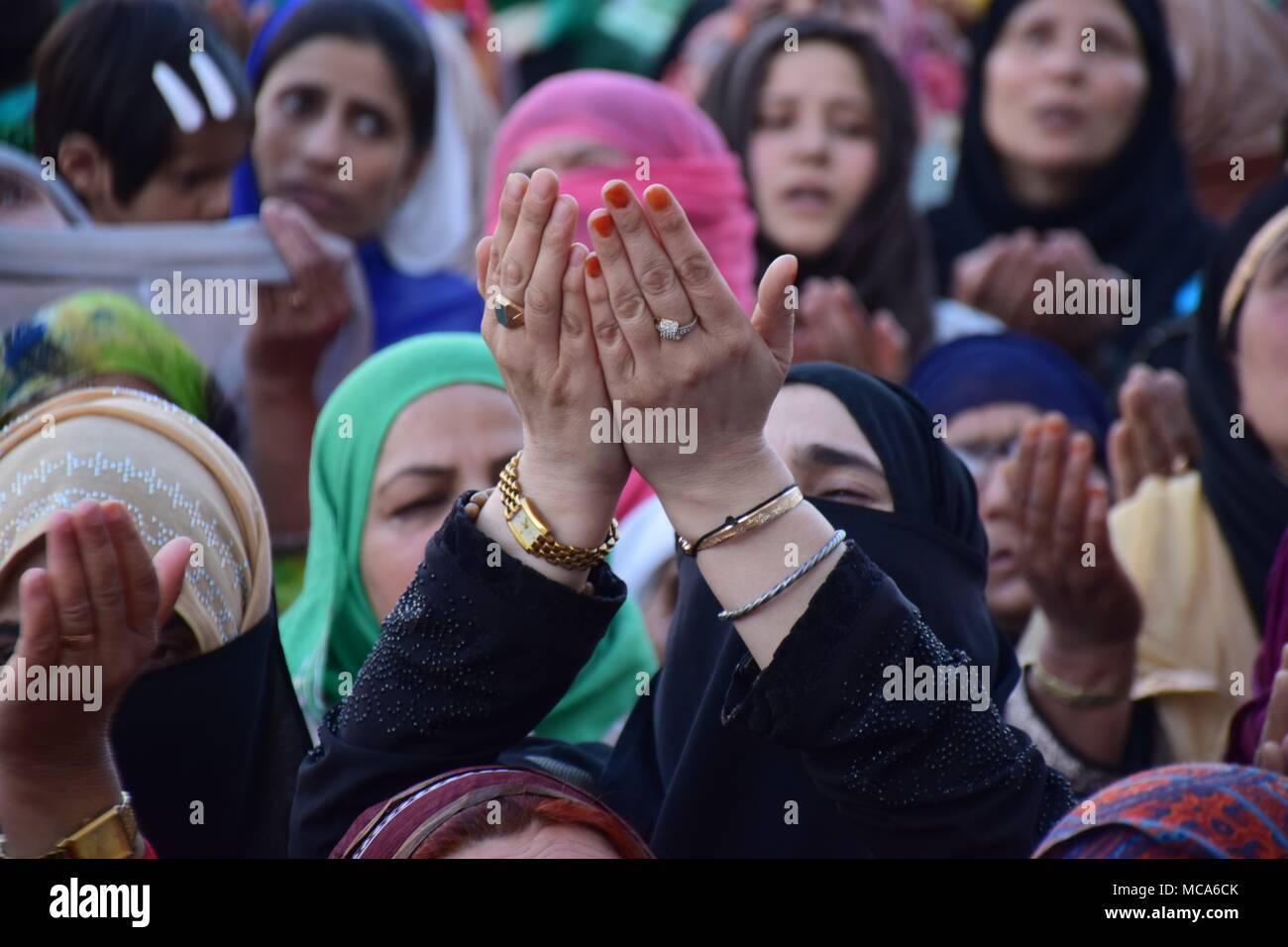 Kashmiri Muslim Devotees beseech for blessings as holy relic is being displayed on the occasion of Mehraj-ul-Alam at Dargah Hazratbal in Srinagar, summer capital of Indian Kashmir. Every year thousands of Muslim devotees from across Kashmir gathers at Hazratbal shrine in central Srinagar summer capital of Indian Kashmir for prayers and to watch the Holy Relic (moe-e-moqadas) believed to be a hair from the beard of Prophet Mohammed PBUH, displayed for public on Meraj-ul Alam and other festivals. Mehraj-ul-Alam, A festival which marks the ascension Of Prophet Muhammad PBUH To Heaven. Stock Photohttps://www.alamy.com/image-license-details/?v=1https://www.alamy.com/kashmiri-muslim-devotees-beseech-for-blessings-as-holy-relic-is-being-displayed-on-the-occasion-of-mehraj-ul-alam-at-dargah-hazratbal-in-srinagar-summer-capital-of-indian-kashmir-every-year-thousands-of-muslim-devotees-from-across-kashmir-gathers-at-hazratbal-shrine-in-central-srinagar-summer-capital-of-indian-kashmir-for-prayers-and-to-watch-the-holy-relic-moe-e-moqadas-believed-to-be-a-hair-from-the-beard-of-prophet-mohammed-pbuh-displayed-for-public-on-meraj-ul-alam-and-other-festivals-mehraj-ul-alam-a-festival-which-marks-the-ascension-of-prophet-muhammad-pbuh-to-heaven-image179704131.html
Kashmiri Muslim Devotees beseech for blessings as holy relic is being displayed on the occasion of Mehraj-ul-Alam at Dargah Hazratbal in Srinagar, summer capital of Indian Kashmir. Every year thousands of Muslim devotees from across Kashmir gathers at Hazratbal shrine in central Srinagar summer capital of Indian Kashmir for prayers and to watch the Holy Relic (moe-e-moqadas) believed to be a hair from the beard of Prophet Mohammed PBUH, displayed for public on Meraj-ul Alam and other festivals. Mehraj-ul-Alam, A festival which marks the ascension Of Prophet Muhammad PBUH To Heaven. Stock Photohttps://www.alamy.com/image-license-details/?v=1https://www.alamy.com/kashmiri-muslim-devotees-beseech-for-blessings-as-holy-relic-is-being-displayed-on-the-occasion-of-mehraj-ul-alam-at-dargah-hazratbal-in-srinagar-summer-capital-of-indian-kashmir-every-year-thousands-of-muslim-devotees-from-across-kashmir-gathers-at-hazratbal-shrine-in-central-srinagar-summer-capital-of-indian-kashmir-for-prayers-and-to-watch-the-holy-relic-moe-e-moqadas-believed-to-be-a-hair-from-the-beard-of-prophet-mohammed-pbuh-displayed-for-public-on-meraj-ul-alam-and-other-festivals-mehraj-ul-alam-a-festival-which-marks-the-ascension-of-prophet-muhammad-pbuh-to-heaven-image179704131.htmlRMMCA6CK–Kashmiri Muslim Devotees beseech for blessings as holy relic is being displayed on the occasion of Mehraj-ul-Alam at Dargah Hazratbal in Srinagar, summer capital of Indian Kashmir. Every year thousands of Muslim devotees from across Kashmir gathers at Hazratbal shrine in central Srinagar summer capital of Indian Kashmir for prayers and to watch the Holy Relic (moe-e-moqadas) believed to be a hair from the beard of Prophet Mohammed PBUH, displayed for public on Meraj-ul Alam and other festivals. Mehraj-ul-Alam, A festival which marks the ascension Of Prophet Muhammad PBUH To Heaven.
 Al-Aqsa Mosque (Al-Masjid al-Aqsa), in the Old City of Jerusalem, is the third holiest site in Islam. The mosque was built on top of the Temple Mount, known as Haram esh-Sharif in Islam. Muslims believe that Muhammad was transported from the Sacred Mosque in Mecca to al-Aqsa during the Night Journey. Islamic tradition holds that Muhammad led prayers towards this site until the 17th month after his migration from Mecca to Medina, when Allah directed him to turn towards the Kaaba in Mecca. The mosque was completely destroyed by an earthquake in 746 and rebuilt by the Abbasid caliph al-Mansur in Stock Photohttps://www.alamy.com/image-license-details/?v=1https://www.alamy.com/al-aqsa-mosque-al-masjid-al-aqsa-in-the-old-city-of-jerusalem-is-the-third-holiest-site-in-islam-the-mosque-was-built-on-top-of-the-temple-mount-known-as-haram-esh-sharif-in-islam-muslims-believe-that-muhammad-was-transported-from-the-sacred-mosque-in-mecca-to-al-aqsa-during-the-night-journey-islamic-tradition-holds-that-muhammad-led-prayers-towards-this-site-until-the-17th-month-after-his-migration-from-mecca-to-medina-when-allah-directed-him-to-turn-towards-the-kaaba-in-mecca-the-mosque-was-completely-destroyed-by-an-earthquake-in-746-and-rebuilt-by-the-abbasid-caliph-al-mansur-in-image634313189.html
Al-Aqsa Mosque (Al-Masjid al-Aqsa), in the Old City of Jerusalem, is the third holiest site in Islam. The mosque was built on top of the Temple Mount, known as Haram esh-Sharif in Islam. Muslims believe that Muhammad was transported from the Sacred Mosque in Mecca to al-Aqsa during the Night Journey. Islamic tradition holds that Muhammad led prayers towards this site until the 17th month after his migration from Mecca to Medina, when Allah directed him to turn towards the Kaaba in Mecca. The mosque was completely destroyed by an earthquake in 746 and rebuilt by the Abbasid caliph al-Mansur in Stock Photohttps://www.alamy.com/image-license-details/?v=1https://www.alamy.com/al-aqsa-mosque-al-masjid-al-aqsa-in-the-old-city-of-jerusalem-is-the-third-holiest-site-in-islam-the-mosque-was-built-on-top-of-the-temple-mount-known-as-haram-esh-sharif-in-islam-muslims-believe-that-muhammad-was-transported-from-the-sacred-mosque-in-mecca-to-al-aqsa-during-the-night-journey-islamic-tradition-holds-that-muhammad-led-prayers-towards-this-site-until-the-17th-month-after-his-migration-from-mecca-to-medina-when-allah-directed-him-to-turn-towards-the-kaaba-in-mecca-the-mosque-was-completely-destroyed-by-an-earthquake-in-746-and-rebuilt-by-the-abbasid-caliph-al-mansur-in-image634313189.htmlRM2YRYCXD–Al-Aqsa Mosque (Al-Masjid al-Aqsa), in the Old City of Jerusalem, is the third holiest site in Islam. The mosque was built on top of the Temple Mount, known as Haram esh-Sharif in Islam. Muslims believe that Muhammad was transported from the Sacred Mosque in Mecca to al-Aqsa during the Night Journey. Islamic tradition holds that Muhammad led prayers towards this site until the 17th month after his migration from Mecca to Medina, when Allah directed him to turn towards the Kaaba in Mecca. The mosque was completely destroyed by an earthquake in 746 and rebuilt by the Abbasid caliph al-Mansur in
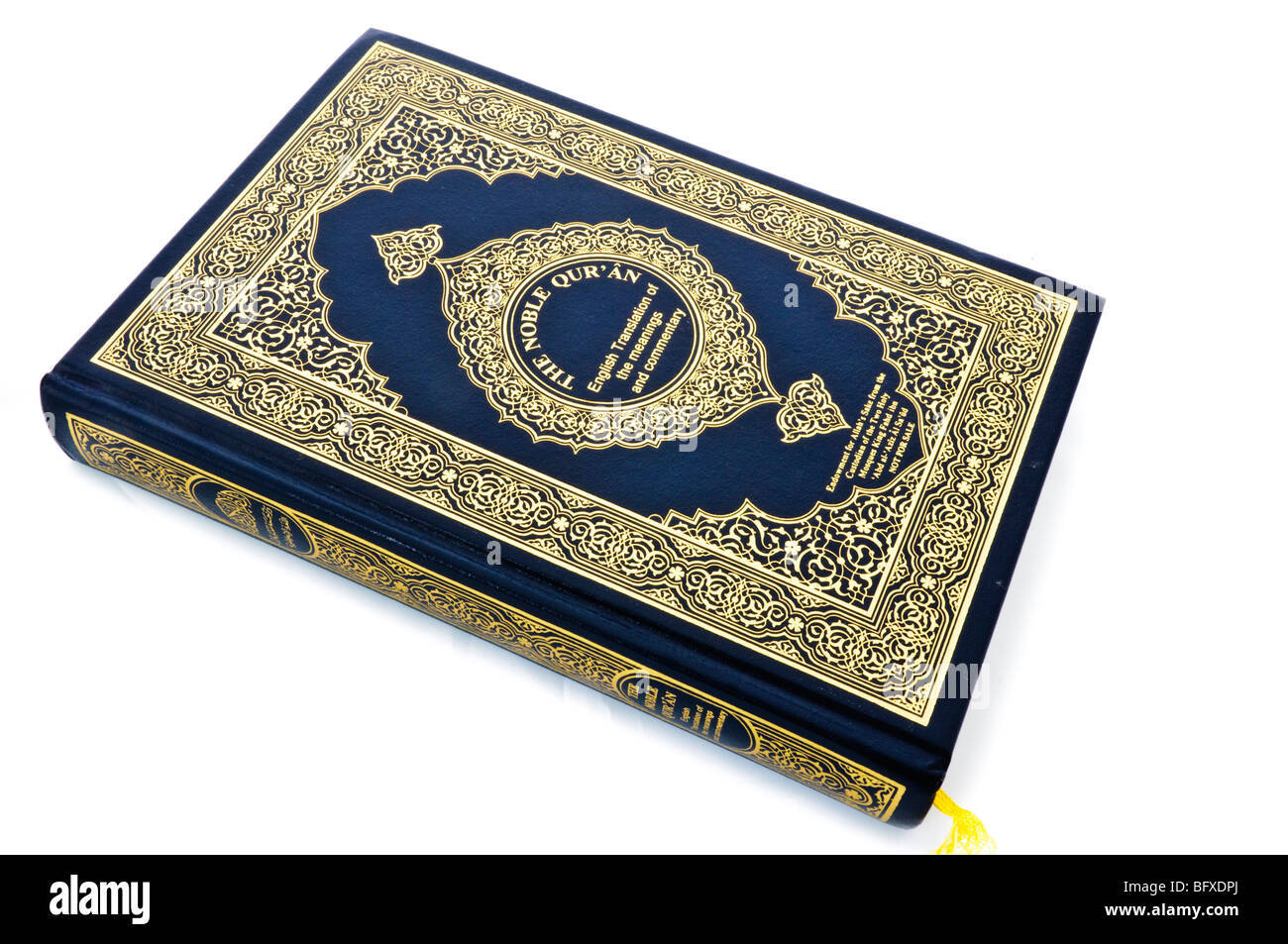 The Noble Quran Stock Photohttps://www.alamy.com/image-license-details/?v=1https://www.alamy.com/stock-photo-the-noble-quran-27011786.html
The Noble Quran Stock Photohttps://www.alamy.com/image-license-details/?v=1https://www.alamy.com/stock-photo-the-noble-quran-27011786.htmlRFBFXDPJ–The Noble Quran
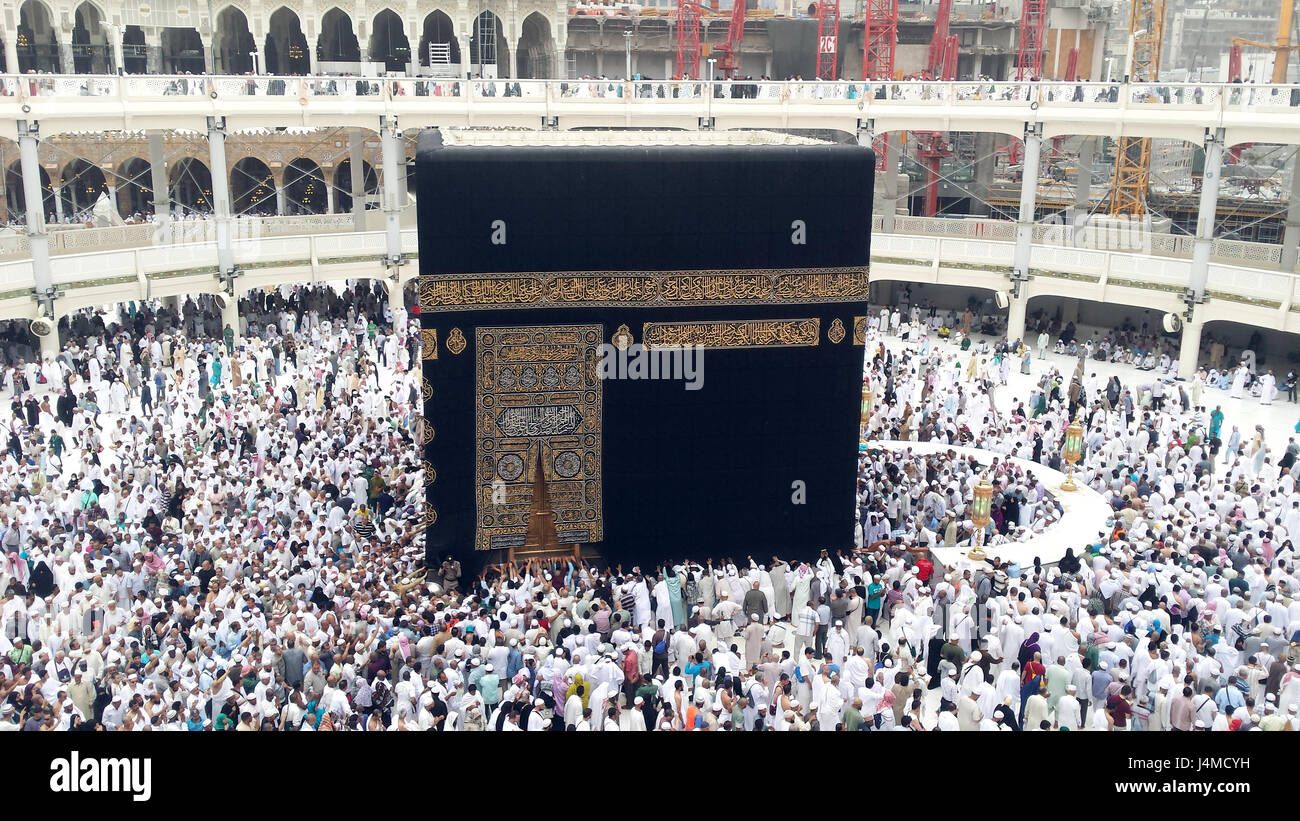 A huge crow of Islam Pilgrims walking around the holy Kaaba during Haj, Ramadan, Umrah Stock Photohttps://www.alamy.com/image-license-details/?v=1https://www.alamy.com/stock-photo-a-huge-crow-of-islam-pilgrims-walking-around-the-holy-kaaba-during-140590789.html
A huge crow of Islam Pilgrims walking around the holy Kaaba during Haj, Ramadan, Umrah Stock Photohttps://www.alamy.com/image-license-details/?v=1https://www.alamy.com/stock-photo-a-huge-crow-of-islam-pilgrims-walking-around-the-holy-kaaba-during-140590789.htmlRFJ4MCYH–A huge crow of Islam Pilgrims walking around the holy Kaaba during Haj, Ramadan, Umrah
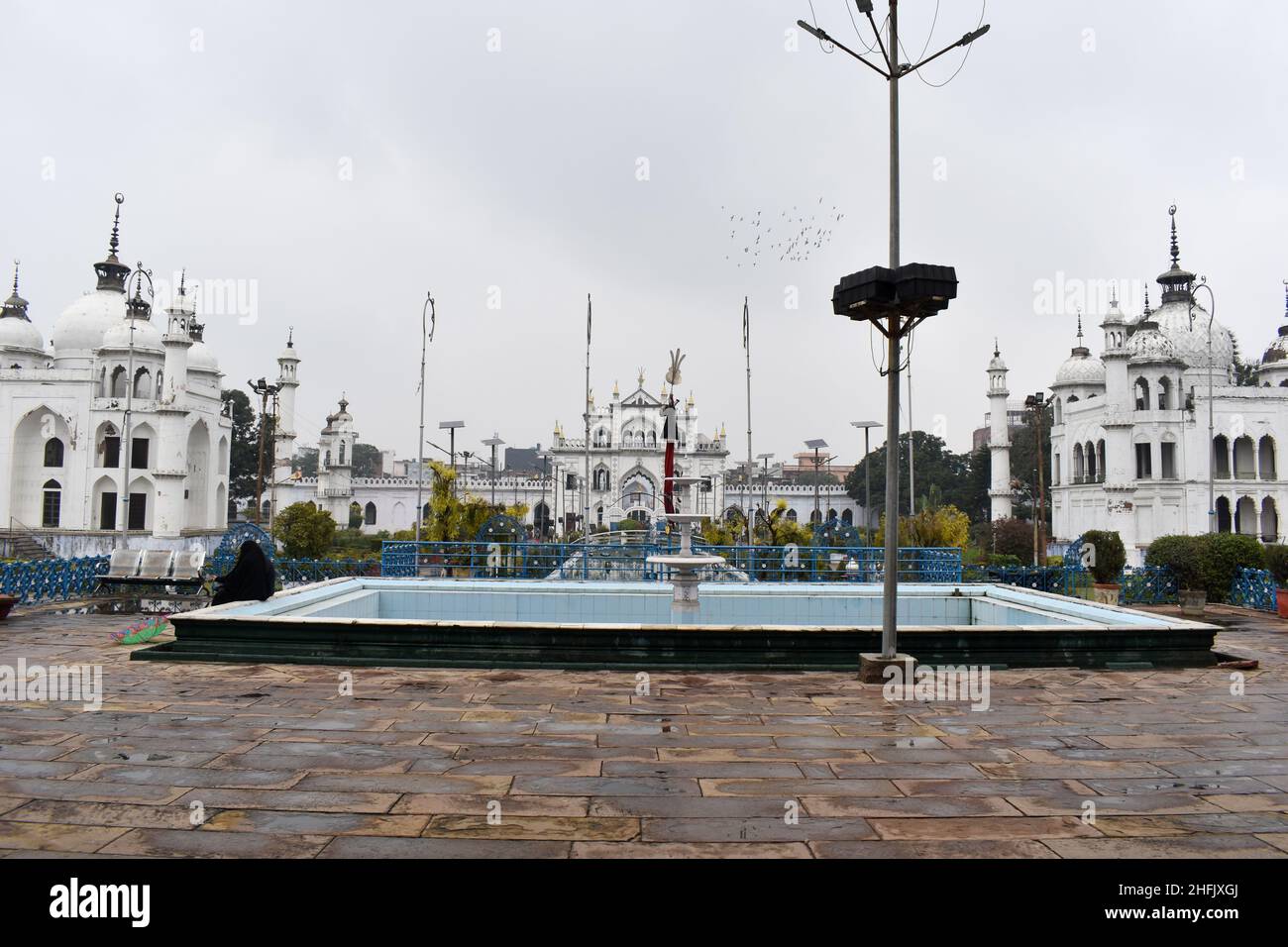 Full view of Chota Imambara initially a congregation hall for Shia Muslims. Built by Muhammad Ali Shah, Lucknow, Uttar Pradesh, India Stock Photohttps://www.alamy.com/image-license-details/?v=1https://www.alamy.com/full-view-of-chota-imambara-initially-a-congregation-hall-for-shia-muslims-built-by-muhammad-ali-shah-lucknow-uttar-pradesh-india-image457105394.html
Full view of Chota Imambara initially a congregation hall for Shia Muslims. Built by Muhammad Ali Shah, Lucknow, Uttar Pradesh, India Stock Photohttps://www.alamy.com/image-license-details/?v=1https://www.alamy.com/full-view-of-chota-imambara-initially-a-congregation-hall-for-shia-muslims-built-by-muhammad-ali-shah-lucknow-uttar-pradesh-india-image457105394.htmlRF2HFJXGJ–Full view of Chota Imambara initially a congregation hall for Shia Muslims. Built by Muhammad Ali Shah, Lucknow, Uttar Pradesh, India
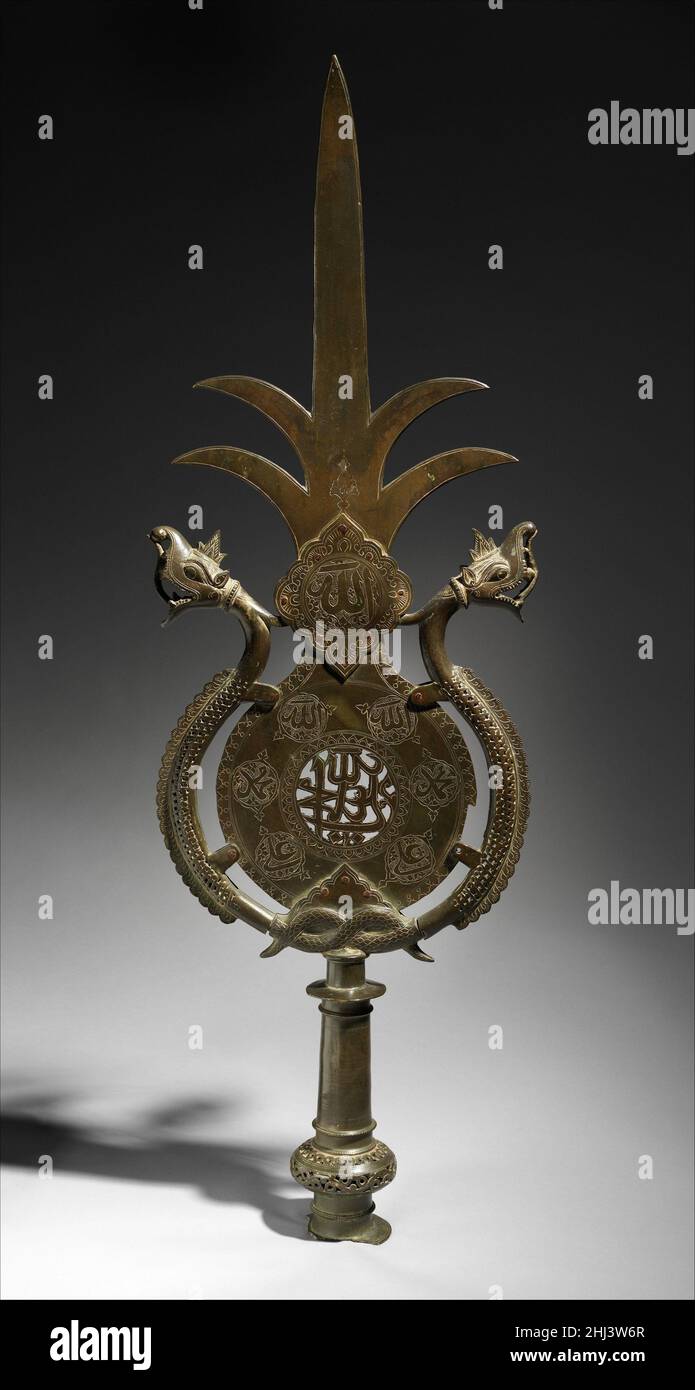 Processional Standard ('Alam) late 17th–early 18th century Standards are used in many parts of the Muslim world by the Shi'a community in processions marking the martyrdom of Imam Husain, grandson of the Prophet Muhammad, who died at the Battle of Karbala in A.D. 680. The pierced inscription at the center of this example reads 'Allah, Muhammad, 'Ali,' and these names are repeated in roundels surrounding the main inscription. Dragons encircle the central section and grasp it with their feet, while their tails intertwine at the bottom. Their bodies are pierced, and they have rounded scales on th Stock Photohttps://www.alamy.com/image-license-details/?v=1https://www.alamy.com/processional-standard-alam-late-17thearly-18th-century-standards-are-used-in-many-parts-of-the-muslim-world-by-the-shia-community-in-processions-marking-the-martyrdom-of-imam-husain-grandson-of-the-prophet-muhammad-who-died-at-the-battle-of-karbala-in-ad-680-the-pierced-inscription-at-the-center-of-this-example-reads-allah-muhammad-ali-and-these-names-are-repeated-in-roundels-surrounding-the-main-inscription-dragons-encircle-the-central-section-and-grasp-it-with-their-feet-while-their-tails-intertwine-at-the-bottom-their-bodies-are-pierced-and-they-have-rounded-scales-on-th-image458619023.html
Processional Standard ('Alam) late 17th–early 18th century Standards are used in many parts of the Muslim world by the Shi'a community in processions marking the martyrdom of Imam Husain, grandson of the Prophet Muhammad, who died at the Battle of Karbala in A.D. 680. The pierced inscription at the center of this example reads 'Allah, Muhammad, 'Ali,' and these names are repeated in roundels surrounding the main inscription. Dragons encircle the central section and grasp it with their feet, while their tails intertwine at the bottom. Their bodies are pierced, and they have rounded scales on th Stock Photohttps://www.alamy.com/image-license-details/?v=1https://www.alamy.com/processional-standard-alam-late-17thearly-18th-century-standards-are-used-in-many-parts-of-the-muslim-world-by-the-shia-community-in-processions-marking-the-martyrdom-of-imam-husain-grandson-of-the-prophet-muhammad-who-died-at-the-battle-of-karbala-in-ad-680-the-pierced-inscription-at-the-center-of-this-example-reads-allah-muhammad-ali-and-these-names-are-repeated-in-roundels-surrounding-the-main-inscription-dragons-encircle-the-central-section-and-grasp-it-with-their-feet-while-their-tails-intertwine-at-the-bottom-their-bodies-are-pierced-and-they-have-rounded-scales-on-th-image458619023.htmlRM2HJ3W6R–Processional Standard ('Alam) late 17th–early 18th century Standards are used in many parts of the Muslim world by the Shi'a community in processions marking the martyrdom of Imam Husain, grandson of the Prophet Muhammad, who died at the Battle of Karbala in A.D. 680. The pierced inscription at the center of this example reads 'Allah, Muhammad, 'Ali,' and these names are repeated in roundels surrounding the main inscription. Dragons encircle the central section and grasp it with their feet, while their tails intertwine at the bottom. Their bodies are pierced, and they have rounded scales on th
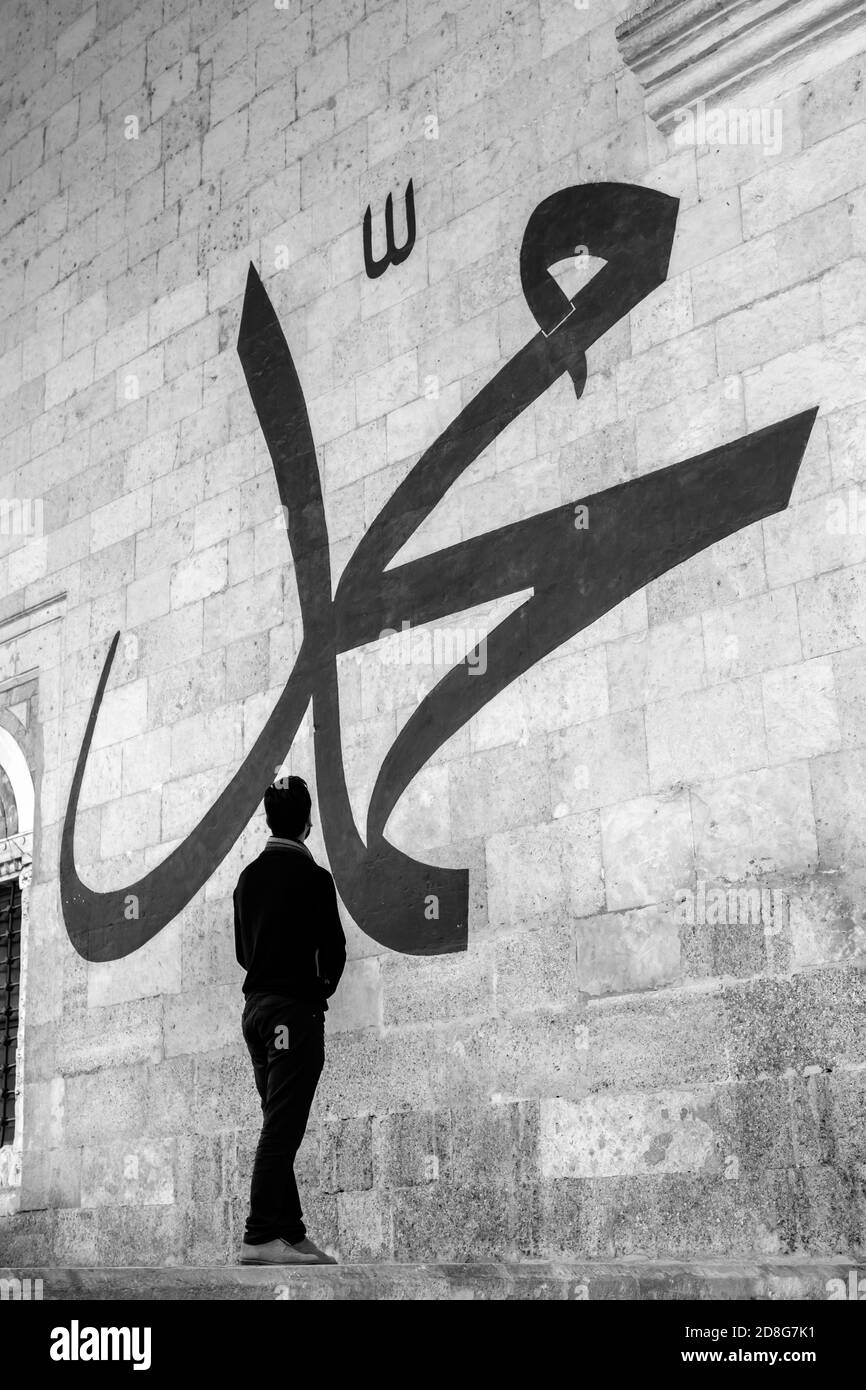 Young Man Staring at the Arabic Calligraphy meaning 'Prophet Muhammad' on the Wall of old Edirne Mosque Stock Photohttps://www.alamy.com/image-license-details/?v=1https://www.alamy.com/young-man-staring-at-the-arabic-calligraphy-meaning-prophet-muhammad-on-the-wall-of-old-edirne-mosque-image383902597.html
Young Man Staring at the Arabic Calligraphy meaning 'Prophet Muhammad' on the Wall of old Edirne Mosque Stock Photohttps://www.alamy.com/image-license-details/?v=1https://www.alamy.com/young-man-staring-at-the-arabic-calligraphy-meaning-prophet-muhammad-on-the-wall-of-old-edirne-mosque-image383902597.htmlRF2D8G7K1–Young Man Staring at the Arabic Calligraphy meaning 'Prophet Muhammad' on the Wall of old Edirne Mosque
 Top view arrangement with tea cookies spoon Stock Photohttps://www.alamy.com/image-license-details/?v=1https://www.alamy.com/top-view-arrangement-with-tea-cookies-spoon-image570337895.html
Top view arrangement with tea cookies spoon Stock Photohttps://www.alamy.com/image-license-details/?v=1https://www.alamy.com/top-view-arrangement-with-tea-cookies-spoon-image570337895.htmlRF2T3W3PF–Top view arrangement with tea cookies spoon
 ISTANBUL, Turkey — Large calligraphic medallions display sacred Islamic names in Hagia Sophia, inscribed by master calligrapher Kazasker Mustafa Izzed Effendi. These roundels feature the names of Allah, Muhammad, the first four caliphs, and Muhammad's grandchildren in Arabic script. The monumental medallions represent significant examples of Ottoman calligraphic art. Stock Photohttps://www.alamy.com/image-license-details/?v=1https://www.alamy.com/stock-photo-istanbul-turkey-large-calligraphic-medallions-display-sacred-islamic-79126989.html
ISTANBUL, Turkey — Large calligraphic medallions display sacred Islamic names in Hagia Sophia, inscribed by master calligrapher Kazasker Mustafa Izzed Effendi. These roundels feature the names of Allah, Muhammad, the first four caliphs, and Muhammad's grandchildren in Arabic script. The monumental medallions represent significant examples of Ottoman calligraphic art. Stock Photohttps://www.alamy.com/image-license-details/?v=1https://www.alamy.com/stock-photo-istanbul-turkey-large-calligraphic-medallions-display-sacred-islamic-79126989.htmlRMEGMF7W–ISTANBUL, Turkey — Large calligraphic medallions display sacred Islamic names in Hagia Sophia, inscribed by master calligrapher Kazasker Mustafa Izzed Effendi. These roundels feature the names of Allah, Muhammad, the first four caliphs, and Muhammad's grandchildren in Arabic script. The monumental medallions represent significant examples of Ottoman calligraphic art.
 Muhammad Al-Amine mosque, Downtown, Beirut, LEBANON. Stock Photohttps://www.alamy.com/image-license-details/?v=1https://www.alamy.com/stock-photo-muhammad-al-amine-mosque-downtown-beirut-lebanon-32895026.html
Muhammad Al-Amine mosque, Downtown, Beirut, LEBANON. Stock Photohttps://www.alamy.com/image-license-details/?v=1https://www.alamy.com/stock-photo-muhammad-al-amine-mosque-downtown-beirut-lebanon-32895026.htmlRMBWEDXA–Muhammad Al-Amine mosque, Downtown, Beirut, LEBANON.
 Islam - the religion of the Muslims Stock Photohttps://www.alamy.com/image-license-details/?v=1https://www.alamy.com/islam-the-religion-of-the-muslims-image67967678.html
Islam - the religion of the Muslims Stock Photohttps://www.alamy.com/image-license-details/?v=1https://www.alamy.com/islam-the-religion-of-the-muslims-image67967678.htmlRFDXG5D2–Islam - the religion of the Muslims
 Huge procession of Muharram Stock Photohttps://www.alamy.com/image-license-details/?v=1https://www.alamy.com/stock-image-huge-procession-of-muharram-162312605.html
Huge procession of Muharram Stock Photohttps://www.alamy.com/image-license-details/?v=1https://www.alamy.com/stock-image-huge-procession-of-muharram-162312605.htmlRFKC1YAN–Huge procession of Muharram
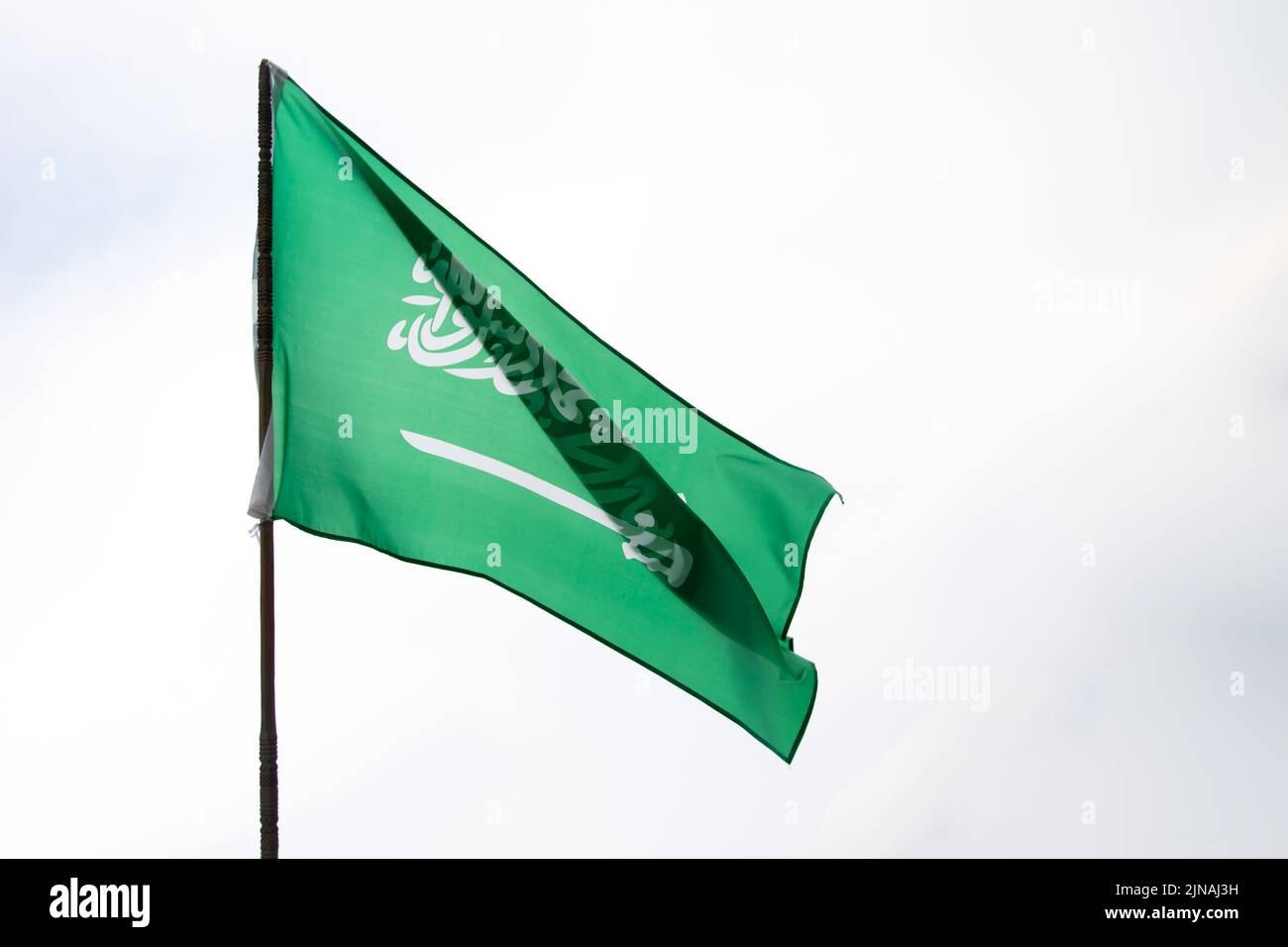 Saudi Arabia flag, Statement translation: There is no God but Allah, Muhammad is the Messenger of Allah. Use it for national day and and country natio Stock Photohttps://www.alamy.com/image-license-details/?v=1https://www.alamy.com/saudi-arabia-flag-statement-translation-there-is-no-god-but-allah-muhammad-is-the-messenger-of-allah-use-it-for-national-day-and-and-country-natio-image477821445.html
Saudi Arabia flag, Statement translation: There is no God but Allah, Muhammad is the Messenger of Allah. Use it for national day and and country natio Stock Photohttps://www.alamy.com/image-license-details/?v=1https://www.alamy.com/saudi-arabia-flag-statement-translation-there-is-no-god-but-allah-muhammad-is-the-messenger-of-allah-use-it-for-national-day-and-and-country-natio-image477821445.htmlRF2JNAJ3H–Saudi Arabia flag, Statement translation: There is no God but Allah, Muhammad is the Messenger of Allah. Use it for national day and and country natio
 MECCA, SAUDI ARABIA-CIRCA 2016 : Muslim pilgrim in white 'ihram' cloth perform a prayer at Tana'em mosque in Mecca, Saudi Arabia. Stock Photohttps://www.alamy.com/image-license-details/?v=1https://www.alamy.com/mecca-saudi-arabia-circa-2016-muslim-pilgrim-in-white-ihram-cloth-perform-a-prayer-at-tanaem-mosque-in-mecca-saudi-arabia-image236610669.html
MECCA, SAUDI ARABIA-CIRCA 2016 : Muslim pilgrim in white 'ihram' cloth perform a prayer at Tana'em mosque in Mecca, Saudi Arabia. Stock Photohttps://www.alamy.com/image-license-details/?v=1https://www.alamy.com/mecca-saudi-arabia-circa-2016-muslim-pilgrim-in-white-ihram-cloth-perform-a-prayer-at-tanaem-mosque-in-mecca-saudi-arabia-image236610669.htmlRMRMXF91–MECCA, SAUDI ARABIA-CIRCA 2016 : Muslim pilgrim in white 'ihram' cloth perform a prayer at Tana'em mosque in Mecca, Saudi Arabia.
 Two Holy Quran Stacked with Prayer Beads Close Up Stock Photohttps://www.alamy.com/image-license-details/?v=1https://www.alamy.com/two-holy-quran-stacked-with-prayer-beads-close-up-image457574043.html
Two Holy Quran Stacked with Prayer Beads Close Up Stock Photohttps://www.alamy.com/image-license-details/?v=1https://www.alamy.com/two-holy-quran-stacked-with-prayer-beads-close-up-image457574043.htmlRF2HGC8A3–Two Holy Quran Stacked with Prayer Beads Close Up
 Sarajevo, Bosnia: muslim men praying in the direction of Mecca outside the Gazi Husrev-beg Mosque (1532) in the old Bascarsija neighborhood Stock Photohttps://www.alamy.com/image-license-details/?v=1https://www.alamy.com/sarajevo-bosnia-muslim-men-praying-in-the-direction-of-mecca-outside-the-gazi-husrev-beg-mosque-1532-in-the-old-bascarsija-neighborhood-image248029275.html
Sarajevo, Bosnia: muslim men praying in the direction of Mecca outside the Gazi Husrev-beg Mosque (1532) in the old Bascarsija neighborhood Stock Photohttps://www.alamy.com/image-license-details/?v=1https://www.alamy.com/sarajevo-bosnia-muslim-men-praying-in-the-direction-of-mecca-outside-the-gazi-husrev-beg-mosque-1532-in-the-old-bascarsija-neighborhood-image248029275.htmlRFTBEKTB–Sarajevo, Bosnia: muslim men praying in the direction of Mecca outside the Gazi Husrev-beg Mosque (1532) in the old Bascarsija neighborhood
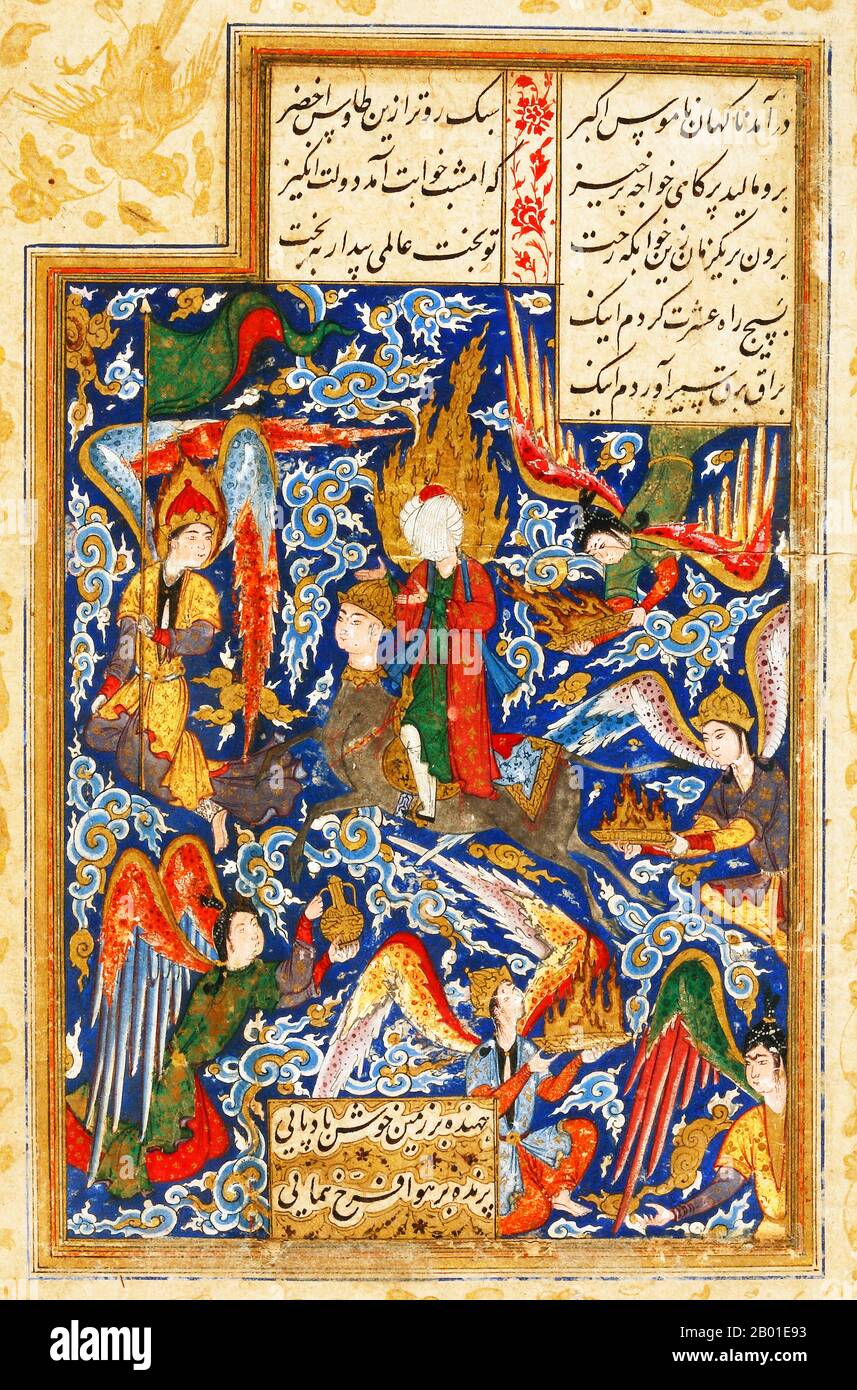 Iran/Persia: The ascent of the Prophet Muhammad to heaven on the celestial mount Burak, 16th century. The Isra and Mi'raj are the two parts of a Night Journey that, according to Islamic tradition, the Prophet Muhammad took during a single night around the year 621. It considered as both a physical and spiritual journey. In the journey, the Prophet Muhammad travels on the celestial mount Al-Buraq to 'the farthest temple' (Holy Temple of Al-Quds or Jerusalem) where he leads other prophets in prayer. He then ascends through the seven heavens where he speaks to God. Stock Photohttps://www.alamy.com/image-license-details/?v=1https://www.alamy.com/iranpersia-the-ascent-of-the-prophet-muhammad-to-heaven-on-the-celestial-mount-burak-16th-century-the-isra-and-miraj-are-the-two-parts-of-a-night-journey-that-according-to-islamic-tradition-the-prophet-muhammad-took-during-a-single-night-around-the-year-621-it-considered-as-both-a-physical-and-spiritual-journey-in-the-journey-the-prophet-muhammad-travels-on-the-celestial-mount-al-buraq-to-the-farthest-temple-holy-temple-of-al-quds-or-jerusalem-where-he-leads-other-prophets-in-prayer-he-then-ascends-through-the-seven-heavens-where-he-speaks-to-god-image344240543.html
Iran/Persia: The ascent of the Prophet Muhammad to heaven on the celestial mount Burak, 16th century. The Isra and Mi'raj are the two parts of a Night Journey that, according to Islamic tradition, the Prophet Muhammad took during a single night around the year 621. It considered as both a physical and spiritual journey. In the journey, the Prophet Muhammad travels on the celestial mount Al-Buraq to 'the farthest temple' (Holy Temple of Al-Quds or Jerusalem) where he leads other prophets in prayer. He then ascends through the seven heavens where he speaks to God. Stock Photohttps://www.alamy.com/image-license-details/?v=1https://www.alamy.com/iranpersia-the-ascent-of-the-prophet-muhammad-to-heaven-on-the-celestial-mount-burak-16th-century-the-isra-and-miraj-are-the-two-parts-of-a-night-journey-that-according-to-islamic-tradition-the-prophet-muhammad-took-during-a-single-night-around-the-year-621-it-considered-as-both-a-physical-and-spiritual-journey-in-the-journey-the-prophet-muhammad-travels-on-the-celestial-mount-al-buraq-to-the-farthest-temple-holy-temple-of-al-quds-or-jerusalem-where-he-leads-other-prophets-in-prayer-he-then-ascends-through-the-seven-heavens-where-he-speaks-to-god-image344240543.htmlRM2B01E93–Iran/Persia: The ascent of the Prophet Muhammad to heaven on the celestial mount Burak, 16th century. The Isra and Mi'raj are the two parts of a Night Journey that, according to Islamic tradition, the Prophet Muhammad took during a single night around the year 621. It considered as both a physical and spiritual journey. In the journey, the Prophet Muhammad travels on the celestial mount Al-Buraq to 'the farthest temple' (Holy Temple of Al-Quds or Jerusalem) where he leads other prophets in prayer. He then ascends through the seven heavens where he speaks to God.
 TETOVO, MACEDONIA - December 22, 2024: Aladza painted mosque, Tetovo, Macedonia Stock Photohttps://www.alamy.com/image-license-details/?v=1https://www.alamy.com/tetovo-macedonia-december-22-2024-aladza-painted-mosque-tetovo-macedonia-image636803911.html
TETOVO, MACEDONIA - December 22, 2024: Aladza painted mosque, Tetovo, Macedonia Stock Photohttps://www.alamy.com/image-license-details/?v=1https://www.alamy.com/tetovo-macedonia-december-22-2024-aladza-painted-mosque-tetovo-macedonia-image636803911.htmlRF2S00WTR–TETOVO, MACEDONIA - December 22, 2024: Aladza painted mosque, Tetovo, Macedonia
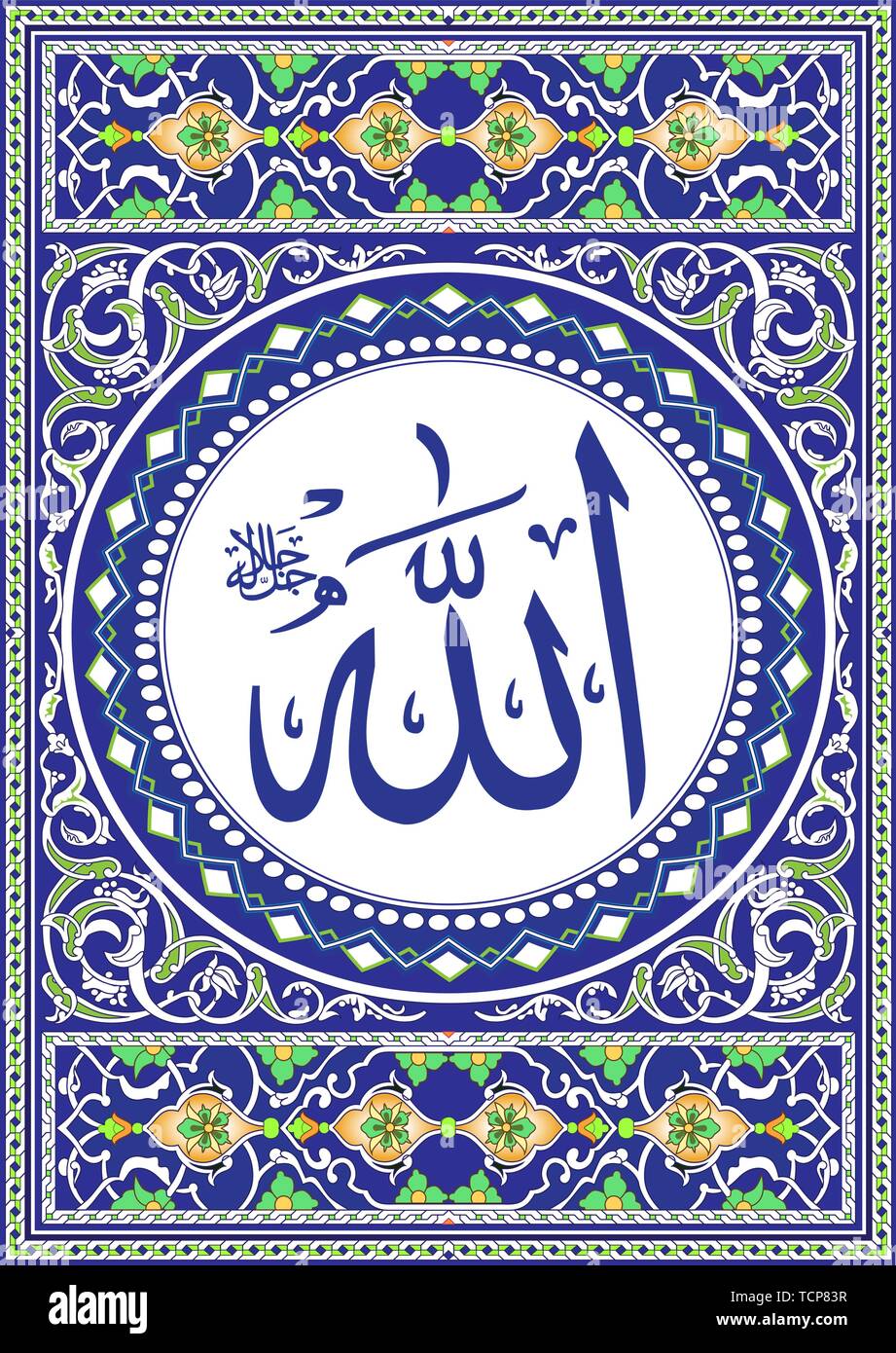 Allah & Muhammad Islamic Art decorating wall art Stock Vectorhttps://www.alamy.com/image-license-details/?v=1https://www.alamy.com/allah-muhammad-islamic-art-decorating-wall-art-image248810347.html
Allah & Muhammad Islamic Art decorating wall art Stock Vectorhttps://www.alamy.com/image-license-details/?v=1https://www.alamy.com/allah-muhammad-islamic-art-decorating-wall-art-image248810347.htmlRFTCP83R–Allah & Muhammad Islamic Art decorating wall art
 A Kashmiri woman distributing the toffees (believed as relique) outside the Hazratbal Shrine in Srinagar summer capital of Indian Kashmir on occasion of Mehraj-ul-Nabi. Every year thousands of Muslim devotees from across Kashmir gathers at Hazratbal shrine in central Srinagar summer capital of Indian Kashmir for prayers and to watch the Holy Relic (moe-e-moqadas) believed to be a hair from the beard of Prophet Mohammed PBUH, displayed for public on Meraj-ul Alam and other festivals. Mehraj-ul-Alam, A festival which marks the ascension Of Prophet Muhammad PBUH To Heaven. Stock Photohttps://www.alamy.com/image-license-details/?v=1https://www.alamy.com/a-kashmiri-woman-distributing-the-toffees-believed-as-relique-outside-the-hazratbal-shrine-in-srinagar-summer-capital-of-indian-kashmir-on-occasion-of-mehraj-ul-nabi-every-year-thousands-of-muslim-devotees-from-across-kashmir-gathers-at-hazratbal-shrine-in-central-srinagar-summer-capital-of-indian-kashmir-for-prayers-and-to-watch-the-holy-relic-moe-e-moqadas-believed-to-be-a-hair-from-the-beard-of-prophet-mohammed-pbuh-displayed-for-public-on-meraj-ul-alam-and-other-festivals-mehraj-ul-alam-a-festival-which-marks-the-ascension-of-prophet-muhammad-pbuh-to-heaven-image179704133.html
A Kashmiri woman distributing the toffees (believed as relique) outside the Hazratbal Shrine in Srinagar summer capital of Indian Kashmir on occasion of Mehraj-ul-Nabi. Every year thousands of Muslim devotees from across Kashmir gathers at Hazratbal shrine in central Srinagar summer capital of Indian Kashmir for prayers and to watch the Holy Relic (moe-e-moqadas) believed to be a hair from the beard of Prophet Mohammed PBUH, displayed for public on Meraj-ul Alam and other festivals. Mehraj-ul-Alam, A festival which marks the ascension Of Prophet Muhammad PBUH To Heaven. Stock Photohttps://www.alamy.com/image-license-details/?v=1https://www.alamy.com/a-kashmiri-woman-distributing-the-toffees-believed-as-relique-outside-the-hazratbal-shrine-in-srinagar-summer-capital-of-indian-kashmir-on-occasion-of-mehraj-ul-nabi-every-year-thousands-of-muslim-devotees-from-across-kashmir-gathers-at-hazratbal-shrine-in-central-srinagar-summer-capital-of-indian-kashmir-for-prayers-and-to-watch-the-holy-relic-moe-e-moqadas-believed-to-be-a-hair-from-the-beard-of-prophet-mohammed-pbuh-displayed-for-public-on-meraj-ul-alam-and-other-festivals-mehraj-ul-alam-a-festival-which-marks-the-ascension-of-prophet-muhammad-pbuh-to-heaven-image179704133.htmlRMMCA6CN–A Kashmiri woman distributing the toffees (believed as relique) outside the Hazratbal Shrine in Srinagar summer capital of Indian Kashmir on occasion of Mehraj-ul-Nabi. Every year thousands of Muslim devotees from across Kashmir gathers at Hazratbal shrine in central Srinagar summer capital of Indian Kashmir for prayers and to watch the Holy Relic (moe-e-moqadas) believed to be a hair from the beard of Prophet Mohammed PBUH, displayed for public on Meraj-ul Alam and other festivals. Mehraj-ul-Alam, A festival which marks the ascension Of Prophet Muhammad PBUH To Heaven.
 Al-Aqsa Mosque (Al-Masjid al-Aqsa), in the Old City of Jerusalem, is the third holiest site in Islam. The mosque was built on top of the Temple Mount, known as Haram esh-Sharif in Islam. Muslims believe that Muhammad was transported from the Sacred Mosque in Mecca to al-Aqsa during the Night Journey. Islamic tradition holds that Muhammad led prayers towards this site until the 17th month after his migration from Mecca to Medina, when Allah directed him to turn towards the Kaaba in Mecca. The mosque was completely destroyed by an earthquake in 746 and rebuilt by the Abbasid caliph al-Mansur in Stock Photohttps://www.alamy.com/image-license-details/?v=1https://www.alamy.com/al-aqsa-mosque-al-masjid-al-aqsa-in-the-old-city-of-jerusalem-is-the-third-holiest-site-in-islam-the-mosque-was-built-on-top-of-the-temple-mount-known-as-haram-esh-sharif-in-islam-muslims-believe-that-muhammad-was-transported-from-the-sacred-mosque-in-mecca-to-al-aqsa-during-the-night-journey-islamic-tradition-holds-that-muhammad-led-prayers-towards-this-site-until-the-17th-month-after-his-migration-from-mecca-to-medina-when-allah-directed-him-to-turn-towards-the-kaaba-in-mecca-the-mosque-was-completely-destroyed-by-an-earthquake-in-746-and-rebuilt-by-the-abbasid-caliph-al-mansur-in-image634313201.html
Al-Aqsa Mosque (Al-Masjid al-Aqsa), in the Old City of Jerusalem, is the third holiest site in Islam. The mosque was built on top of the Temple Mount, known as Haram esh-Sharif in Islam. Muslims believe that Muhammad was transported from the Sacred Mosque in Mecca to al-Aqsa during the Night Journey. Islamic tradition holds that Muhammad led prayers towards this site until the 17th month after his migration from Mecca to Medina, when Allah directed him to turn towards the Kaaba in Mecca. The mosque was completely destroyed by an earthquake in 746 and rebuilt by the Abbasid caliph al-Mansur in Stock Photohttps://www.alamy.com/image-license-details/?v=1https://www.alamy.com/al-aqsa-mosque-al-masjid-al-aqsa-in-the-old-city-of-jerusalem-is-the-third-holiest-site-in-islam-the-mosque-was-built-on-top-of-the-temple-mount-known-as-haram-esh-sharif-in-islam-muslims-believe-that-muhammad-was-transported-from-the-sacred-mosque-in-mecca-to-al-aqsa-during-the-night-journey-islamic-tradition-holds-that-muhammad-led-prayers-towards-this-site-until-the-17th-month-after-his-migration-from-mecca-to-medina-when-allah-directed-him-to-turn-towards-the-kaaba-in-mecca-the-mosque-was-completely-destroyed-by-an-earthquake-in-746-and-rebuilt-by-the-abbasid-caliph-al-mansur-in-image634313201.htmlRM2YRYCXW–Al-Aqsa Mosque (Al-Masjid al-Aqsa), in the Old City of Jerusalem, is the third holiest site in Islam. The mosque was built on top of the Temple Mount, known as Haram esh-Sharif in Islam. Muslims believe that Muhammad was transported from the Sacred Mosque in Mecca to al-Aqsa during the Night Journey. Islamic tradition holds that Muhammad led prayers towards this site until the 17th month after his migration from Mecca to Medina, when Allah directed him to turn towards the Kaaba in Mecca. The mosque was completely destroyed by an earthquake in 746 and rebuilt by the Abbasid caliph al-Mansur in
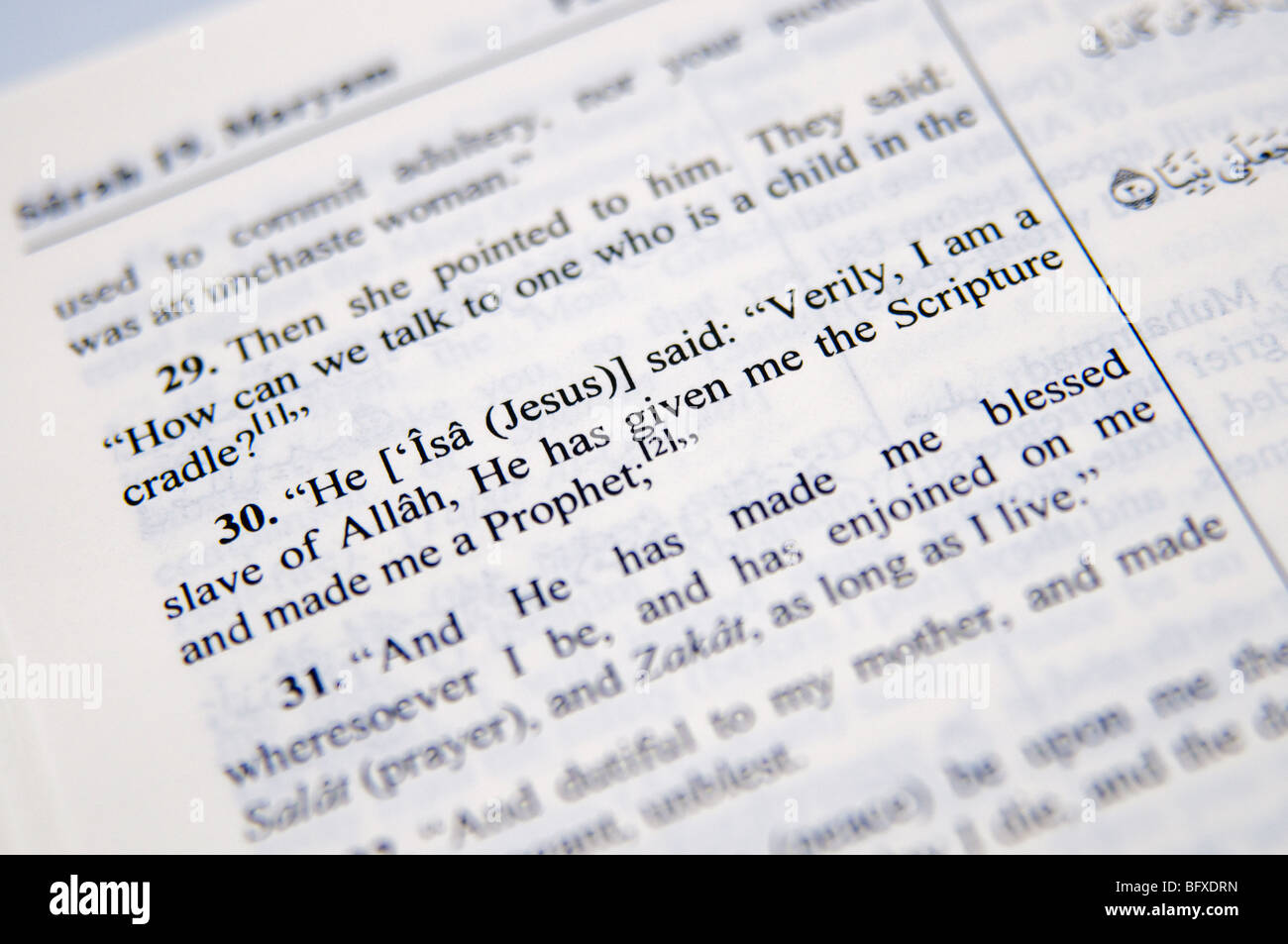 Jesus said 'I am the slave of Allah' - The Noble Qur'an Stock Photohttps://www.alamy.com/image-license-details/?v=1https://www.alamy.com/stock-photo-jesus-said-i-am-the-slave-of-allah-the-noble-quran-27011817.html
Jesus said 'I am the slave of Allah' - The Noble Qur'an Stock Photohttps://www.alamy.com/image-license-details/?v=1https://www.alamy.com/stock-photo-jesus-said-i-am-the-slave-of-allah-the-noble-quran-27011817.htmlRFBFXDRN–Jesus said 'I am the slave of Allah' - The Noble Qur'an
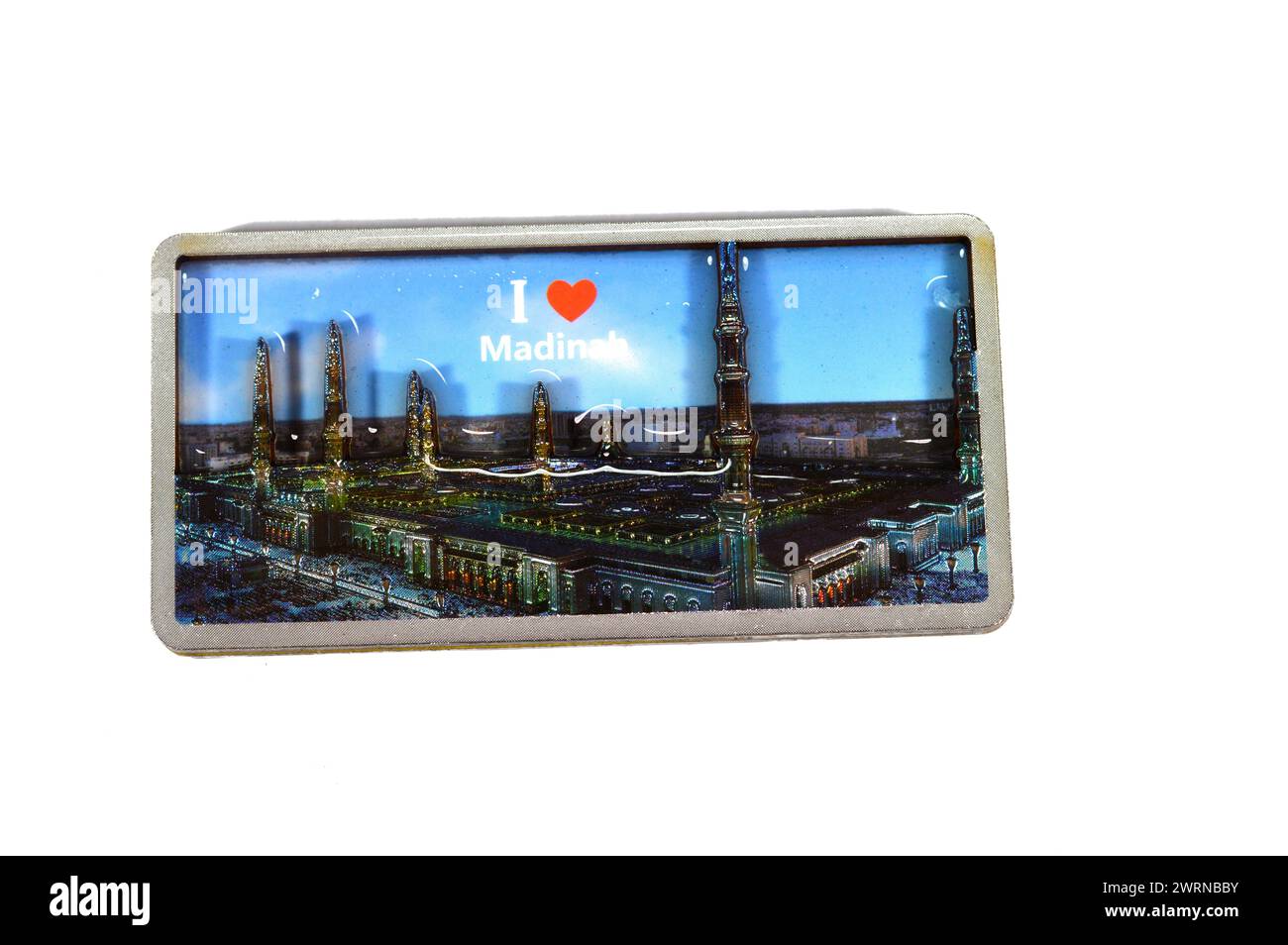 Medina fridge magnet in the shape of the Prophet's Mosque, refrigerator magnet of Madinah mosque in Saudi Arabia kingdom, it is the second mosque buil Stock Photohttps://www.alamy.com/image-license-details/?v=1https://www.alamy.com/medina-fridge-magnet-in-the-shape-of-the-prophets-mosque-refrigerator-magnet-of-madinah-mosque-in-saudi-arabia-kingdom-it-is-the-second-mosque-buil-image599759551.html
Medina fridge magnet in the shape of the Prophet's Mosque, refrigerator magnet of Madinah mosque in Saudi Arabia kingdom, it is the second mosque buil Stock Photohttps://www.alamy.com/image-license-details/?v=1https://www.alamy.com/medina-fridge-magnet-in-the-shape-of-the-prophets-mosque-refrigerator-magnet-of-madinah-mosque-in-saudi-arabia-kingdom-it-is-the-second-mosque-buil-image599759551.htmlRF2WRNBBY–Medina fridge magnet in the shape of the Prophet's Mosque, refrigerator magnet of Madinah mosque in Saudi Arabia kingdom, it is the second mosque buil
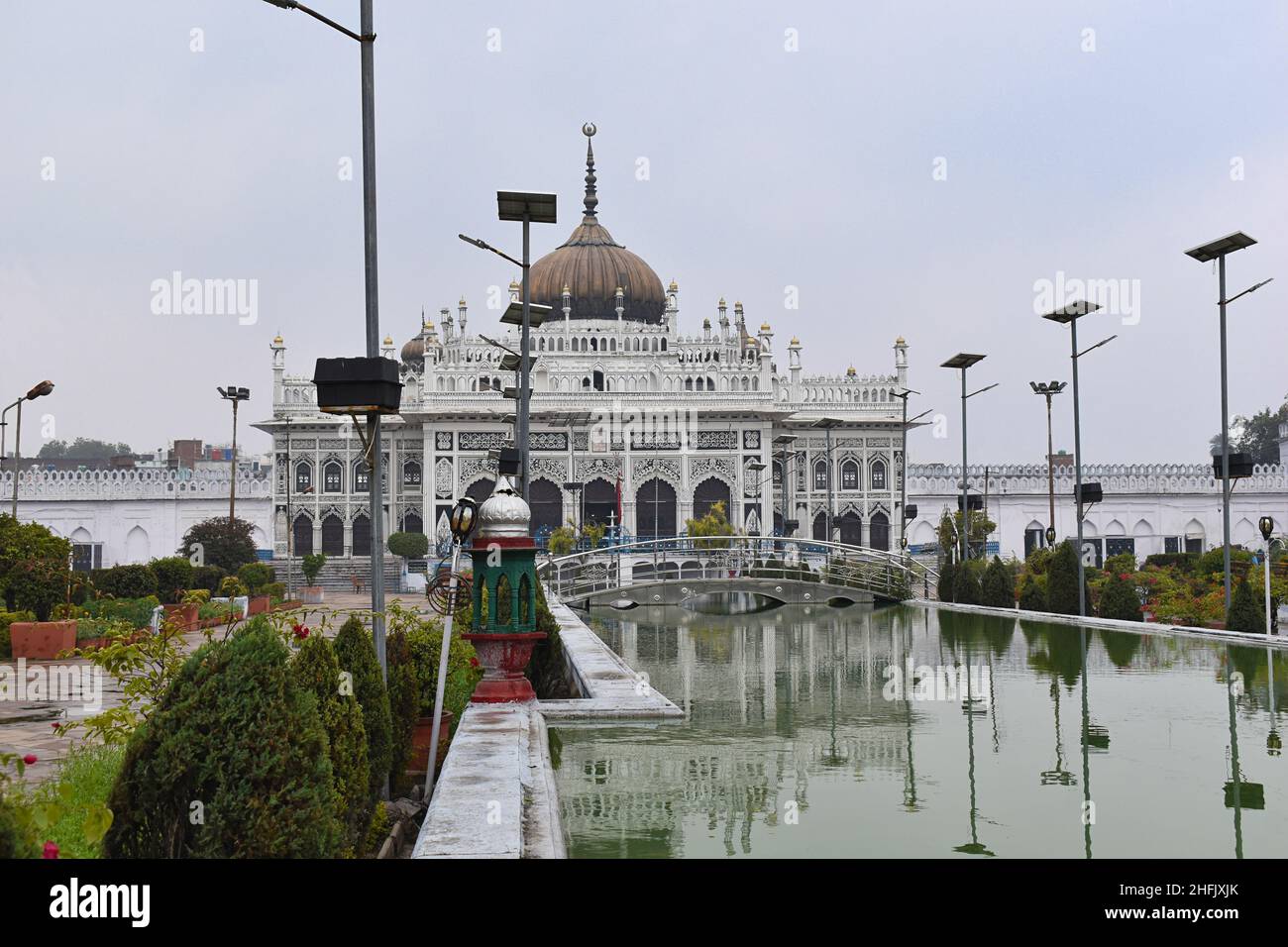 Rear view Chota Imambara initially a congregation hall for Shia Muslims. Built by Muhammad Ali Shah, Lucknow, Uttar Pradesh, India Stock Photohttps://www.alamy.com/image-license-details/?v=1https://www.alamy.com/rear-view-chota-imambara-initially-a-congregation-hall-for-shia-muslims-built-by-muhammad-ali-shah-lucknow-uttar-pradesh-india-image457105451.html
Rear view Chota Imambara initially a congregation hall for Shia Muslims. Built by Muhammad Ali Shah, Lucknow, Uttar Pradesh, India Stock Photohttps://www.alamy.com/image-license-details/?v=1https://www.alamy.com/rear-view-chota-imambara-initially-a-congregation-hall-for-shia-muslims-built-by-muhammad-ali-shah-lucknow-uttar-pradesh-india-image457105451.htmlRF2HFJXJK–Rear view Chota Imambara initially a congregation hall for Shia Muslims. Built by Muhammad Ali Shah, Lucknow, Uttar Pradesh, India
 Calligraphic Composition in Ghubari Script second half 19th century The names of the Ahl al-Bayt or Panj tan, the five holy figures central to Shi’i piety, appear on a wide range of objects including weapons, armor, and military accoutrements from Iran, India, and other regions with large Shi’ite populations. At the top of this calligraphic composition, a rectangular cartouche bears the words 'Allah,' 'Muhammad,' and '?Ali' against a ground of micrographia of Qur’anic verses. Below, the names 'Fatima' (the youngest daughter of the Prophet Muhammad and ?Ali’s wife) and 'Hasan and Husain' (their Stock Photohttps://www.alamy.com/image-license-details/?v=1https://www.alamy.com/calligraphic-composition-in-ghubari-script-second-half-19th-century-the-names-of-the-ahl-al-bayt-or-panj-tan-the-five-holy-figures-central-to-shii-piety-appear-on-a-wide-range-of-objects-including-weapons-armor-and-military-accoutrements-from-iran-india-and-other-regions-with-large-shiite-populations-at-the-top-of-this-calligraphic-composition-a-rectangular-cartouche-bears-the-words-allah-muhammad-and-ali-against-a-ground-of-micrographia-of-quranic-verses-below-the-names-fatima-the-youngest-daughter-of-the-prophet-muhammad-and-alis-wife-and-hasan-and-husain-their-image457865098.html
Calligraphic Composition in Ghubari Script second half 19th century The names of the Ahl al-Bayt or Panj tan, the five holy figures central to Shi’i piety, appear on a wide range of objects including weapons, armor, and military accoutrements from Iran, India, and other regions with large Shi’ite populations. At the top of this calligraphic composition, a rectangular cartouche bears the words 'Allah,' 'Muhammad,' and '?Ali' against a ground of micrographia of Qur’anic verses. Below, the names 'Fatima' (the youngest daughter of the Prophet Muhammad and ?Ali’s wife) and 'Hasan and Husain' (their Stock Photohttps://www.alamy.com/image-license-details/?v=1https://www.alamy.com/calligraphic-composition-in-ghubari-script-second-half-19th-century-the-names-of-the-ahl-al-bayt-or-panj-tan-the-five-holy-figures-central-to-shii-piety-appear-on-a-wide-range-of-objects-including-weapons-armor-and-military-accoutrements-from-iran-india-and-other-regions-with-large-shiite-populations-at-the-top-of-this-calligraphic-composition-a-rectangular-cartouche-bears-the-words-allah-muhammad-and-ali-against-a-ground-of-micrographia-of-quranic-verses-below-the-names-fatima-the-youngest-daughter-of-the-prophet-muhammad-and-alis-wife-and-hasan-and-husain-their-image457865098.htmlRM2HGWFGX–Calligraphic Composition in Ghubari Script second half 19th century The names of the Ahl al-Bayt or Panj tan, the five holy figures central to Shi’i piety, appear on a wide range of objects including weapons, armor, and military accoutrements from Iran, India, and other regions with large Shi’ite populations. At the top of this calligraphic composition, a rectangular cartouche bears the words 'Allah,' 'Muhammad,' and '?Ali' against a ground of micrographia of Qur’anic verses. Below, the names 'Fatima' (the youngest daughter of the Prophet Muhammad and ?Ali’s wife) and 'Hasan and Husain' (their
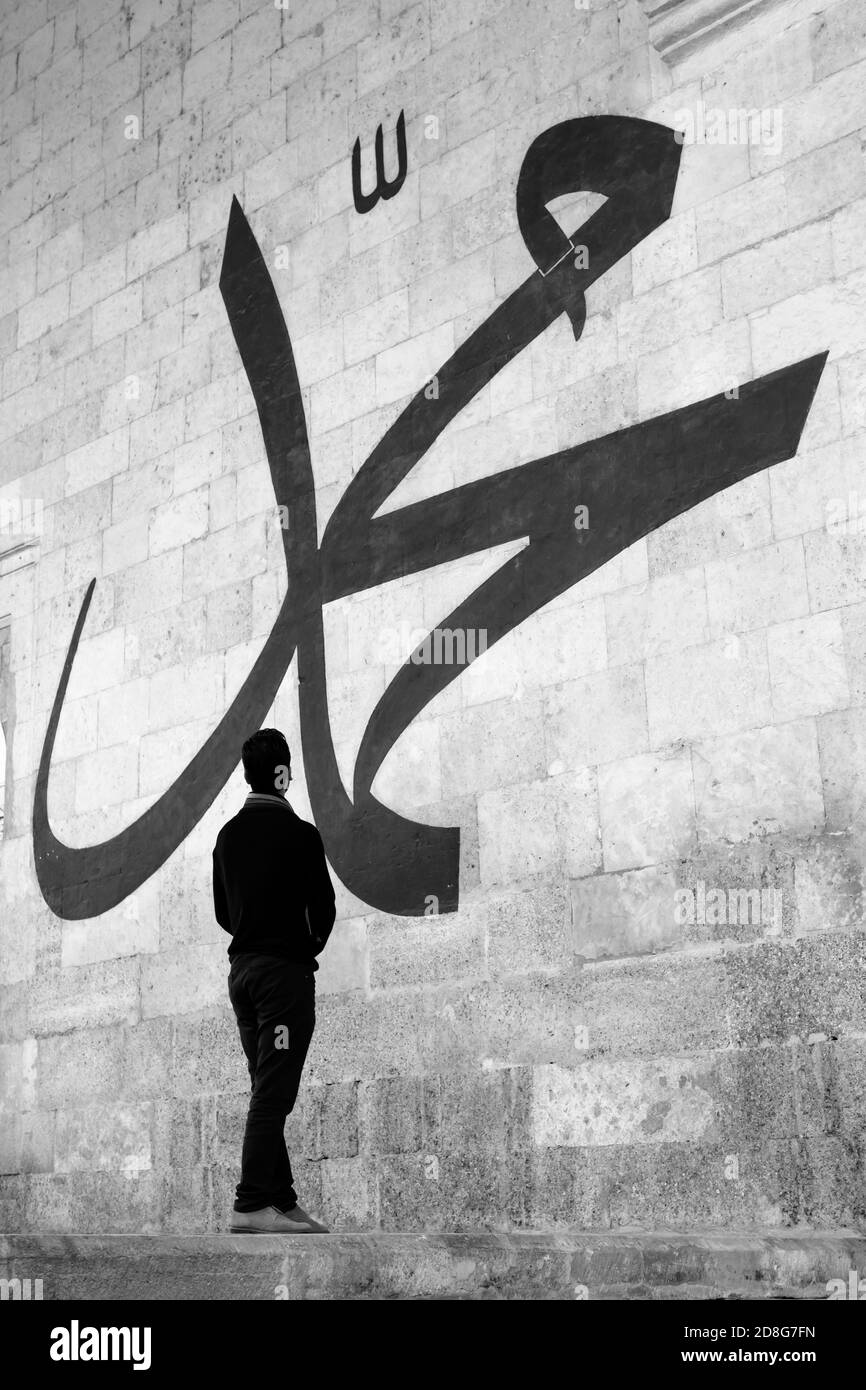 Young Man Staring at the Arabic Calligraphy meaning 'Prophet Muhammad' on the Wall of old Edirne Mosque Stock Photohttps://www.alamy.com/image-license-details/?v=1https://www.alamy.com/young-man-staring-at-the-arabic-calligraphy-meaning-prophet-muhammad-on-the-wall-of-old-edirne-mosque-image383902505.html
Young Man Staring at the Arabic Calligraphy meaning 'Prophet Muhammad' on the Wall of old Edirne Mosque Stock Photohttps://www.alamy.com/image-license-details/?v=1https://www.alamy.com/young-man-staring-at-the-arabic-calligraphy-meaning-prophet-muhammad-on-the-wall-of-old-edirne-mosque-image383902505.htmlRF2D8G7FN–Young Man Staring at the Arabic Calligraphy meaning 'Prophet Muhammad' on the Wall of old Edirne Mosque
 Top view islamic pastries with red rose Stock Photohttps://www.alamy.com/image-license-details/?v=1https://www.alamy.com/top-view-islamic-pastries-with-red-rose-image572363528.html
Top view islamic pastries with red rose Stock Photohttps://www.alamy.com/image-license-details/?v=1https://www.alamy.com/top-view-islamic-pastries-with-red-rose-image572363528.htmlRM2T75BEG–Top view islamic pastries with red rose
 ISTANBUL, Turkey — Large calligraphic medallions display sacred Islamic names in Hagia Sophia, inscribed by master calligrapher Kazasker Mustafa Izzed Effendi. These roundels feature the names of Allah, Muhammad, the first four caliphs, and Muhammad's grandchildren in Arabic script. The monumental medallions represent significant examples of Ottoman calligraphic art. Stock Photohttps://www.alamy.com/image-license-details/?v=1https://www.alamy.com/stock-photo-istanbul-turkey-large-calligraphic-medallions-display-sacred-islamic-79127009.html
ISTANBUL, Turkey — Large calligraphic medallions display sacred Islamic names in Hagia Sophia, inscribed by master calligrapher Kazasker Mustafa Izzed Effendi. These roundels feature the names of Allah, Muhammad, the first four caliphs, and Muhammad's grandchildren in Arabic script. The monumental medallions represent significant examples of Ottoman calligraphic art. Stock Photohttps://www.alamy.com/image-license-details/?v=1https://www.alamy.com/stock-photo-istanbul-turkey-large-calligraphic-medallions-display-sacred-islamic-79127009.htmlRMEGMF8H–ISTANBUL, Turkey — Large calligraphic medallions display sacred Islamic names in Hagia Sophia, inscribed by master calligrapher Kazasker Mustafa Izzed Effendi. These roundels feature the names of Allah, Muhammad, the first four caliphs, and Muhammad's grandchildren in Arabic script. The monumental medallions represent significant examples of Ottoman calligraphic art.
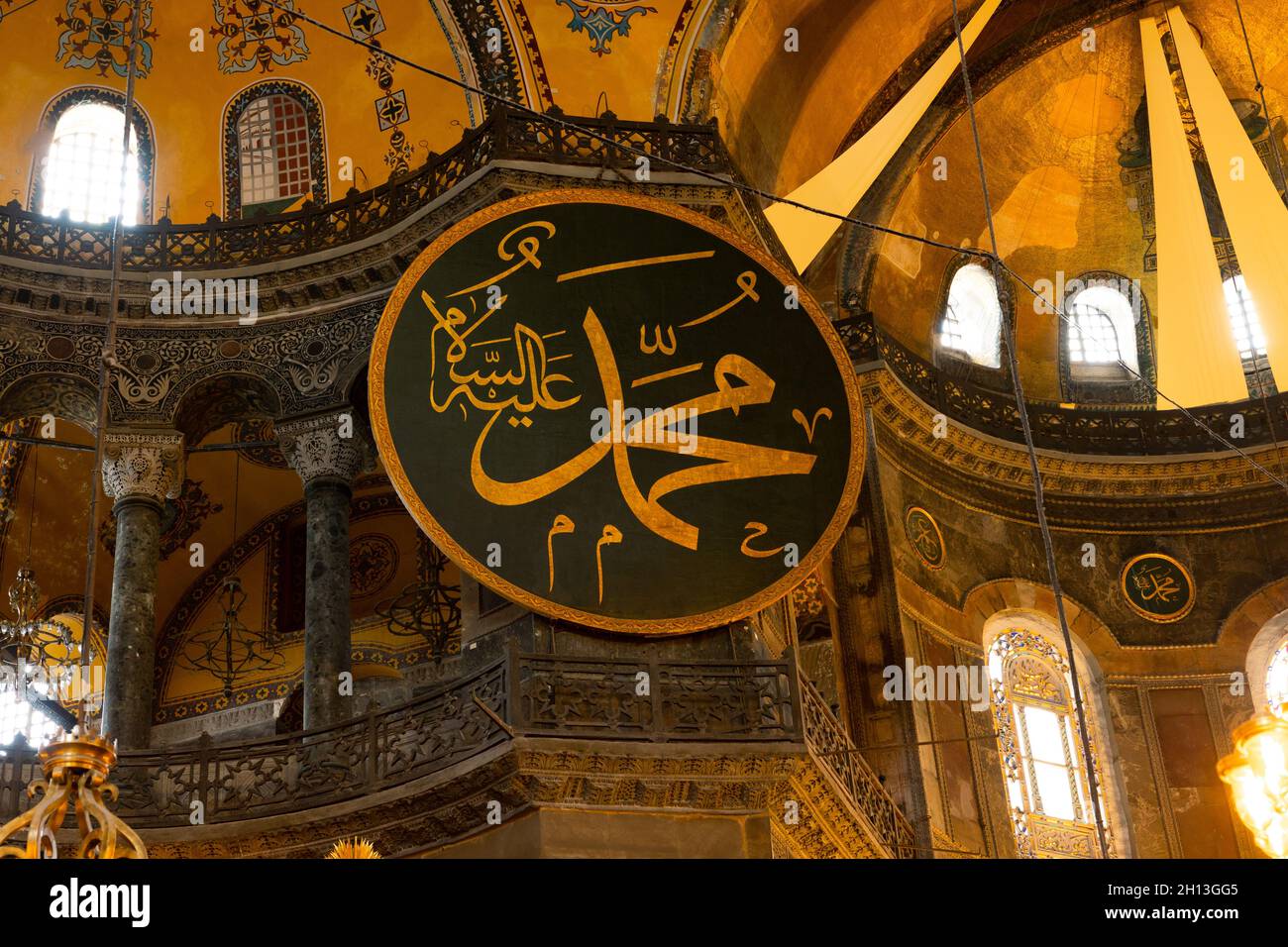 Istanbul Turkey - 10.6.2021: Calligraphy of the name of Prophet Mohammad Stock Photohttps://www.alamy.com/image-license-details/?v=1https://www.alamy.com/istanbul-turkey-1062021-calligraphy-of-the-name-of-prophet-mohammad-image448163077.html
Istanbul Turkey - 10.6.2021: Calligraphy of the name of Prophet Mohammad Stock Photohttps://www.alamy.com/image-license-details/?v=1https://www.alamy.com/istanbul-turkey-1062021-calligraphy-of-the-name-of-prophet-mohammad-image448163077.htmlRF2H13GG5–Istanbul Turkey - 10.6.2021: Calligraphy of the name of Prophet Mohammad
 SURABAYA, INDONESIA - OCTOBER 15, 2019: Al Akbar National Mosque or commonly called the Surabaya Grand Mosque. Stock Photohttps://www.alamy.com/image-license-details/?v=1https://www.alamy.com/surabaya-indonesia-october-15-2019-al-akbar-national-mosque-or-commonly-called-the-surabaya-grand-mosque-image453663847.html
SURABAYA, INDONESIA - OCTOBER 15, 2019: Al Akbar National Mosque or commonly called the Surabaya Grand Mosque. Stock Photohttps://www.alamy.com/image-license-details/?v=1https://www.alamy.com/surabaya-indonesia-october-15-2019-al-akbar-national-mosque-or-commonly-called-the-surabaya-grand-mosque-image453663847.htmlRF2HA24T7–SURABAYA, INDONESIA - OCTOBER 15, 2019: Al Akbar National Mosque or commonly called the Surabaya Grand Mosque.
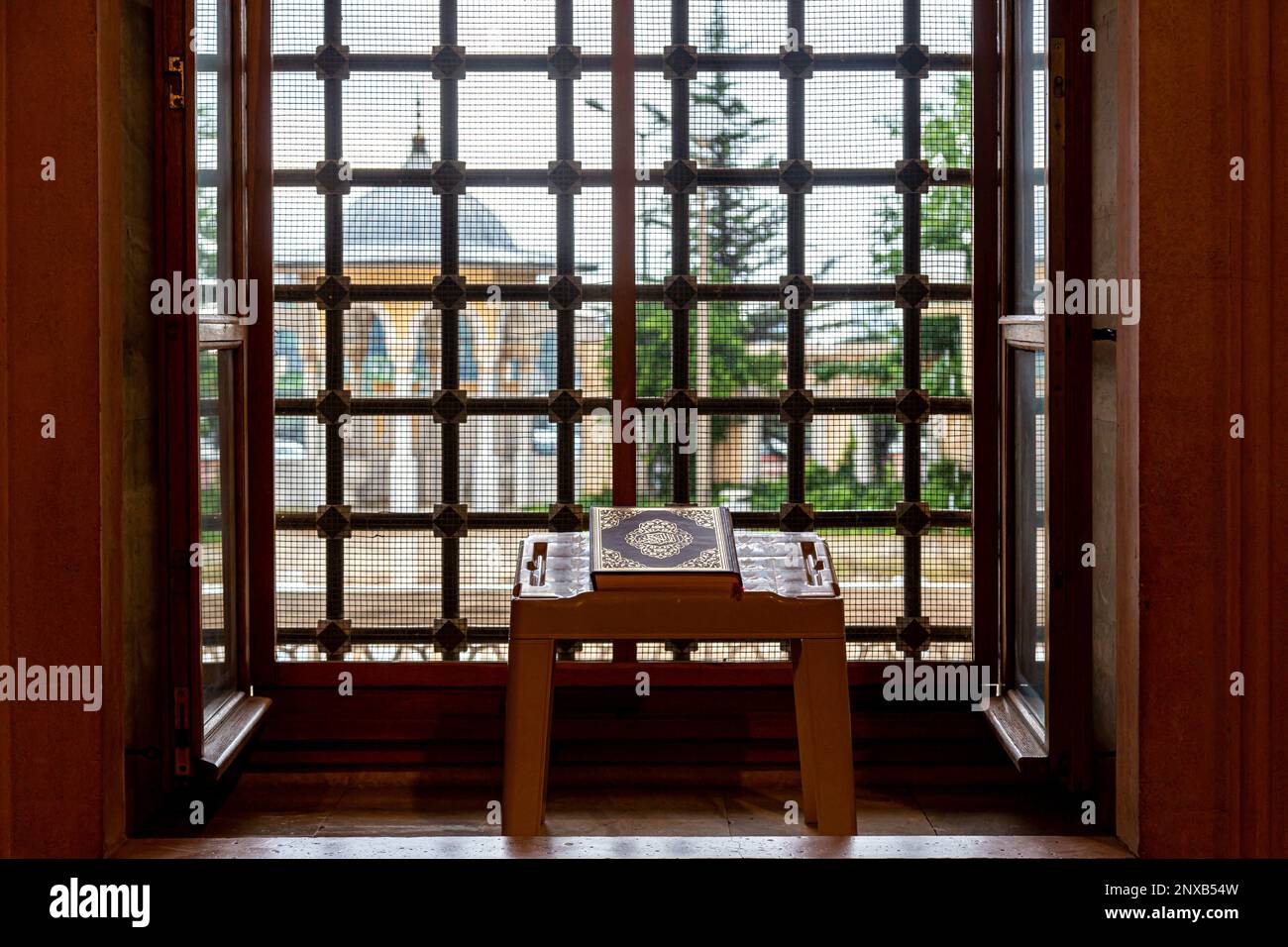 Selective focus, the holy book of the Muslims, the Koran, on the reading table by the barred window. Stock Photohttps://www.alamy.com/image-license-details/?v=1https://www.alamy.com/selective-focus-the-holy-book-of-the-muslims-the-koran-on-the-reading-table-by-the-barred-window-image532537625.html
Selective focus, the holy book of the Muslims, the Koran, on the reading table by the barred window. Stock Photohttps://www.alamy.com/image-license-details/?v=1https://www.alamy.com/selective-focus-the-holy-book-of-the-muslims-the-koran-on-the-reading-table-by-the-barred-window-image532537625.htmlRF2NXB54W–Selective focus, the holy book of the Muslims, the Koran, on the reading table by the barred window.
 Saudi Arabia flag, Statement translation: There is no God but Allah, Muhammad is the Messenger of Allah. Use it for national day and and country natio Stock Photohttps://www.alamy.com/image-license-details/?v=1https://www.alamy.com/saudi-arabia-flag-statement-translation-there-is-no-god-but-allah-muhammad-is-the-messenger-of-allah-use-it-for-national-day-and-and-country-natio-image478385849.html
Saudi Arabia flag, Statement translation: There is no God but Allah, Muhammad is the Messenger of Allah. Use it for national day and and country natio Stock Photohttps://www.alamy.com/image-license-details/?v=1https://www.alamy.com/saudi-arabia-flag-statement-translation-there-is-no-god-but-allah-muhammad-is-the-messenger-of-allah-use-it-for-national-day-and-and-country-natio-image478385849.htmlRF2JP8A0W–Saudi Arabia flag, Statement translation: There is no God but Allah, Muhammad is the Messenger of Allah. Use it for national day and and country natio
 MECCA, SAUDI ARABIA-CIRCA 2016 : Muslim pilgrim in white 'ihram' cloth perform a prayer at Tana'em mosque in Mecca, Saudi Arabia. Stock Photohttps://www.alamy.com/image-license-details/?v=1https://www.alamy.com/mecca-saudi-arabia-circa-2016-muslim-pilgrim-in-white-ihram-cloth-perform-a-prayer-at-tanaem-mosque-in-mecca-saudi-arabia-image236610677.html
MECCA, SAUDI ARABIA-CIRCA 2016 : Muslim pilgrim in white 'ihram' cloth perform a prayer at Tana'em mosque in Mecca, Saudi Arabia. Stock Photohttps://www.alamy.com/image-license-details/?v=1https://www.alamy.com/mecca-saudi-arabia-circa-2016-muslim-pilgrim-in-white-ihram-cloth-perform-a-prayer-at-tanaem-mosque-in-mecca-saudi-arabia-image236610677.htmlRMRMXF99–MECCA, SAUDI ARABIA-CIRCA 2016 : Muslim pilgrim in white 'ihram' cloth perform a prayer at Tana'em mosque in Mecca, Saudi Arabia.
 Minaret of a mosque with blue sky in the background Stock Photohttps://www.alamy.com/image-license-details/?v=1https://www.alamy.com/stock-image-minaret-of-a-mosque-with-blue-sky-in-the-background-163009294.html
Minaret of a mosque with blue sky in the background Stock Photohttps://www.alamy.com/image-license-details/?v=1https://www.alamy.com/stock-image-minaret-of-a-mosque-with-blue-sky-in-the-background-163009294.htmlRFKD5M0E–Minaret of a mosque with blue sky in the background
 Sarajevo, Bosnia: muslim men praying in the direction of Mecca outside the Gazi Husrev-beg Mosque (1532) in the old Bascarsija neighborhood Stock Photohttps://www.alamy.com/image-license-details/?v=1https://www.alamy.com/sarajevo-bosnia-muslim-men-praying-in-the-direction-of-mecca-outside-the-gazi-husrev-beg-mosque-1532-in-the-old-bascarsija-neighborhood-image248029272.html
Sarajevo, Bosnia: muslim men praying in the direction of Mecca outside the Gazi Husrev-beg Mosque (1532) in the old Bascarsija neighborhood Stock Photohttps://www.alamy.com/image-license-details/?v=1https://www.alamy.com/sarajevo-bosnia-muslim-men-praying-in-the-direction-of-mecca-outside-the-gazi-husrev-beg-mosque-1532-in-the-old-bascarsija-neighborhood-image248029272.htmlRFTBEKT8–Sarajevo, Bosnia: muslim men praying in the direction of Mecca outside the Gazi Husrev-beg Mosque (1532) in the old Bascarsija neighborhood
 Iran/Persia: 'Ascent of Muhammad to Heaven'. Gouache painting from the Khamsa of Nizami, by Sultan Muhammad (1470s-1555), c. 1539-1543. The Isra and Mi'raj are the two parts of a Night Journey that, according to Islamic tradition, the Prophet Muhammad took during a single night around the year 621. It considered as both a physical and spiritual journey. In the journey, the Prophet Muhammad travels on the celestial mount Al-Buraq to 'the farthest temple' (Holy Temple of Al-Quds or Jerusalem) where he leads other prophets in prayer. Stock Photohttps://www.alamy.com/image-license-details/?v=1https://www.alamy.com/iranpersia-ascent-of-muhammad-to-heaven-gouache-painting-from-the-khamsa-of-nizami-by-sultan-muhammad-1470s-1555-c-1539-1543-the-isra-and-miraj-are-the-two-parts-of-a-night-journey-that-according-to-islamic-tradition-the-prophet-muhammad-took-during-a-single-night-around-the-year-621-it-considered-as-both-a-physical-and-spiritual-journey-in-the-journey-the-prophet-muhammad-travels-on-the-celestial-mount-al-buraq-to-the-farthest-temple-holy-temple-of-al-quds-or-jerusalem-where-he-leads-other-prophets-in-prayer-image344240547.html
Iran/Persia: 'Ascent of Muhammad to Heaven'. Gouache painting from the Khamsa of Nizami, by Sultan Muhammad (1470s-1555), c. 1539-1543. The Isra and Mi'raj are the two parts of a Night Journey that, according to Islamic tradition, the Prophet Muhammad took during a single night around the year 621. It considered as both a physical and spiritual journey. In the journey, the Prophet Muhammad travels on the celestial mount Al-Buraq to 'the farthest temple' (Holy Temple of Al-Quds or Jerusalem) where he leads other prophets in prayer. Stock Photohttps://www.alamy.com/image-license-details/?v=1https://www.alamy.com/iranpersia-ascent-of-muhammad-to-heaven-gouache-painting-from-the-khamsa-of-nizami-by-sultan-muhammad-1470s-1555-c-1539-1543-the-isra-and-miraj-are-the-two-parts-of-a-night-journey-that-according-to-islamic-tradition-the-prophet-muhammad-took-during-a-single-night-around-the-year-621-it-considered-as-both-a-physical-and-spiritual-journey-in-the-journey-the-prophet-muhammad-travels-on-the-celestial-mount-al-buraq-to-the-farthest-temple-holy-temple-of-al-quds-or-jerusalem-where-he-leads-other-prophets-in-prayer-image344240547.htmlRM2B01E97–Iran/Persia: 'Ascent of Muhammad to Heaven'. Gouache painting from the Khamsa of Nizami, by Sultan Muhammad (1470s-1555), c. 1539-1543. The Isra and Mi'raj are the two parts of a Night Journey that, according to Islamic tradition, the Prophet Muhammad took during a single night around the year 621. It considered as both a physical and spiritual journey. In the journey, the Prophet Muhammad travels on the celestial mount Al-Buraq to 'the farthest temple' (Holy Temple of Al-Quds or Jerusalem) where he leads other prophets in prayer.
 TETOVO, MACEDONIA - December 22, 2024: Aladza painted mosque, Tetovo, Macedonia Stock Photohttps://www.alamy.com/image-license-details/?v=1https://www.alamy.com/tetovo-macedonia-december-22-2024-aladza-painted-mosque-tetovo-macedonia-image636803765.html
TETOVO, MACEDONIA - December 22, 2024: Aladza painted mosque, Tetovo, Macedonia Stock Photohttps://www.alamy.com/image-license-details/?v=1https://www.alamy.com/tetovo-macedonia-december-22-2024-aladza-painted-mosque-tetovo-macedonia-image636803765.htmlRF2S00WKH–TETOVO, MACEDONIA - December 22, 2024: Aladza painted mosque, Tetovo, Macedonia
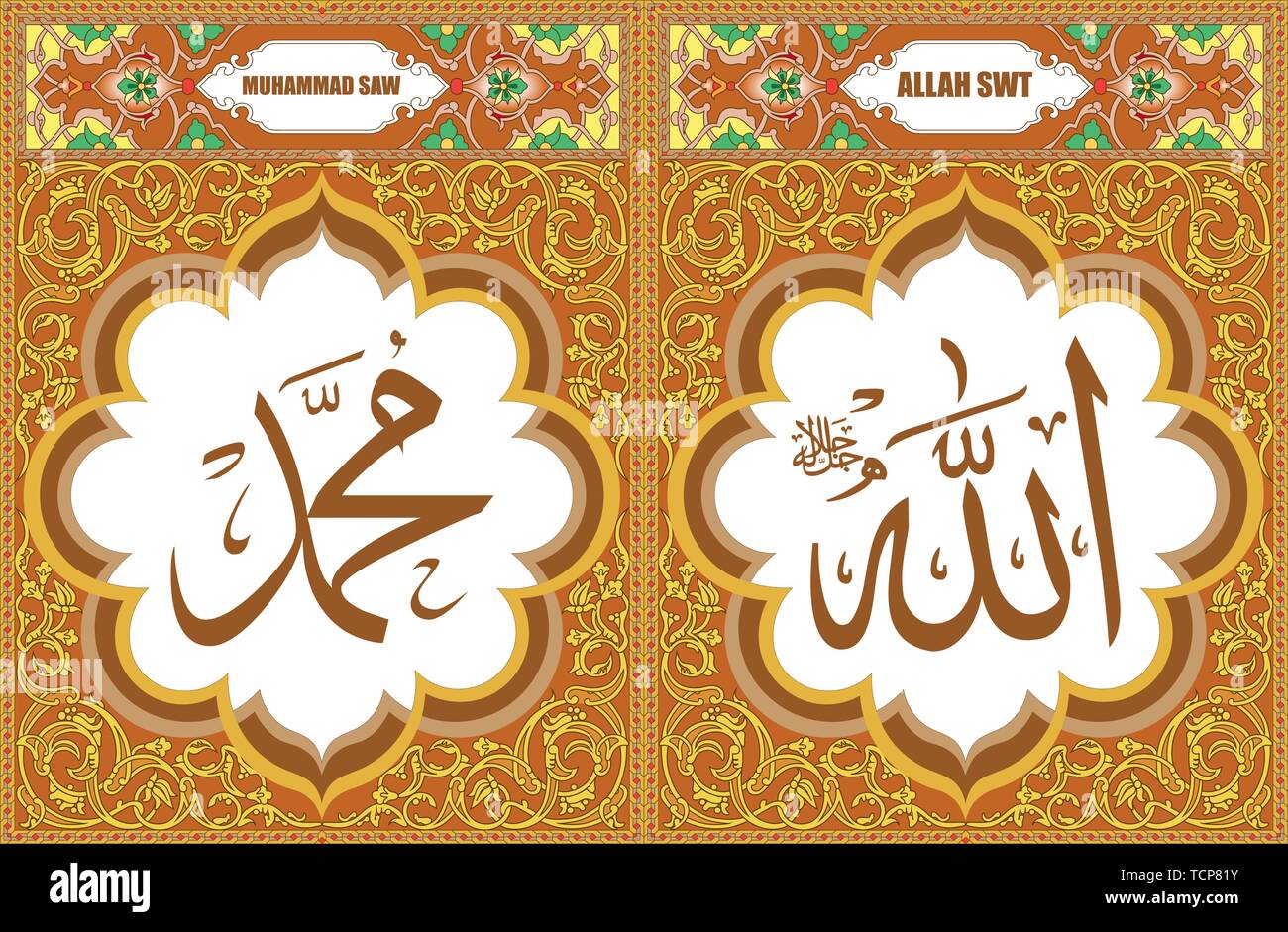 Allah & Muhammad Islamic Art decorating wall art Stock Vectorhttps://www.alamy.com/image-license-details/?v=1https://www.alamy.com/allah-muhammad-islamic-art-decorating-wall-art-image248810295.html
Allah & Muhammad Islamic Art decorating wall art Stock Vectorhttps://www.alamy.com/image-license-details/?v=1https://www.alamy.com/allah-muhammad-islamic-art-decorating-wall-art-image248810295.htmlRFTCP81Y–Allah & Muhammad Islamic Art decorating wall art
 Kashmiri Muslim Devotees beseech for blessings as holy relic is being displayed on the occasion of Mehraj-ul-Alam at Dargah Hazratbal in Srinagar, summer capital of Indian Kashmir. Every year thousands of Muslim devotees from across Kashmir gathers at Hazratbal shrine in central Srinagar summer capital of Indian Kashmir for prayers and to watch the Holy Relic (moe-e-moqadas) believed to be a hair from the beard of Prophet Mohammed PBUH, displayed for public on Meraj-ul Alam and other festivals. Mehraj-ul-Alam, A festival which marks the ascension Of Prophet Muhammad PBUH To Heaven. Stock Photohttps://www.alamy.com/image-license-details/?v=1https://www.alamy.com/kashmiri-muslim-devotees-beseech-for-blessings-as-holy-relic-is-being-displayed-on-the-occasion-of-mehraj-ul-alam-at-dargah-hazratbal-in-srinagar-summer-capital-of-indian-kashmir-every-year-thousands-of-muslim-devotees-from-across-kashmir-gathers-at-hazratbal-shrine-in-central-srinagar-summer-capital-of-indian-kashmir-for-prayers-and-to-watch-the-holy-relic-moe-e-moqadas-believed-to-be-a-hair-from-the-beard-of-prophet-mohammed-pbuh-displayed-for-public-on-meraj-ul-alam-and-other-festivals-mehraj-ul-alam-a-festival-which-marks-the-ascension-of-prophet-muhammad-pbuh-to-heaven-image179704151.html
Kashmiri Muslim Devotees beseech for blessings as holy relic is being displayed on the occasion of Mehraj-ul-Alam at Dargah Hazratbal in Srinagar, summer capital of Indian Kashmir. Every year thousands of Muslim devotees from across Kashmir gathers at Hazratbal shrine in central Srinagar summer capital of Indian Kashmir for prayers and to watch the Holy Relic (moe-e-moqadas) believed to be a hair from the beard of Prophet Mohammed PBUH, displayed for public on Meraj-ul Alam and other festivals. Mehraj-ul-Alam, A festival which marks the ascension Of Prophet Muhammad PBUH To Heaven. Stock Photohttps://www.alamy.com/image-license-details/?v=1https://www.alamy.com/kashmiri-muslim-devotees-beseech-for-blessings-as-holy-relic-is-being-displayed-on-the-occasion-of-mehraj-ul-alam-at-dargah-hazratbal-in-srinagar-summer-capital-of-indian-kashmir-every-year-thousands-of-muslim-devotees-from-across-kashmir-gathers-at-hazratbal-shrine-in-central-srinagar-summer-capital-of-indian-kashmir-for-prayers-and-to-watch-the-holy-relic-moe-e-moqadas-believed-to-be-a-hair-from-the-beard-of-prophet-mohammed-pbuh-displayed-for-public-on-meraj-ul-alam-and-other-festivals-mehraj-ul-alam-a-festival-which-marks-the-ascension-of-prophet-muhammad-pbuh-to-heaven-image179704151.htmlRMMCA6DB–Kashmiri Muslim Devotees beseech for blessings as holy relic is being displayed on the occasion of Mehraj-ul-Alam at Dargah Hazratbal in Srinagar, summer capital of Indian Kashmir. Every year thousands of Muslim devotees from across Kashmir gathers at Hazratbal shrine in central Srinagar summer capital of Indian Kashmir for prayers and to watch the Holy Relic (moe-e-moqadas) believed to be a hair from the beard of Prophet Mohammed PBUH, displayed for public on Meraj-ul Alam and other festivals. Mehraj-ul-Alam, A festival which marks the ascension Of Prophet Muhammad PBUH To Heaven.